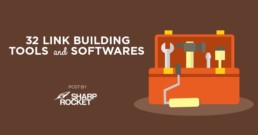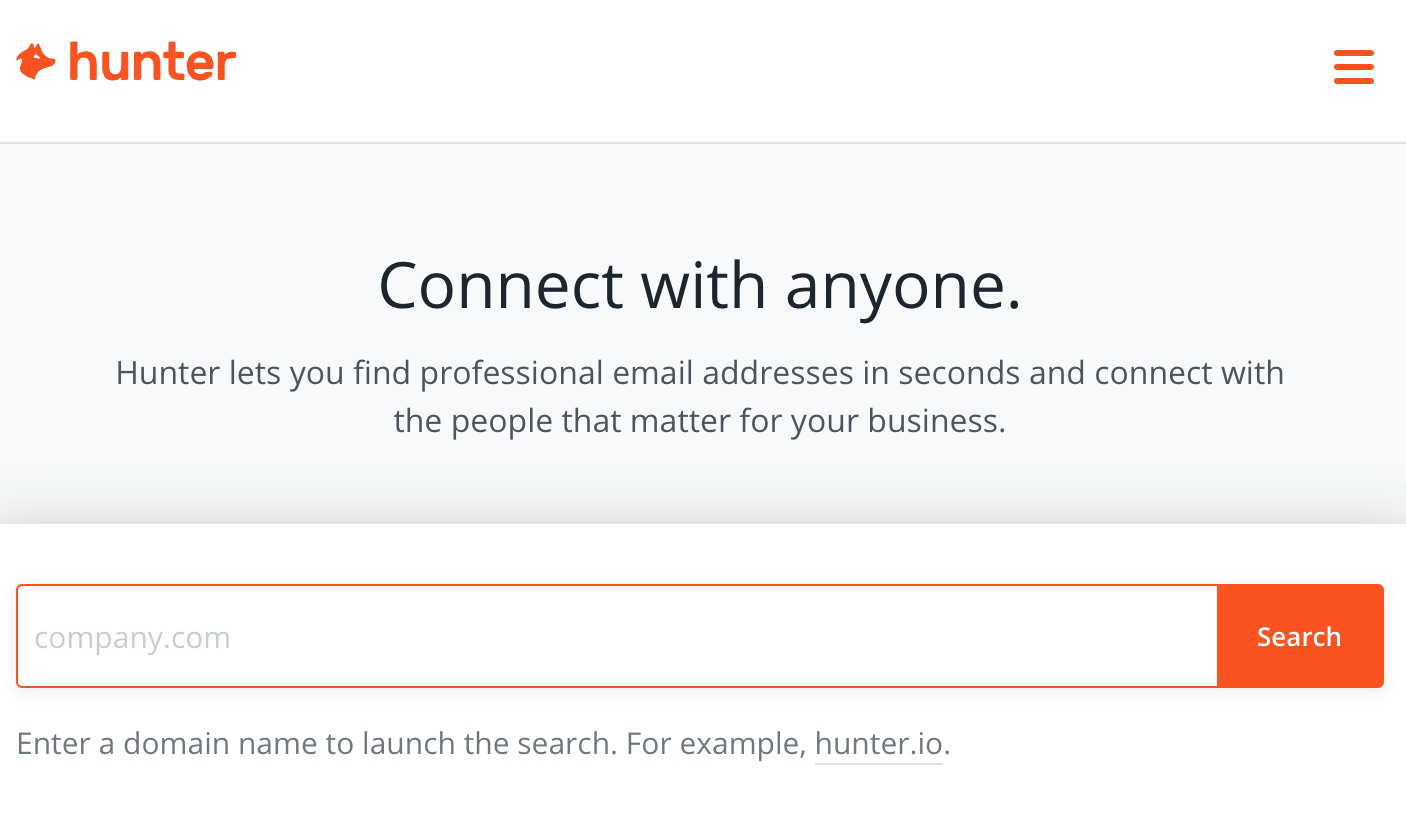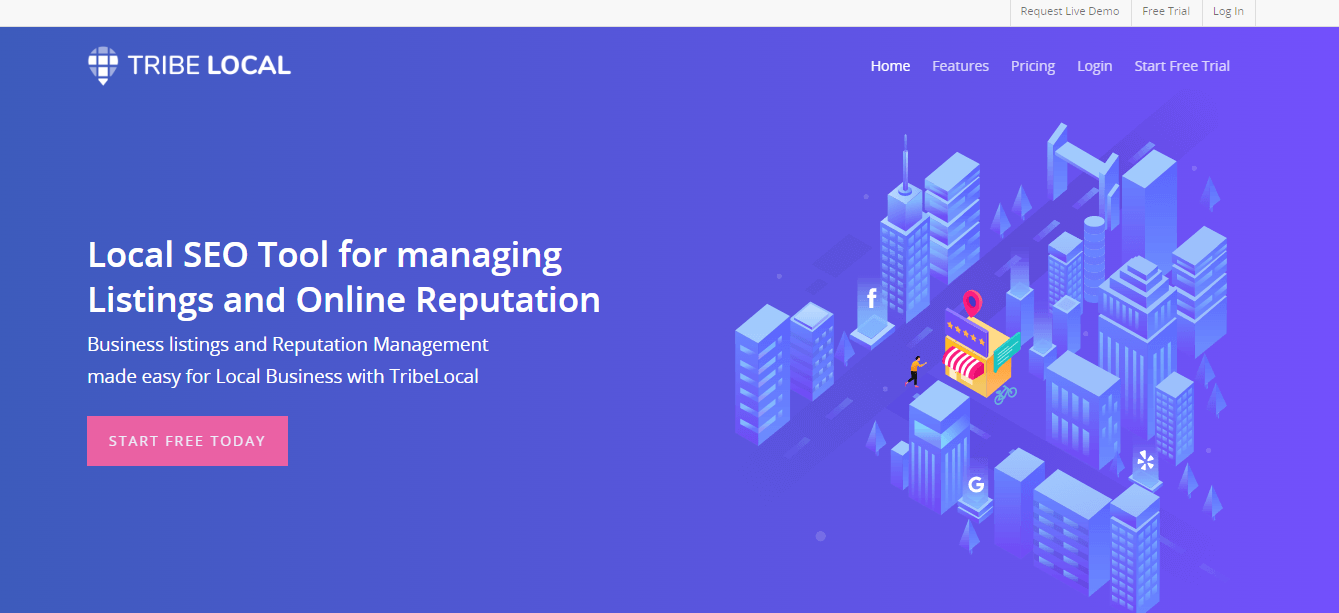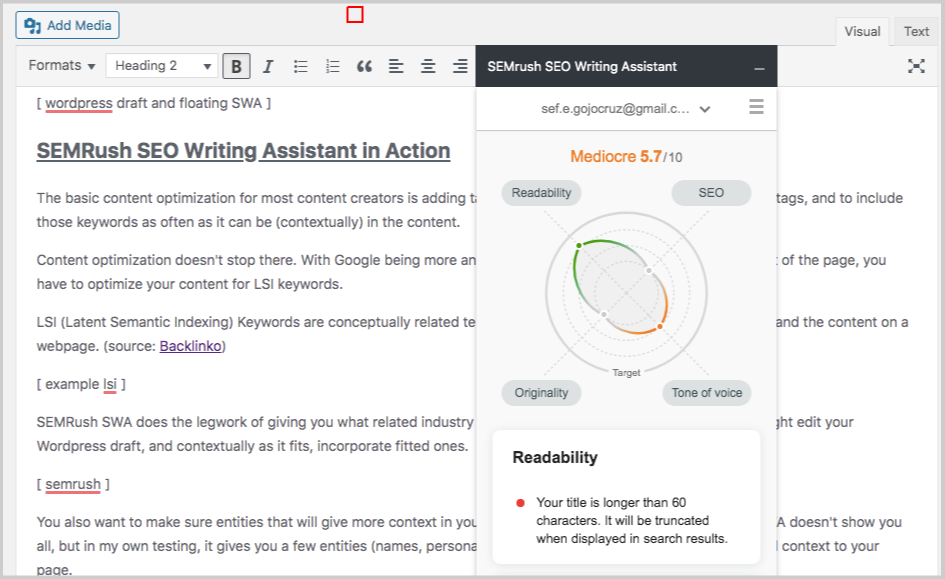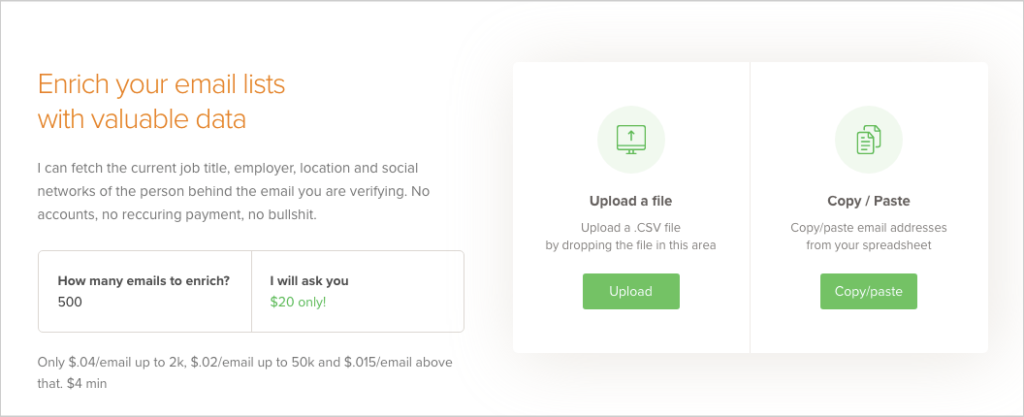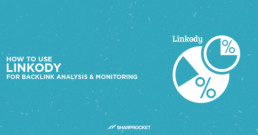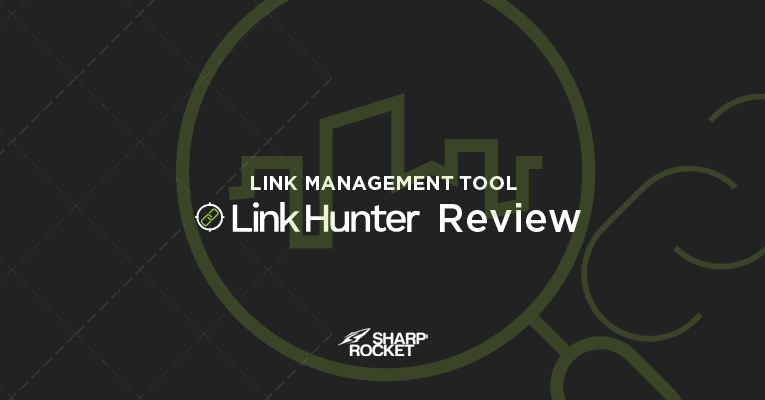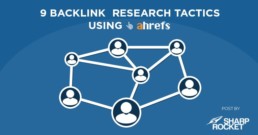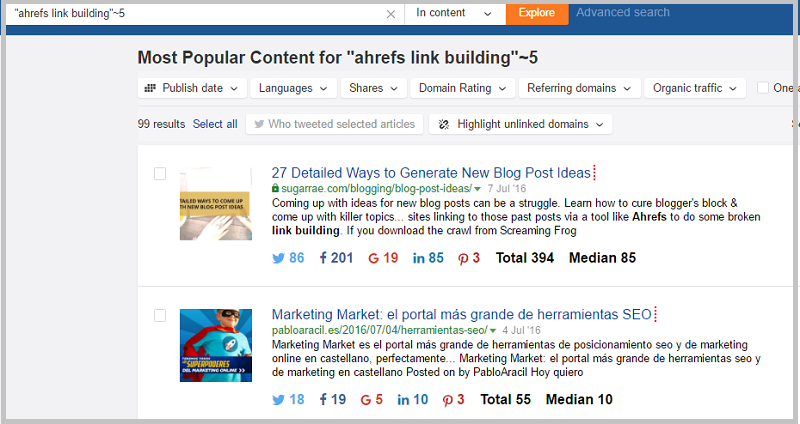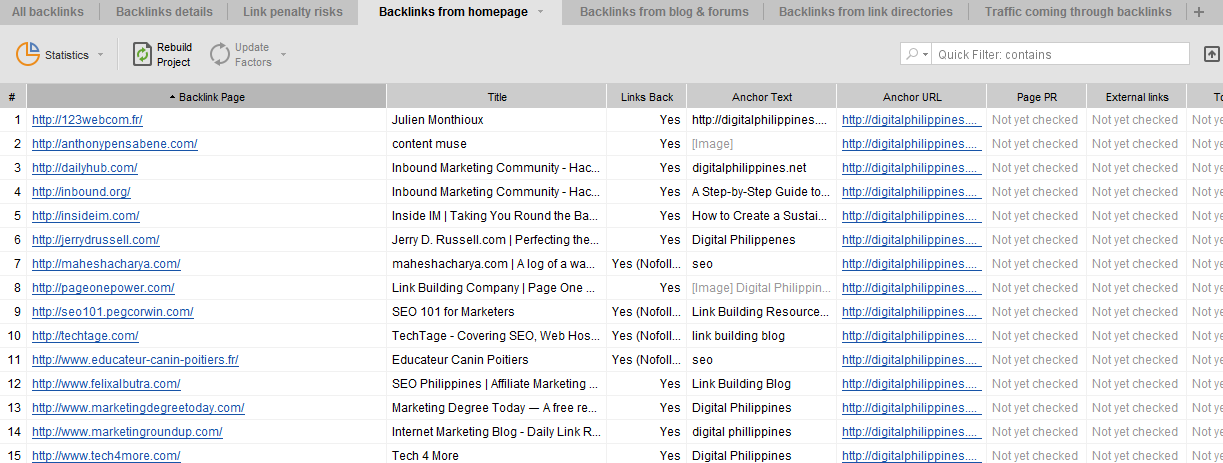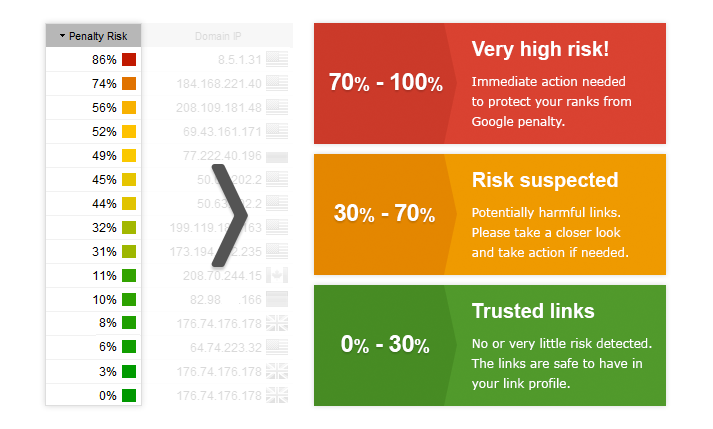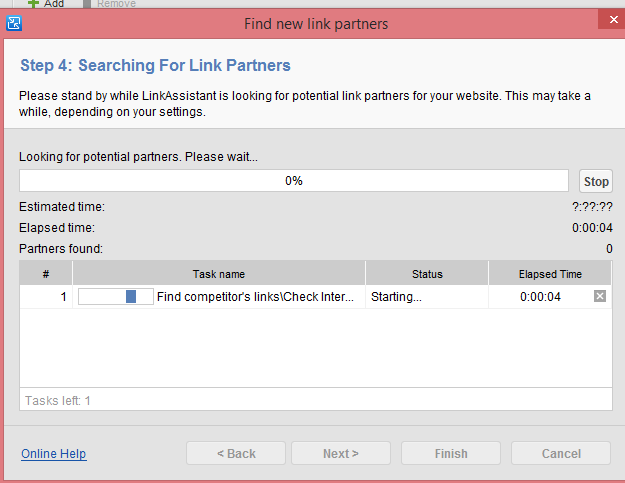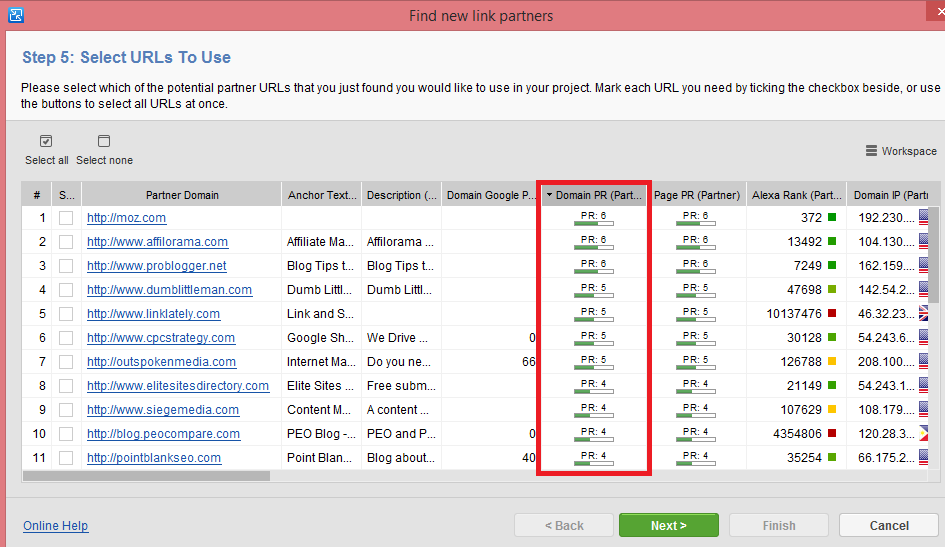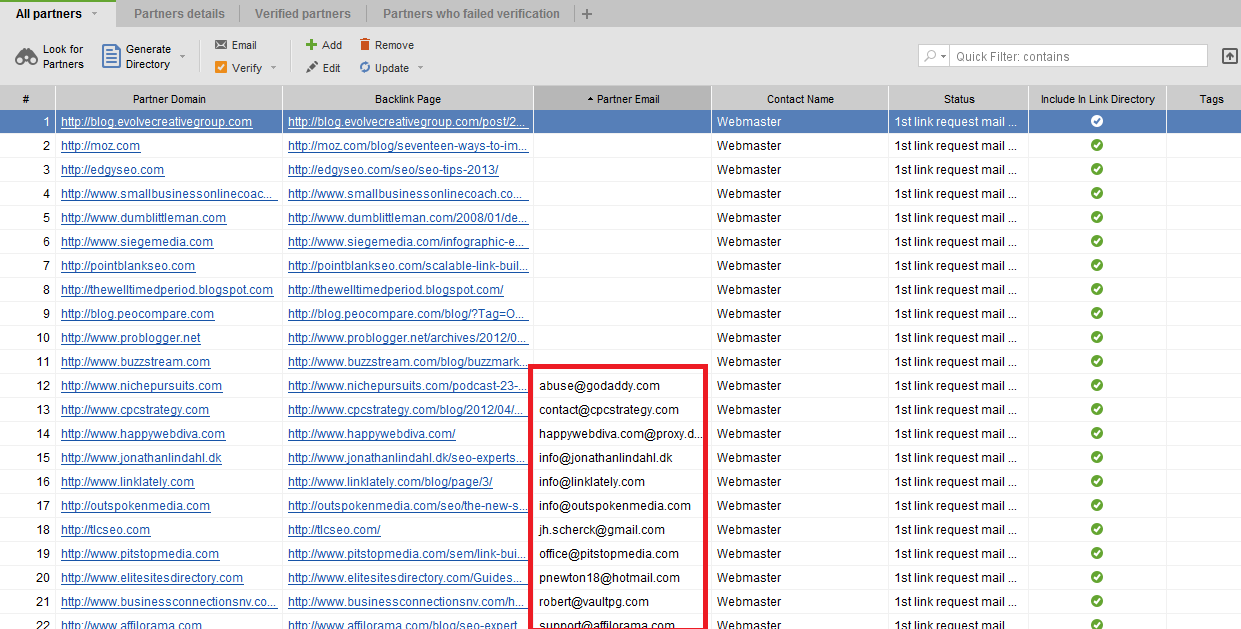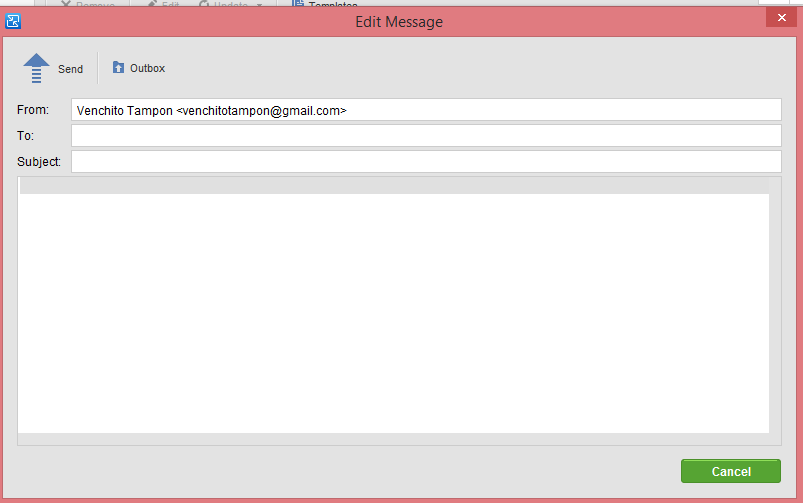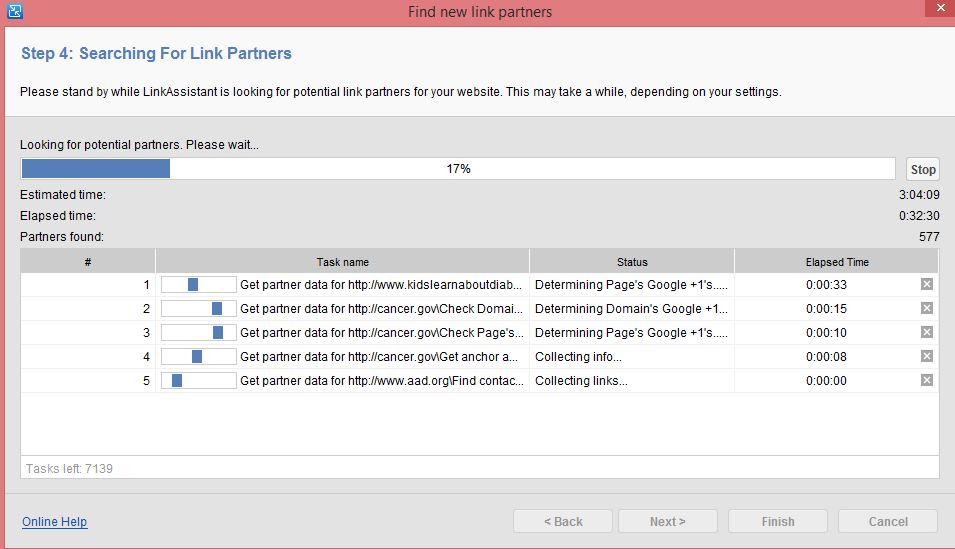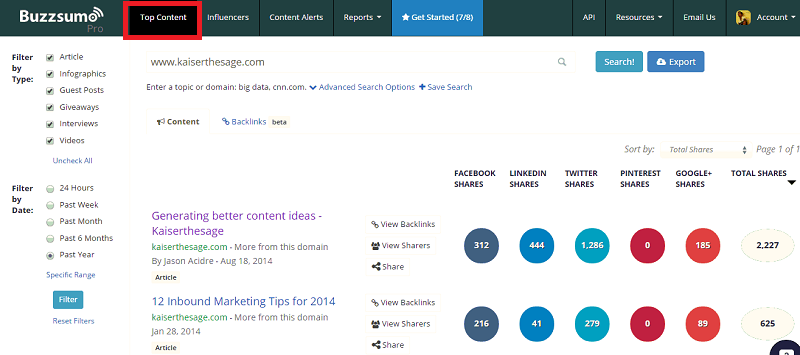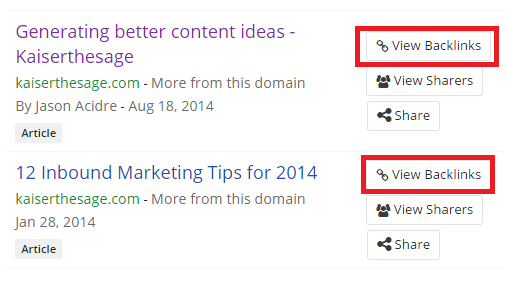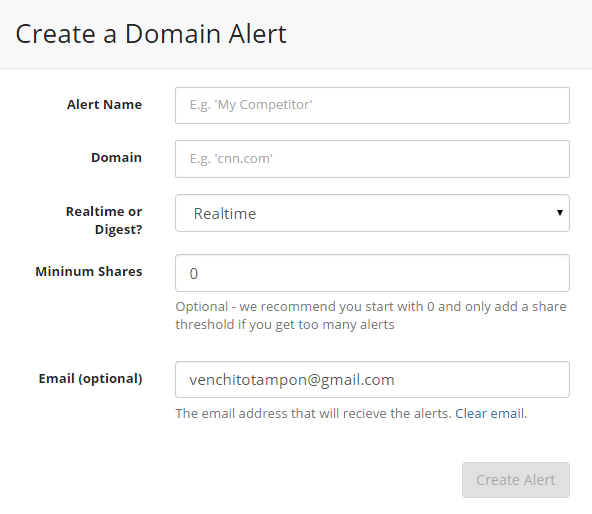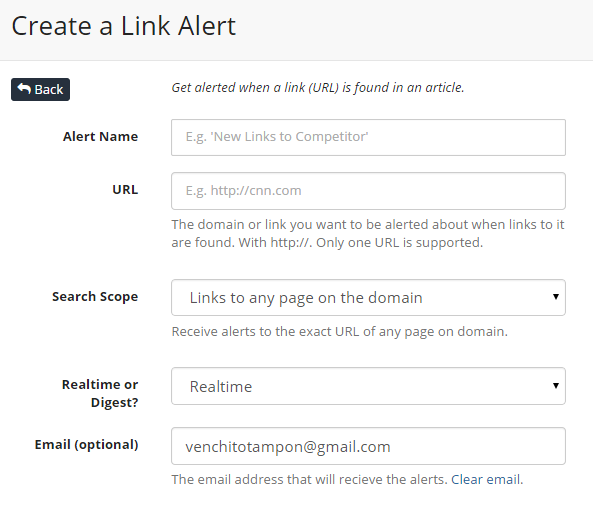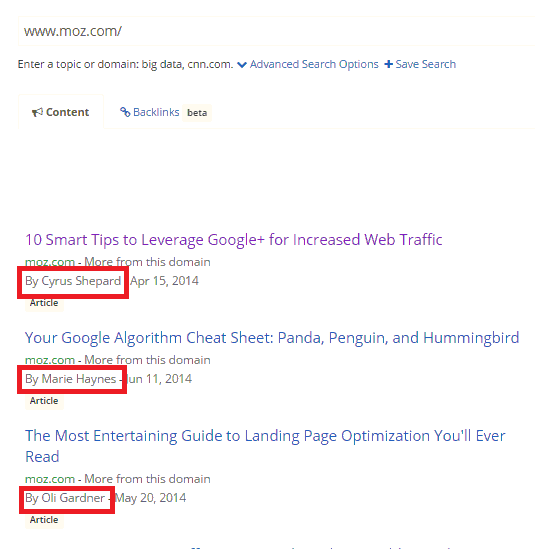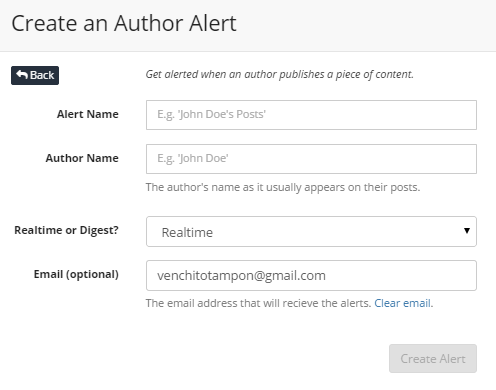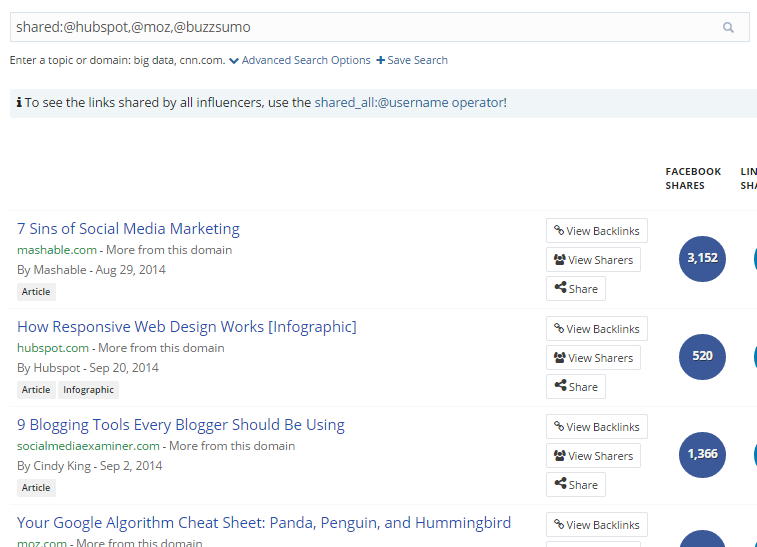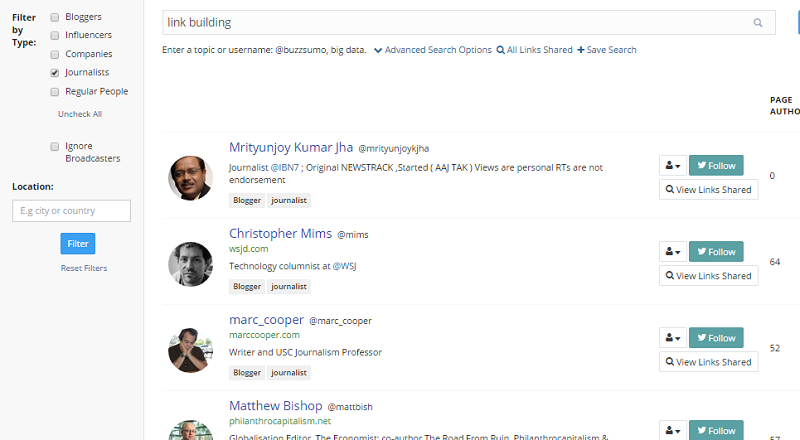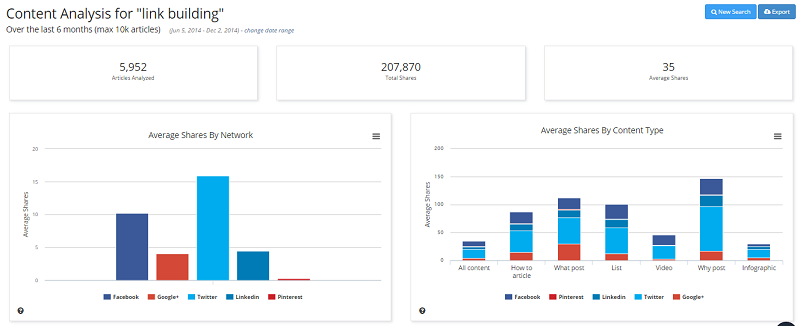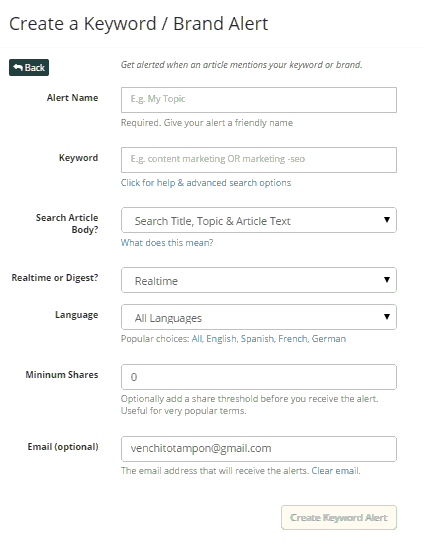27 Link Building Tools Reviews
If you're looking for highly recommended link building tools reviews, this guide is for you. Use the "easy links" below to get straight to the tool of your choice.
27 Link Building Tools Reviews
1. Majestic
Considered one of the top analysis tools, Majestic has effectively told you whether or not a site you want to get a link from is authoritative or spammy.
It also allows you to see the topical theme of a website, for example, if the site is in the technology niche (see image below). This helps you decide if a certain domain is worth building links from (both from a relevance and trust standpoint).
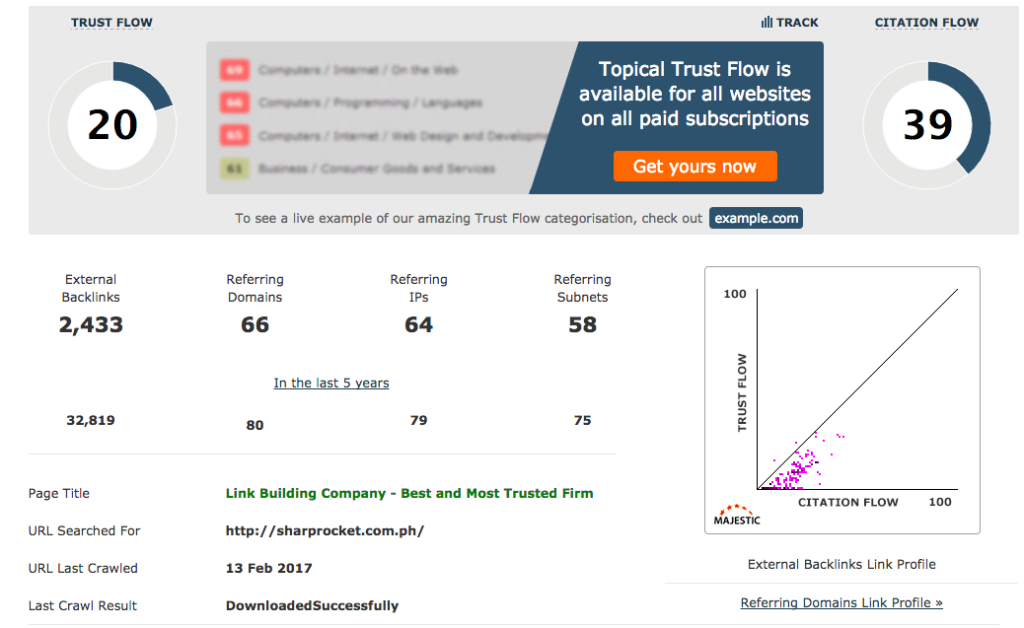
Website: Majestic
2. Buzzstream
Undoubtedly, SEO and digital agencies are using Buzzstream to streamline their email outreach process. Its feature to “back and next” every website to quality them properly gives more luxury for link builders to stay on the platform and won’t even need to open a new tab.
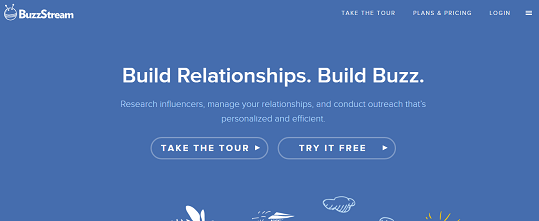
Website: Buzzstream
Its best feature, “Buzzmaker” allows you to view or save details of a specific prospect, which is useful when personalizing your pitches.
3. Ahrefs
I never tried executing link building campaigns without tapping this tool. It has many features that work wonders in your content marketing and link prospecting initiatives.
I’ve covered in this post how to use Ahrefs for link building efforts, but here are some features you should try when getting started with it:
Site Explorer (URL/Domain/Prefix)
Speeding up your link prospecting process by exporting direct backlinks to similar content allows you to exert more effort on other phases of link acquisition, such as content creation and email outreach.
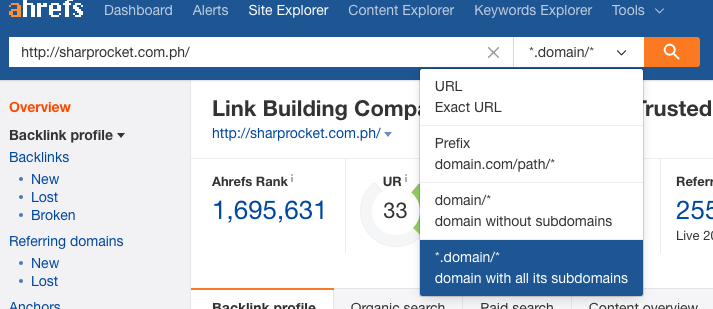
Website: Ahrefs
Properly using URL/Domain/Prefix in extracting certain links that should only pertain to either only to a specific page, the whole domain (with or without subdomains is also included in the options), or prefix (e.g. domain.com/resources).
Content Gap
No time for wild guessing. Check the keywords your content competitors are dominating and see if these topics are something you can do better (or 10x than theirs). This is the process of content gap analysis.
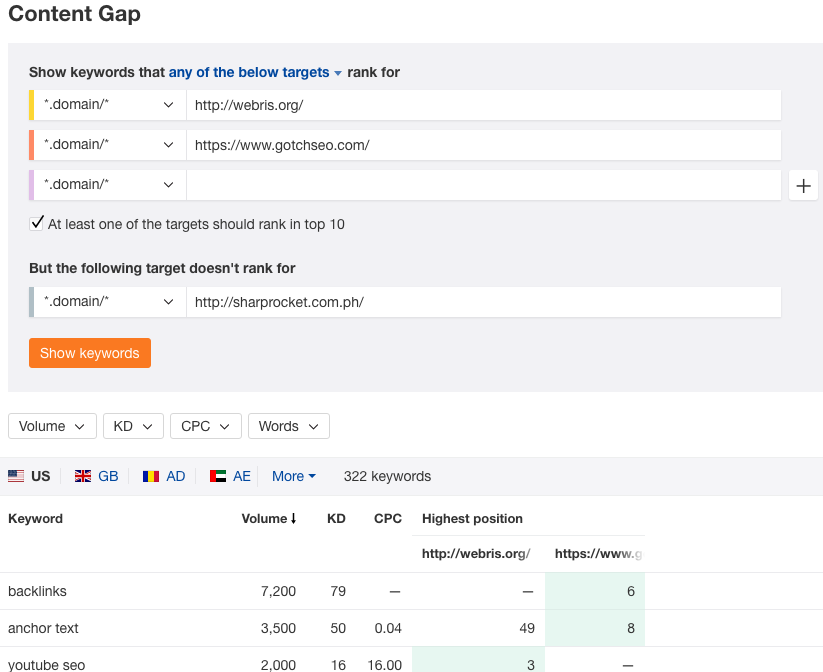
New Backlinks
Are your competitors acquiring new links you haven’t seen yet? These are linkers that you can nudge to link to your page as well.
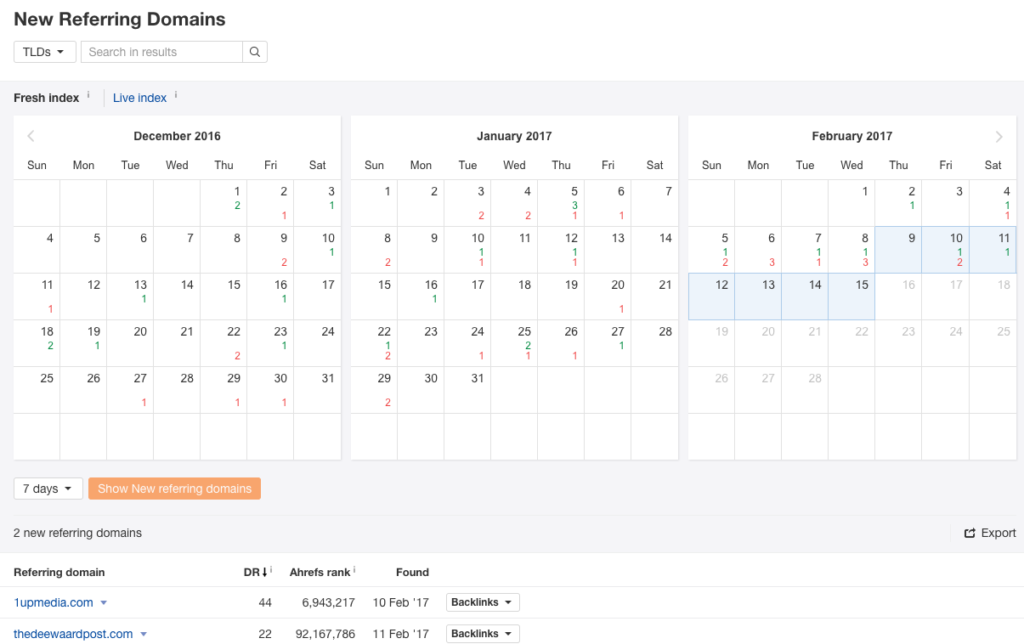
4. Hunter
If you put effort into content creation and write in-depth articles that match user intent and help users with their issues, link building for boosting content visibility makes sense. One of the best link building strategies is cold email outreach, and that’s where Hunter comes in handy.
Hunter helps you find and verify email addresses, ensuring your emails will get delivered straight to the recipient’s inboxes without bouncing or landing in spam folders. Once you build an email list for outreach, you can easily import all leads into Hunter Leads and create personalized email sequences with Hunter Campaigns that automate most parts of your cold outreach.
5. Ontolo
If you’re a solo-man link building team trying to scale the link prospecting process at its best, you can use Ontolo to extract link opportunities straight from the platform.
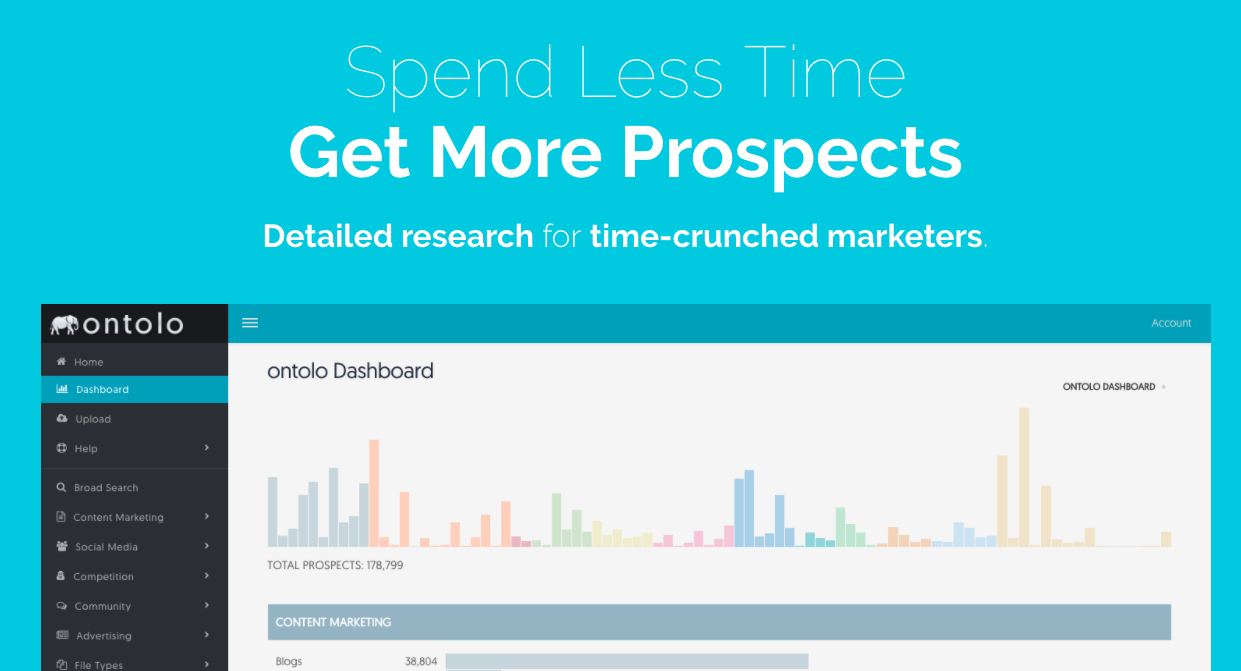
Website: Ontolo
While it’s not guaranteed to have all of them used up for email outreach, you still have to do some qualification, for example, in context relevance, to see if these link prospects are worth your link building efforts.
Nevertheless, if you have your web properties and want a list of hundreds/thousands at hand, Ontolo can help you.
6. Citation Labs
The value for money in the form of reports in a Citation Labs platform is incredible. Getting hundreds or thousands of relevant link prospects from the tool helps you scale your link prospecting efforts.
For example, if you’re doing guest blogging and resource page link building, you can create custom reports in Citation Labs, which helps you extract pages/domains based on the keywords you provide.
There are proper ways to use the tool. Here are some videos you have to watch to maximize the web product:
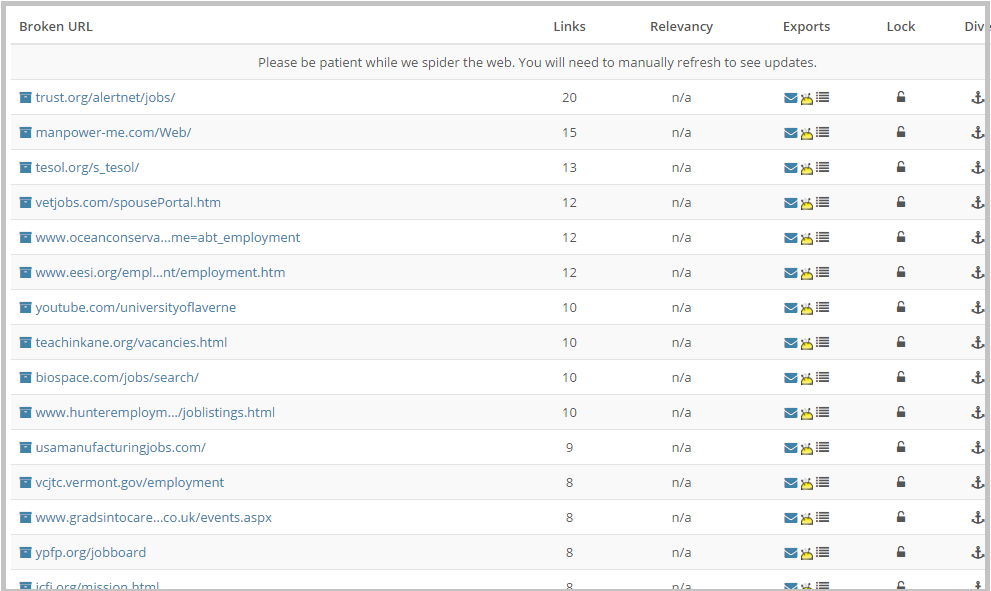
Website: Citation Labs
7. SEMRush
We’ve incorporated SEMRush as a link quality/metrics tool in our internal processes. Its basic graph showing the estimated organic traffic growth (and the SEPrice – see below) allows us to check if a blog or site is worth reaching out to.
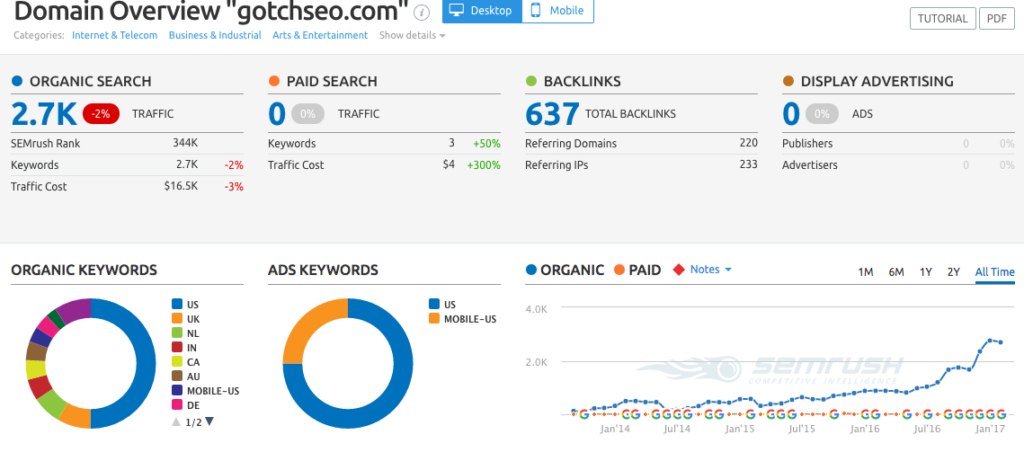
Website: SEMRush
If you’re an agency working on enterprise blogger outreach campaigns, using SEMRush for link qualification efforts is best.
8. Buzzsumo
If you have just started content marketing, you must try Buzzsumo because of its hard-core features to give you an edge in your content marketing campaigns. Its ability to filter results based on content types, date published, and in-depth articles (only shows articles with more than 2000 words) are keys to effectively prospecting “best content” in your industry.
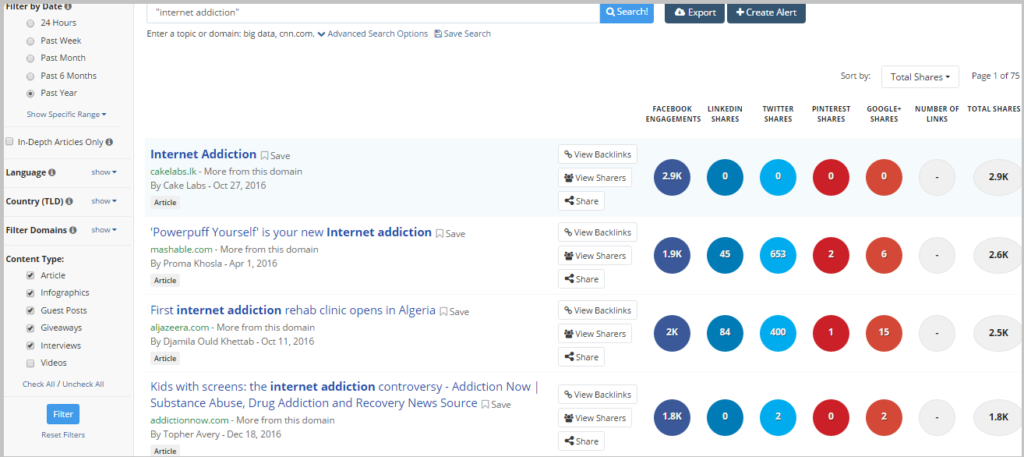
Website: Buzzsumo
9. SEOQuake
SEOQuake is a productivity tool for active link prospectors. For example, if you are manually looking for high-trafficked guest blogs and want to scale checking their cost/SEPrice, you can use SEOQuake to see those quality metrics (i.e. SEPrice) straight from the search results. This saves time as you don’t need to copy and paste each prospect's blog into the SEMRush tool to check the quality of the domain.
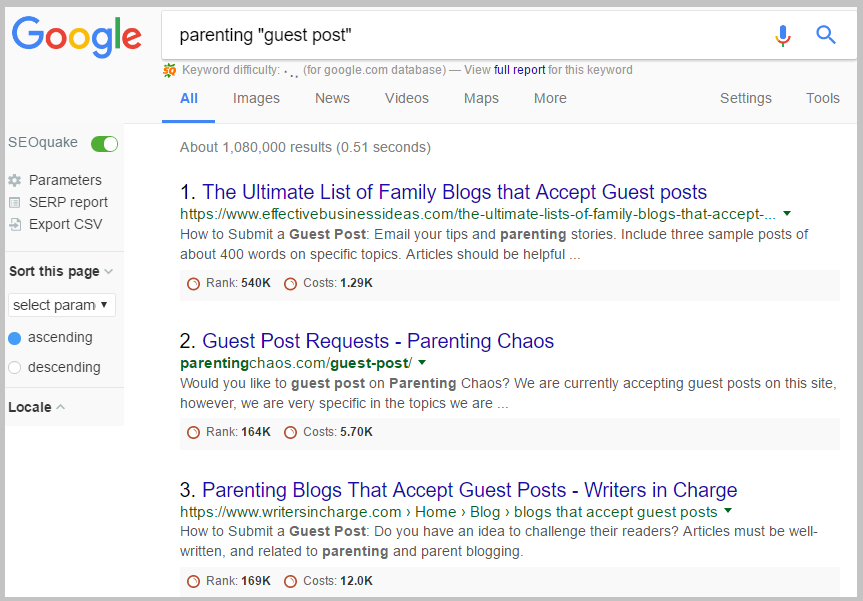
Website: SEOQuake
10. Broken Link Building
This Broken Link Building tool from Citation Labs lets you discover hundreds or thousands of links to resource pages within half an hour. Its Keyword Grader is a useful feature to gauge if there are potential link opportunities within a certain topic or keyword theme, which helps you maximize the link prospecting tool.

Website: Broken Link Building
11. Javascript Bookmarklets
These are bookmarklets that can save minutes of your day. For example, this SERPs bookmarklet allows you to copy URLs of pages/sites seen in search results and paste them into your spreadsheet.
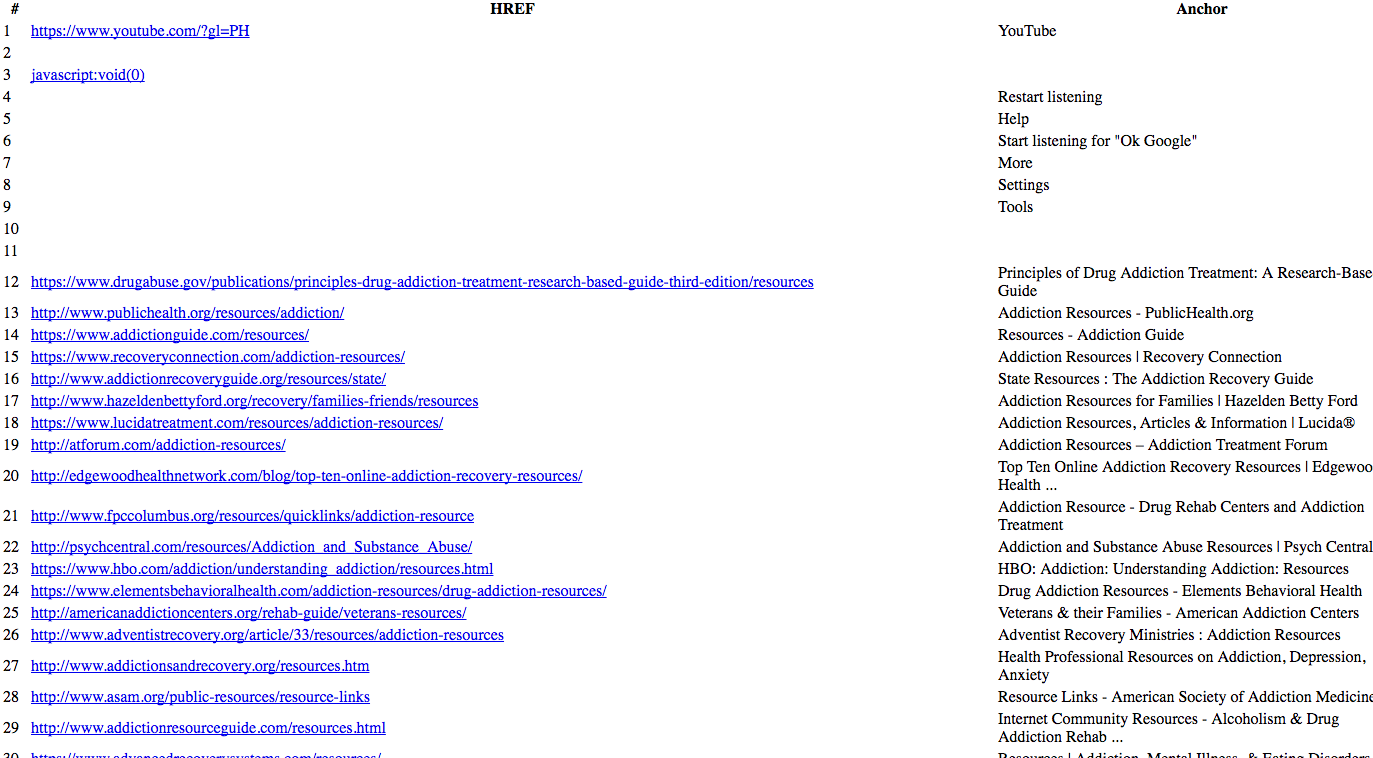
Tried manually plugging a domain into the SEMRush tool? Do this with ease using this bookmarklet.
12. Boomerang
Boomerang is a great email outreach tool that keeps you in the loop with responsive and non-responsive contacts.
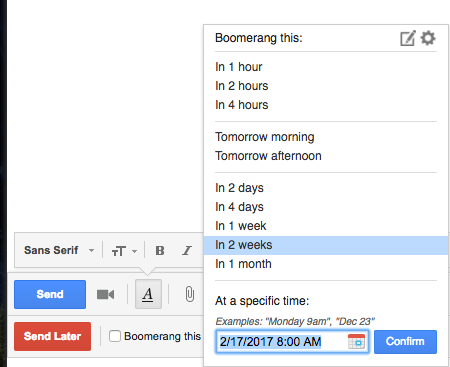
Website: Boomerang
If you want to be reminded of emails you should have responded to, click the button below the Gmail message platform.
If you don’t hear back from link contacts (bloggers/webmasters), it reminds you after 2 or 3 days, whichever you set.
13. LinkClump
If you’re giving broken link building a shot, one of your top link building tools should be LinkClump. This aids you in manually finding defunct (broken) links on a certain page, which serves as your value proposition in your email outreach.
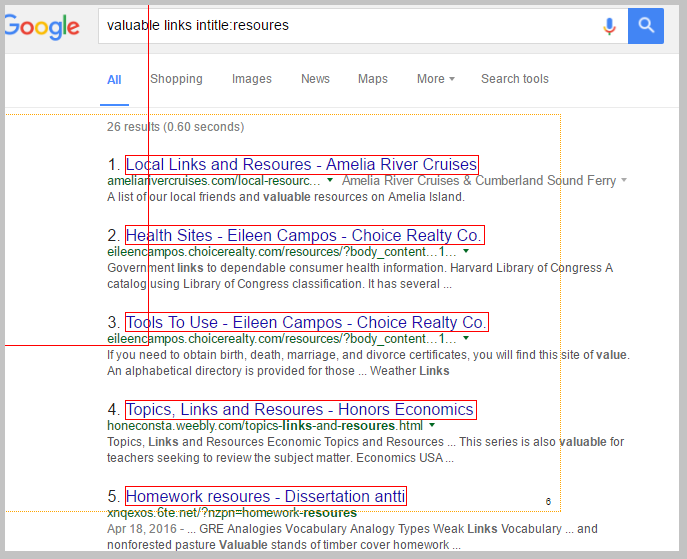
Website: LinkClump
Ask potential linkers to replace one of their broken links with a link to your linkable content. This doesn’t work magic. Your content should be good enough to be included on the page (contextual relevance is the key).
14. MuckRack
I haven’t seen a platform just like MuckRack that can filter lists of journalists and reports based on their respective media outlets and media types. This allows a more targeted approach to being in touch with these content promoters that have high-end exposures.
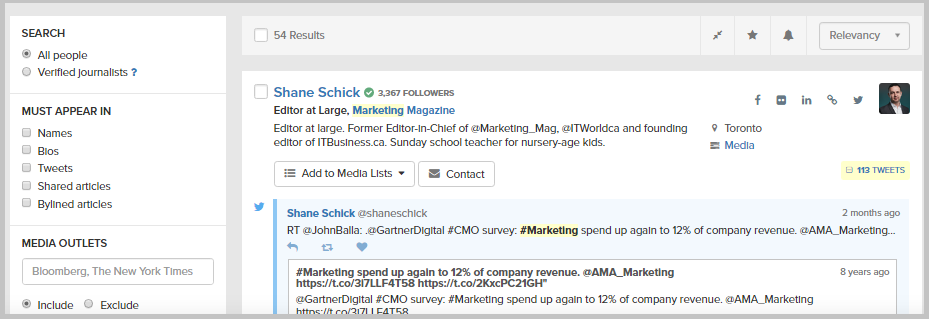
Website: MuckRack
15. Ninja Outreach
Ninja Outreach is a constantly-improving blogger outreach web-based product, delivering new features to offer a smooth outreach flow. Involving ready-made outreach templates makes it easy for someone to dive into this platform (techy know-how isn’t required).
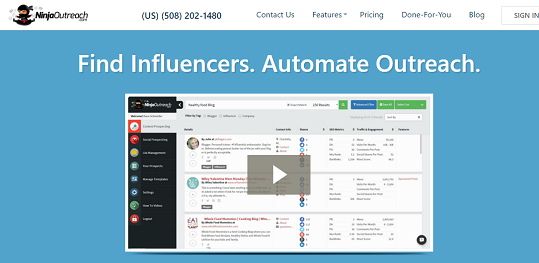
Website: Ninja Outreach
16. Pitchbox
Pitchbox streamlines your link prospecting and outreach process (all-in-one-place). The ability to discover reliable contacts and automating follow-ups by scheduling at times strategy is what makes the tool a handy platform for high-scale link building.
If you base decisions on data, Pitchbox also allows proper reporting on all phases of the outreach process.
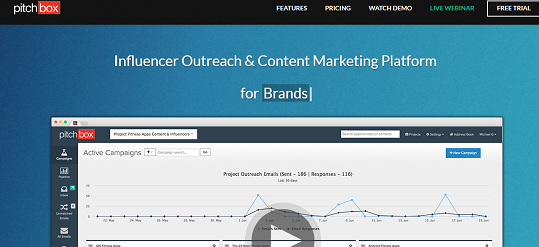
Website: Pitchbox
17. Remove’em
Getting a sense of which links are toxic that needs to be removed allows you to execute link audit for your site. Remove’em has its “R-score” that allows you to filter sites triple times faster. Adding MajesticSEO OpenApps Key as well enables link metrics to be incorporated into the platform.
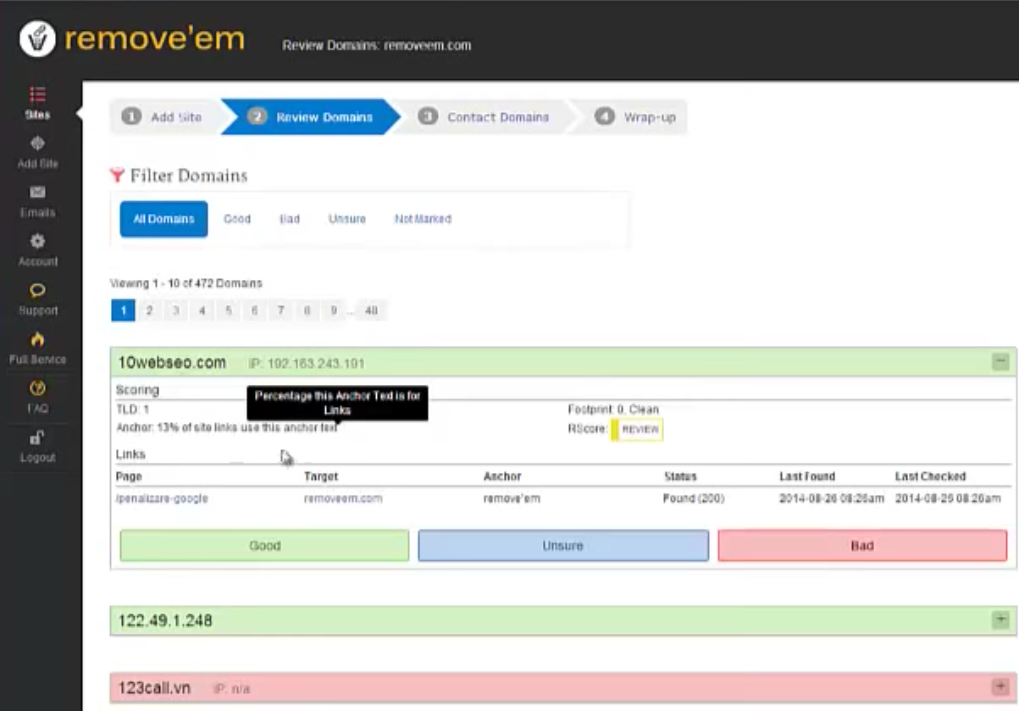
Website: Remove'em
18. Siege Media Embed Code Generator
If you don’t have an embed code beneath your infographic, you are missing the opportunity for inbound links.
If the visual content is great (adds value upfront), you will expect publishers and bloggers to republish your infographic on their websites as well. Using this embed code generator eases the pain of creating customized embed codes for each infographic you make.
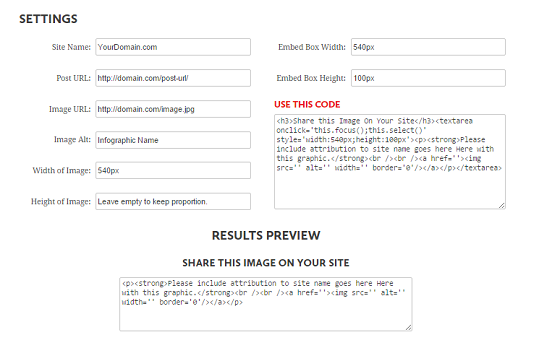
Website: Embed Code Generator
19. Google Sheets
If you want to keep things cost-efficient, use Google Spreadsheets to organize your link building campaigns.
Its accessible and simplest feature to share data with other team members can help new hires to dive into the process instantly.
By using labels/columns to support your needs in terms of link prospecting and outreach, you’ll be able to check all the details and keep everyone in the loop for work.
Website: Google Sheets
20. Wordable
If you are handling several content management accounts, Wordable aids you with uploading content from Google Docs straight to WordPress accounts.
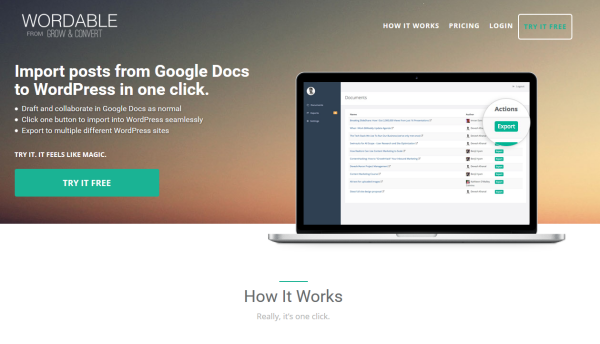
Website: Wordable
Not only you’ll maximize your time, but you can now create a content publishing process to be eventually provided to your new hires if you’re an agency. This is one way to scale the content-based link acquisition process.
21. HARO
Getting press exposure on top-tier sites (digital PR) like Forbes and Huffington Post creates more exposure for your brand. Whether the citation and mention are linked or unlinked (best if you can get links obviously), you can add that specific exposure to your homepage’s social proof section (i.e. “As Featured In”).

Website: HARO
Help A Reporter Out (HARO) is a free PR service that allows you to reach out to journalists looking for stories related to your industry/brand.
Automating this for proper scaling and early capture of your stories can save a lot of your time (e.g. using IFTTT).
Matthew Barby detailed a step-by-step process on properly using PR services like HARO to acquire early exposure and editorial links.
22. Amazon’s Mechanical Turk
Menial tasks can eat some of your time. In link building, qualifying thousands of prospects using certain metrics can easily be outsourced.
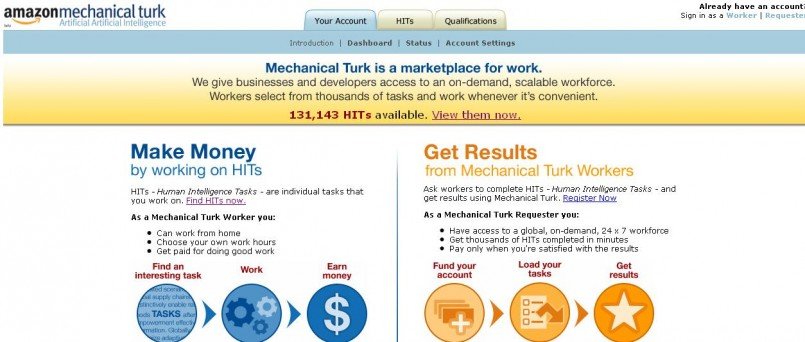
Website: Amazon's Mechanical Turk
Amazon’s Mechanical Turk (not a link building tool) can help you outsource link building tasks on a micro-level. For example, if you’re doing broken link building, a huge percentage of your time is spent reviewing thousands of link prospects, either found manually or using automated tools like Citation Labs. If I’d review it myself, it obviously can eat much of my time, wherein I can spend $525 to review 5,000 link prospects, for example, and get 1500 contact information.
Scalable, especially if you only have a handful of resources (members) in your team.
23. LinkResearchTools
When Google releases its real-time update of Penguin, many webmasters started to take link-audit as part of their regular internal execution.
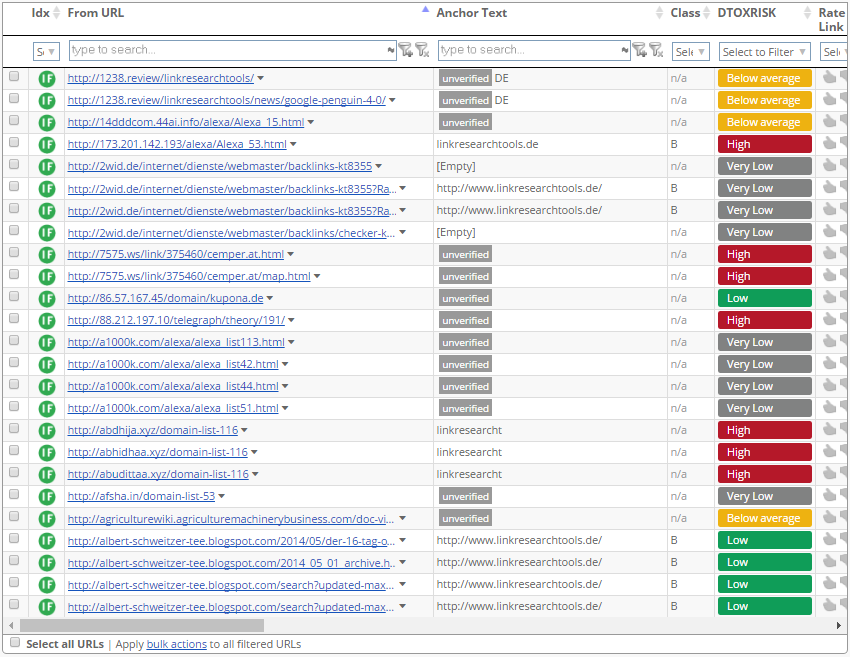
Website: LinkResearchTools
Using LinkResearchTools gives you the leverage of checking your site’s backlink profile with given own metrics by LRT, such as LRT Power, LRT Trust, and LRT Power*Trust allows you to evaluate the trustworthiness of a particular backlink.
Looking at the backlink profile with the proper context, such as anchor text variation, link types, link status, and so on, allows you to monitor the health of your website better.
24. WhiteSpark
Local businesses should take advantage of WhiteSpark as a primary local link building tool. If you do local link building, the tool allows you to do that on a scale.
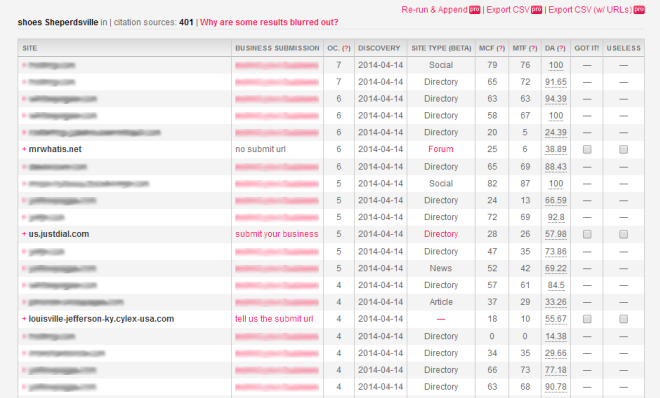
Website: WhiteSpark
The available local submission pages also give you the capacity to do the task in minutes only, which, if you handle multiple accounts, can automatically be delegated or outsourced to a certain person.
25. Search Metrics
Aside from SEMRush, we also use SearchMetrics to evaluate a website’s trust and authority. Noticing a sudden drop in a website’s organic traffic graph might indicate a penalty caused by spammy link building executions. These would allow us to identify the most suitable sites to target.
Website: Search Metrics
26. URL Profiler
Link qualification is one of the extensive tasks in link building. It takes time, but if you can automate it, much better for your team.
URL Profiler solves the problem of trying to search the Moz DA, Ahrefs rank, or Majestics’ metrics of each of your link prospects.
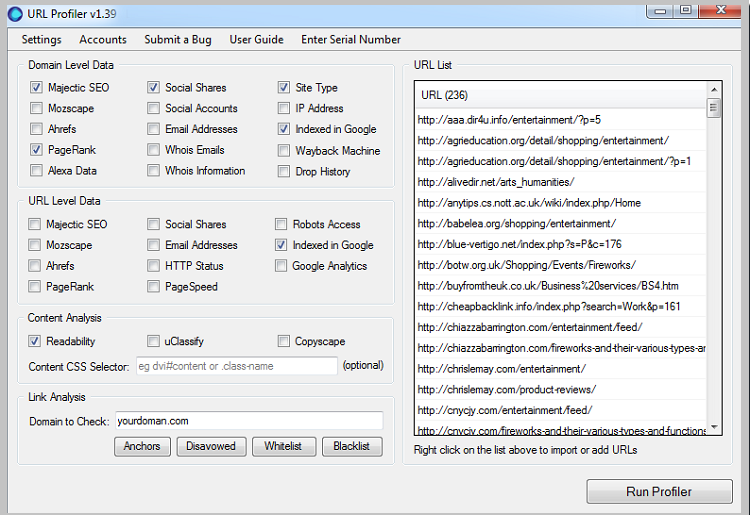
Website: URL Profiler
Install the software, upload your file of backlink targets, then check with the metrics you prefer to use (Moz, Ahref, Majestics, etc..). Wait for a few minutes and then be done. You’ll get a CSV file of all the target websites with their respective numbers.
27. Open Site Explorer
I rarely use OSE, but if the Mozbar doesn’t function properly, we simply go to the Open Site Explorer website and manually check the site or blog’s Domain Authority.

Website: Open Site Explorer
Your Turn…
Do you know any tool that should be added to this post?
Leave a quick comment below.
I’ll be more than happy to reply to comments and answer questions.
Link Building Tools Reviews Frequently Asked Questions
What tools do you use for link building?
The top link building tools for scaling your efforts include Semrush, Respona, Pitchbox, Buzzstream, Hunter, HARO, Buzzsumo, and Ahrefs. These platforms offer features like backlink discovery, outreach workflows, relationship management, email address finding, and content analysis to enhance your link building strategy effectively.
What are some examples of link building strategies?
Some examples of effective link building strategies include utilizing social media platforms, conducting broken link building campaigns, analyzing competitors' backlinks, optimizing website visibility, monitoring link profiles, engaging in forum participation, reclaiming lost links, and exploring guest blogging opportunities. These tactics can boost your website's authority, improve organic rankings, and increase referral traffic.
Does link building still work?
Yes, link building is still an effective SEO strategy. However, it is important to focus on quality rather than quantity. The days of spammy link building tactics are over. Building relevant and high-quality backlinks that provide value to users and align with Google's guidelines is crucial for improving your website's search rankings.
15 Local Citation Softwares
One of the marketing trends that has been around for a while and is still going strong is local citations. It's one of the fundamentals of good local SEO.
For the past years, Moz has been surveying local SEO experts to ask them what they believe are the most important local search ranking factors. Local citations (27.5%) and links (21.3%) are the two most important factors, according to these experts.
So, what exactly are local citations?
A local citation is any mention of your business on the web, with or without a link. The keyword here is "local."
Citations can be in the form of your NAP (Name, Address, Phone number), reviews, and mentions of your business on social media or local directories.
To put it simply: if your business is mentioned on the internet, it's considered a citation.
There are numerous benefits of local citations. The most important one is that they improve your local SEO ranking.
Other benefits include:
- Increased brand awareness and recognition
- More traffic to your website and physical location
- Improved lead generation
- Greater customer engagement
There are three types of local citations:
- Structured Citations: These are the most common and include directories like Yelp, Angie's List, and Thomson Local.
- Unstructured Citations: These are mentions of your business on sites that don't necessarily have a local focus, such as news sites and blogs.
- Social Citations: These are mentions of your business on social media platforms, such as Facebook, Twitter, and Instagram.
Now that you know what local citations are and why they're important, it's time to start building them. A good local citation software can help you with that.
What is local citation software?
Local citation software is a tool that helps you build citations for your business. It's basically a citation management tool that allows you to track, manage, and monitor your citations.
The best local citation software should have the following features:
- A directory submission feature that allows you to submit your business to the most relevant and high-quality directories.
- A citation tracking feature that allows you to track your citations and see which ones are most effective.
- A reporting feature that allows you to generate reports so you can see your progress and ROI.
- An automated submission feature that allows you to automate the process of submitting your business to directories.
- A customer support feature that allows you to get help from the software's customer support team in case you run into any problems.
Now that you know what local citation software is and what features to look for, let's take a look at some of the best options on the market.
1. Moz Local

Moz's very own local citation software is one of the best on the market. It's a complete local SEO platform that helps you with everything from listing your business in directories to tracking your progress.
Moz Local has a directory submission feature that allows you to submit your business to the most relevant and high-quality directories. It also has a citation tracking feature that allows you to track your citations and see which ones are most effective.
Plus, Moz Local has a reporting feature that allows you to generate reports so you can see your progress and ROI. And if you need help, you can always turn to the customer support team.
2. BrightLocal
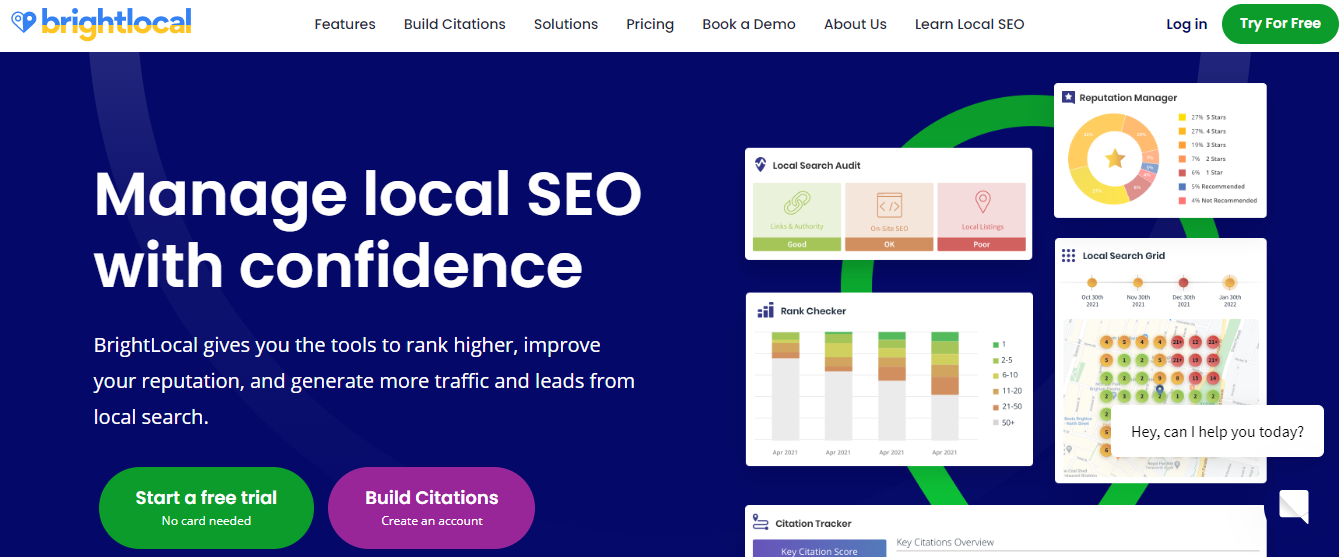
BrightLocal is another great local citation software. It's an all-in-one local SEO platform that helps you with everything from listing your business on directories to monitoring your citations.
Like Moz Local, BrightLocal has a directory submission feature that allows you to submit your business to the most relevant and high-quality directories.
3. Whitespark

Whitespark features everything you need to build citations for your business. Whitespark is a comprehensive local SEO resource that places a lot of emphasis on local citations. It offers two citation management tools, as well as a plethora of how-tos and articles to help you optimize your technique.
4. Yext
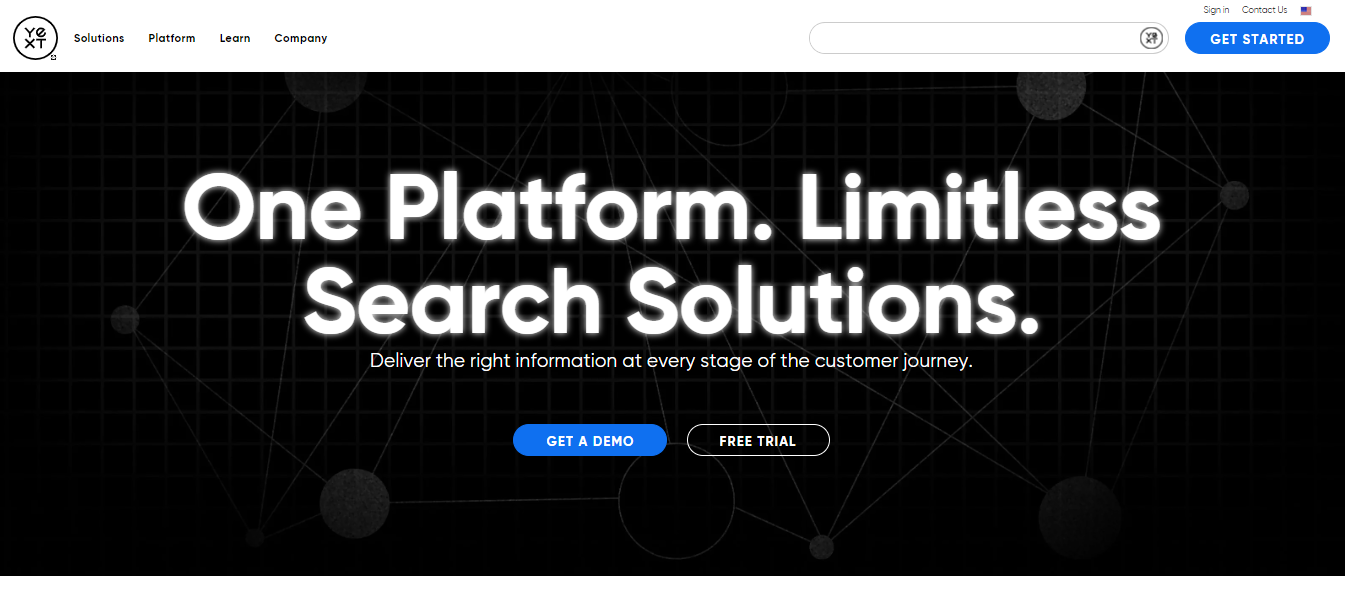
Yext is a local SEO platform that helps you manage your local listings and citations. Yext offers a variety of features, including listing management, citation tracking, review monitoring, and more.
One of the best things about Yext is that it offers a free listing scan. This allows you to see how your business is listed across the web and identify any errors that need to be fixed.
5. Synup
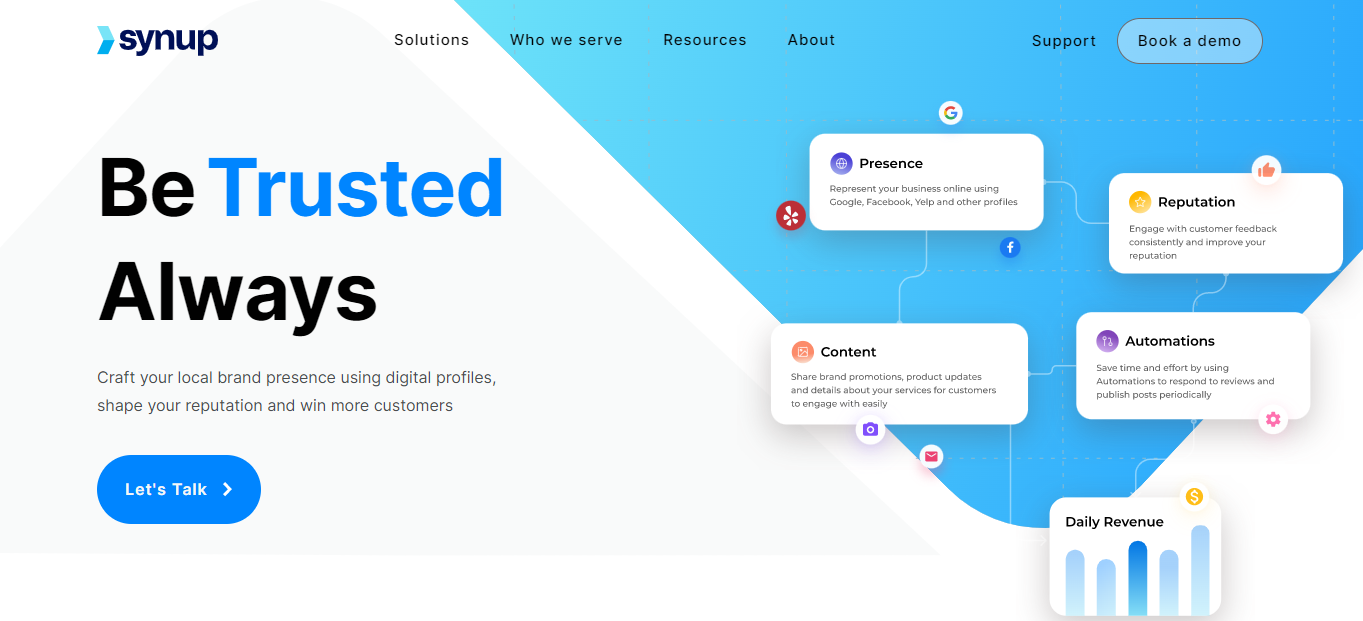
Synup is a local listing and reputation management software that allows business to boost their marketing through accurate and consistent listings. Synup allows you to manage your listings, monitor your reviews, and track your citations, all in one place.
Synup also offers a free listing scan that helps you identify any errors in your listings.
6. GeoRanker
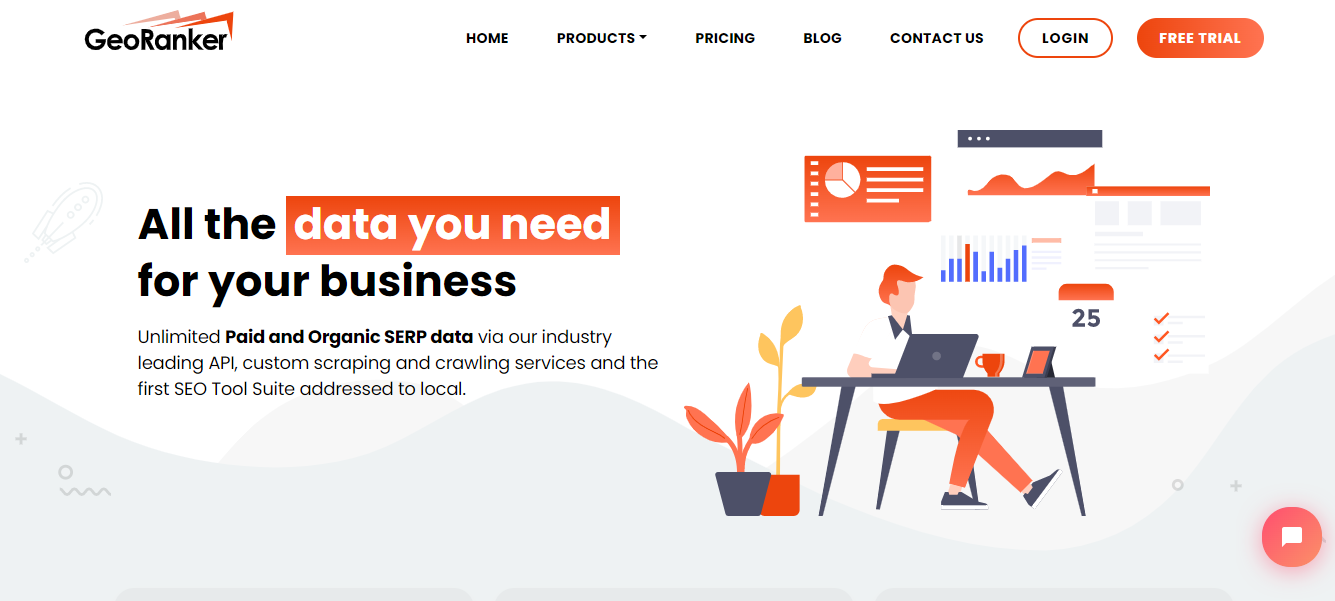
GeoRanker is a powerful local citation finder tool that helps you boost your local SEO rankings. With GeoRanker, you can easily find and track local citations for your business. The tool also allows you to monitor your competition and see where they are getting their citations from. GeoRanker is the perfect tool for any business that wants to improve their local SEO rankings.
7. ReviewTrackers
![]()
ReviewTrackers helps businesses track, monitor, and manage their online reviews. ReviewTrackers offers a variety of features, including review monitoring, review management, and review generation.
Unlike some of the tools above, ReviewTrackers is a paid tool.
8. SOCi

SOCi is an all-in-one marketing platform that helps businesses with everything from social media to local SEO. Their focus is on brands with multiple locations.
SOCi offers a variety of features, including listing management, review monitoring, social media management, and more.
9. TribeLocal
With over 200+ local listing sites, TribeLocal is one of the most comprehensive local citation services available. TribeLocal also offers a wide range of other local SEO services, making it a one-stop-shop for all your local SEO needs.
10. BirdEye
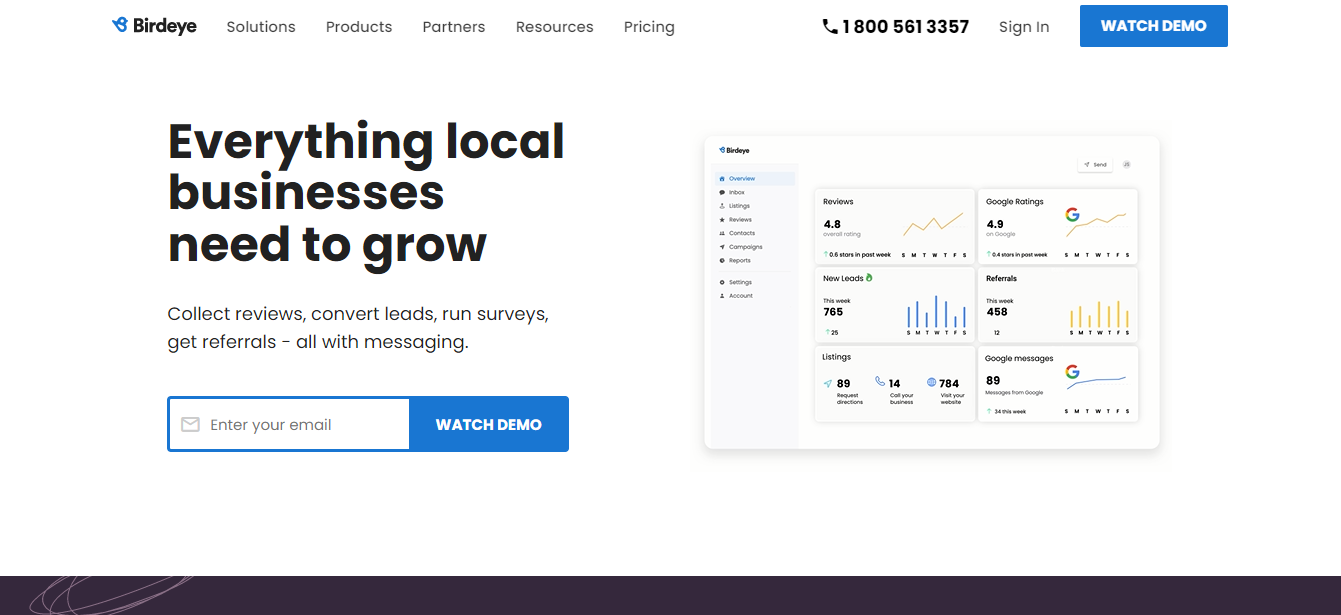
Birdeye is an all-in-one customer experience platform. Every day, over 80,000 businesses use Birdeye to attract new leads with Listings, Reviews, and Referrals, convert them into customers with Webchat and Payments. It also features surveys, ticketing, and insights - all in one place.
11. Advice Local
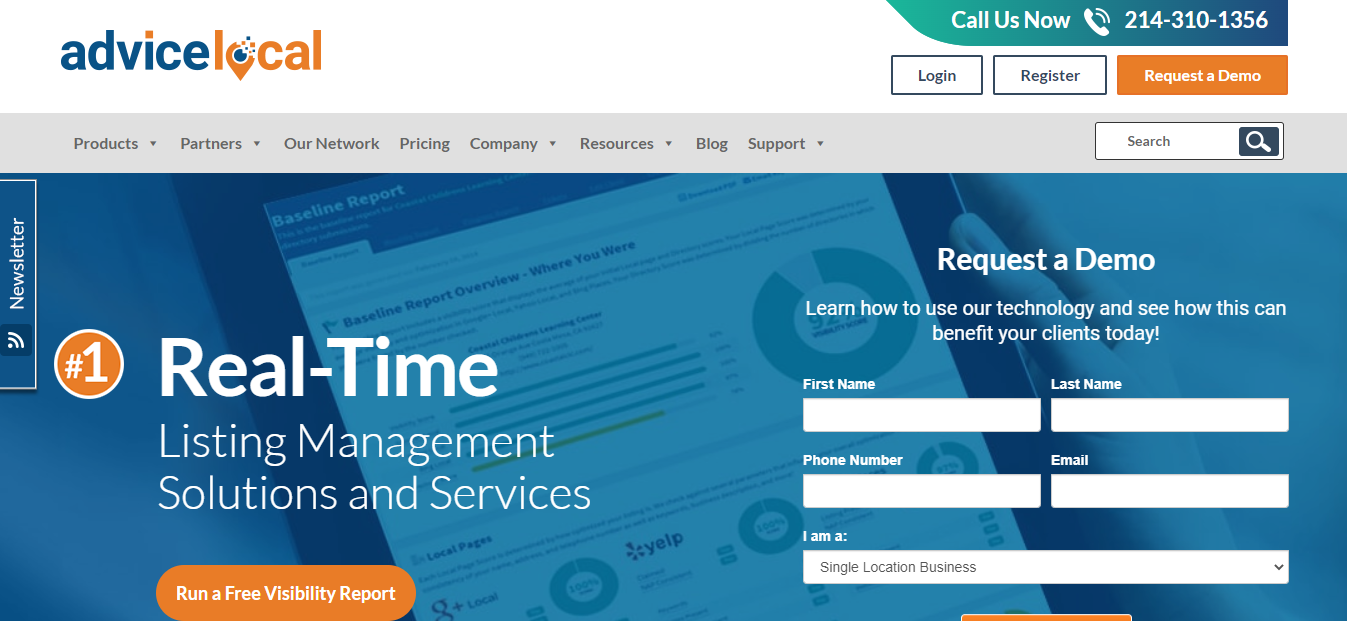
Advice Local is a software and technology firm based in Dallas, Texas. Advice local provides a variety of software-based solutions to help digital marketers in Local SEO perform their tasks. The company offers a listing management solution that utilizes hand submissions and APIs to claim and optimize large numbers of listings quickly.
12. Mypresences
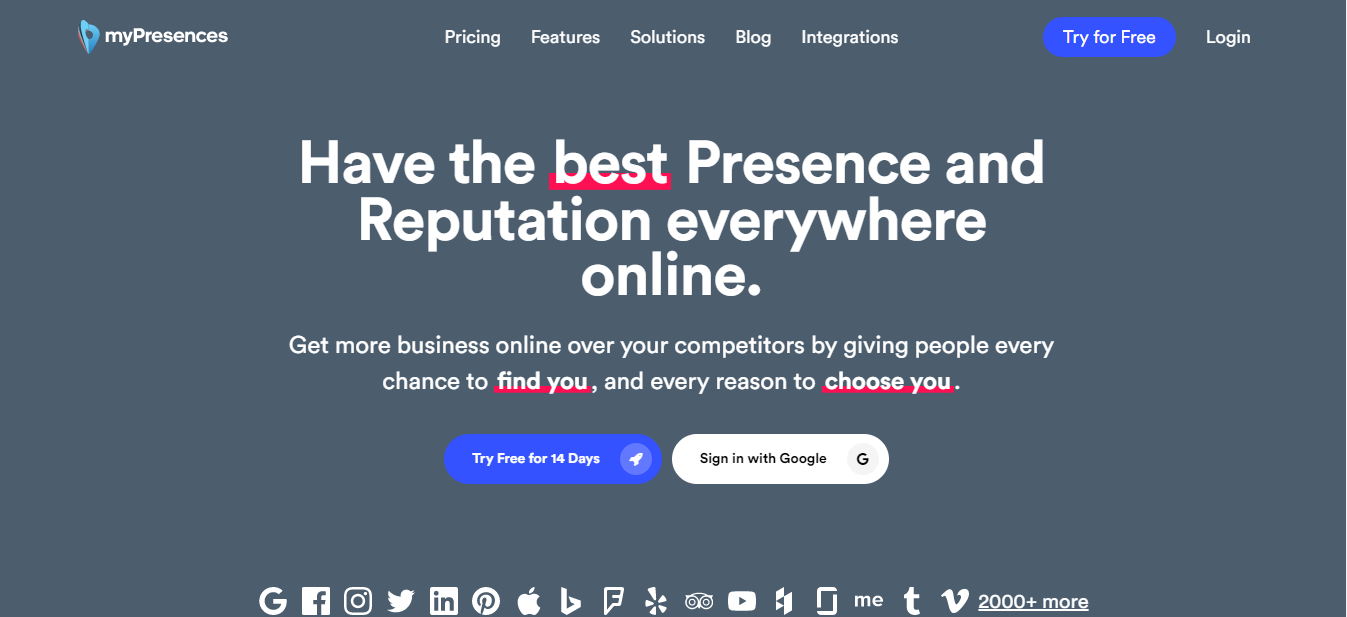
Mypresences is another top choice for local citation services. They offer a wide range of local citation services for different industry types. It lets you manage your presence on 100+ local directories with ease. You can get started with a free trial to try their services.
13. SemRush Listing Management
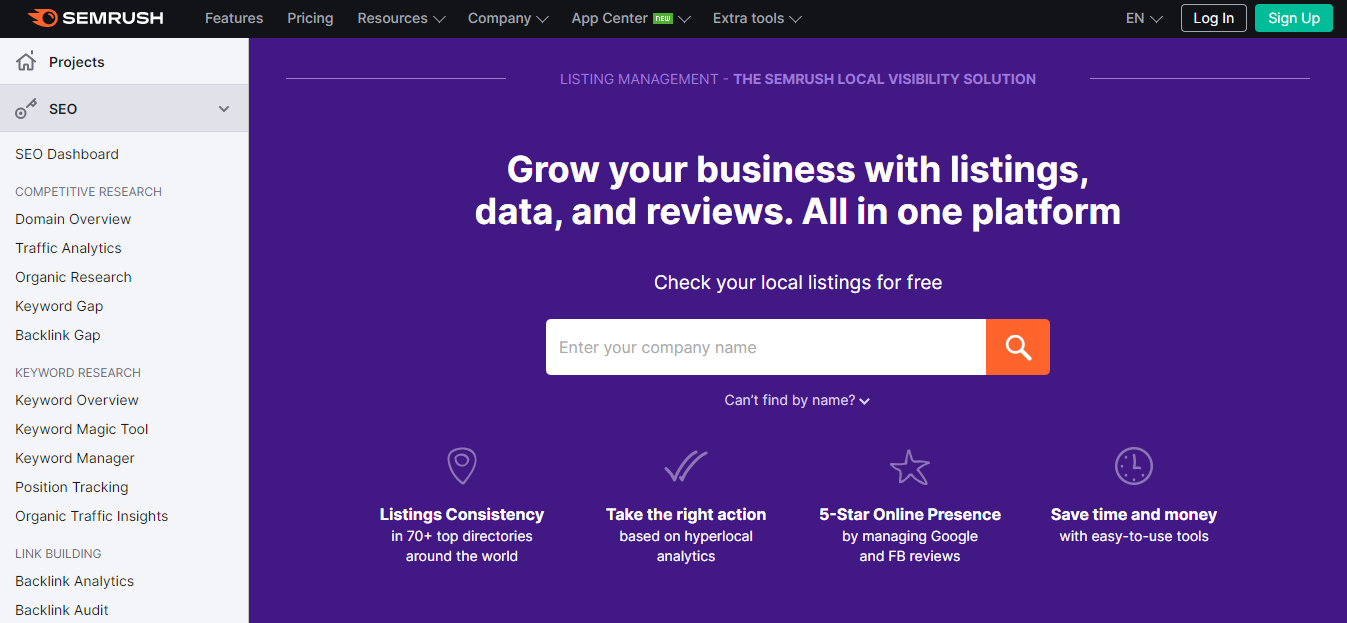
Semrush is a popular SEO software that also offers a listing management tool. This tool allows you to track your listings, monitor your citations, and receive alerts when your business is mentioned online.
Using the tool, marketers can quickly distribute their business listings through a wide network of third-party directories, avoid Google penalties by reducing duplicate postings, and manage feedback and brand reputation across platforms with ease.
14. Go Daddy Go Central
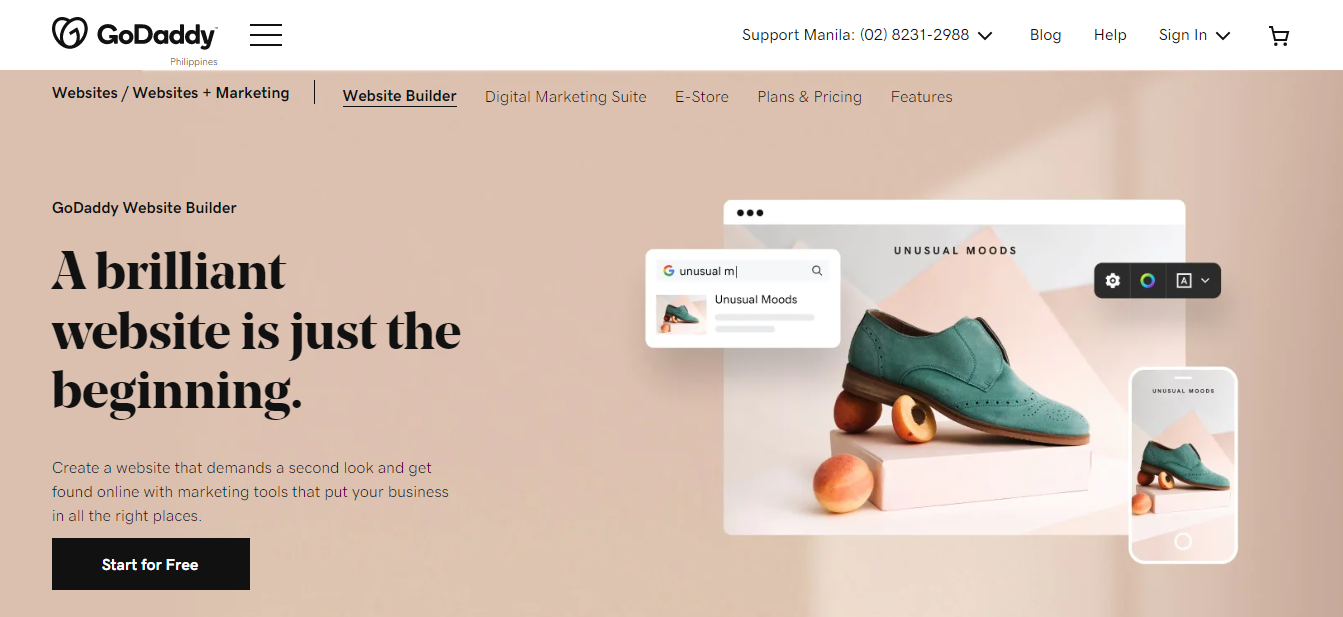
GoDaddy's GoCentral is a website builder that also offers a listing management feature. With this feature, you can track your listings, monitor your citations, and receive alerts when your business is mentioned online.
GoDaddy's GoCentral also offers a variety of other features, such as SEO, social media, and email marketing.
15. Ontolo
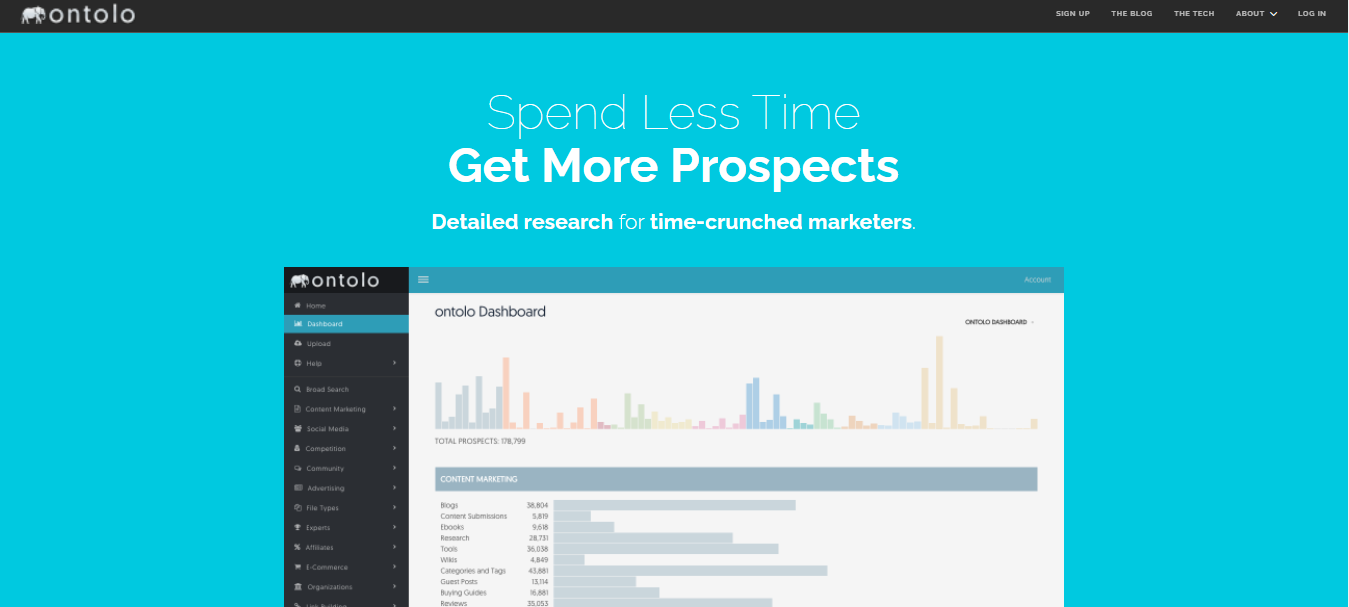
Ontolo is a data mining tool that specializes in sales prospecting and lead generation strategies. In this regard, Ontolo offers a listing management feature that helps marketers track their citations, generate leads, and improve site rankings through structured data markup.
With Ontolo's solution, digital marketers can ensure the quality of business listings across all platforms or directories and track competitor activities in real-time.
Frequently Asked Questions
What is local citation in SEO?
Local citation is a term used in SEO to describe the process of building and managing online listings for your business across various platforms and directories. This helps improve search engine rankings by creating more robust and consistent information about your business online.
What is global and local citation?
Global citation is the process of building and managing online listings for your business across various platforms and directories on a worldwide scale.
Local citation, on the other hand, is focused on improving search engine rankings within a specific geographic region.
What are Brightlocal citations?
Brightlocal citations are a type of local citation service offered by the company Brightlocal. These services help businesses build and manage their listings across major platforms and directories to improve search engine rankings and visibility in local search results.
Brightlocal citations include:
- Business name
- Business address
- Business phone number
- Business website URL
- Business category
Do citations work for local SEO?
Yes, citations can definitely help improve your local SEO. This is because when you build citations for your business, you're essentially creating more consistent and robust information about your business online. This helps search engines better understand who you are and where you're located, which can lead to improved rankings in local search results.
Citations work for local SEO by helping to create more consistent and robust information about your business online. This helps search engines better understand who you are and where you're located, which can lead to improved rankings in local search results.
To optimize your citations for local SEO, you should first make sure that all of your business listings have the same information and are optimized with proper keywords. You should also focus on building high-quality citations from reputable platforms and directories. Additionally, it's important to monitor and respond promptly to customer reviews and ratings in order to manage your brand reputation across directories.
How do you create a local citation?
There is no single formula for creating a local citation, as the process will vary depending on the platform or directory you are using.
Some general best practices include:
- Make sure all of your business listings have the same NAP (name, address, phone number) information.
- Optimize your listings with proper keywords to improve your visibility in search results.
- Focus on building high-quality citations from reputable platforms and directories.
- Monitor and respond promptly to customer reviews and ratings in order to manage your brand reputation across directories.
How do I find local citations?
To find local citations, you can use a variety of online tools and platforms, such as Moz Local or Brightlocal. These tools will help you identify and track the number and quality of your business listings across major directories and platforms, allowing you to optimize your listings for improved visibility in local search results.
Some other tips for finding local citations include performing keyword research to identify relevant directories and platforms in your industry, as well as reaching out to other businesses in your local area to exchange links or co-citations.
Finally, you can also use social media platforms like Facebook and Twitter to create new listings for your business and connect with potential customers in your area.
What are the benefits of using local citation software?
There are several benefits to using local citation software:
- Saves time and effort: Local citation software automates the process of building and maintaining citations, saving businesses time and effort.
- Improves local SEO: Consistent and accurate citations are important for local SEO. Local citation software helps businesses ensure that their NAP information is consistent across all citations, which can improve their local SEO.
- Identifies and fixes incorrect or duplicate citations: Local citation software can help businesses identify and fix incorrect or duplicate citations, which can negatively impact their local SEO.
- Tracks citation progress: Local citation software can help businesses track their citation progress and monitor the success of their local SEO efforts.
- Increases visibility: Local citation software can help businesses increase their visibility by building citations on a wide range of websites, including local directories, review sites, and industry-specific websites.
- Enhances reputation: Local citation software can help businesses enhance their reputation by ensuring that their NAP information is accurate and consistent across all citations. This can help businesses build trust with customers and establish their credibility.
Are there any risks to using local citation software?
There are a few risks to consider when using local citation software:
- Low-quality or spammy citations: Some local citation software may create low-quality or spammy citations that could harm a business's reputation or local SEO. It's important to research the reputation of different local citation software providers and choose a reputable provider.
- Violation of best practices: Some local citation software may not adhere to best practices for citation building, which could result in penalties or issues with search engines. It's important to ensure that the software follows best practices and is compatible with the guidelines of major search engines.
- Security risks: Some local citation software may not be secure, which could expose a business's sensitive information to potential hackers. It's important to choose software from a reputable provider and ensure that it has strong security measures in place to protect sensitive information.
- Dependence on software: Relying too heavily on local citation software can lead to a lack of manual oversight and control. It's important for businesses to periodically check their citations and make sure all information is accurate and up-to-date, even if they are using citation software.
- Cost: Local citation software can be expensive, particularly for businesses with multiple locations or a large number of citations to manage. It's important to carefully consider the costs and benefits of using local citation software and choose a solution that fits within a business's budget.
How do I choose the right local citation software for my business?
Here are some factors to consider when choosing the right local citation software for your business:
Cost: Determine your budget and look for software that fits within it. Some local citation software is free to use, while others charge a monthly or annual subscription fee. The price may also depend on the number of locations or citations that a business needs to manage.
Features: Consider the features that are most important to your business, such as automation, reporting, and alerts. Look for software that offers the features you need at a price you can afford.
Reputation: Research the reputation of different local citation software providers and read reviews from other users. Choose a provider with a proven track record of delivering high-quality software and services.
Compatibility: Make sure the software is compatible with your current systems and processes. Consider whether the software integrates with any other tools or platforms that your business uses.
Customer support: Look for software with reliable customer support in case you have any issues or questions. Choose a provider that offers multiple support channels, such as email, phone, and chat, and has a track record of responding to customer inquiries in a timely manner.
How does local citation software improve local SEO?
Local citation software helps improve local SEO by building and maintaining consistent and accurate citations for a business. Citations are mentions of a business's name, address, and phone number (NAP) on other websites. Search engines use citations as a way to verify the legitimacy and accuracy of a business's NAP information. By building and maintaining accurate citations, businesses can improve their local SEO and increase their chances of ranking higher in local search results.
Here are a few specific ways in which local citation software can improve local SEO:
Consistent NAP information: Local citation software helps businesses ensure that their NAP information is consistent across all citations. This is important because search engines use NAP information to verify the identity and location of a business. Inconsistent or incorrect NAP information can confuse search engines and negatively impact a business's local SEO.
More citations: Local citation software helps businesses build citations on a wide range of websites, including local directories, review sites, and industry-specific websites. The more citations a business has, the more credibility and authority it can establish with search engines. This can lead to higher rankings in local search results.
Quality of citations: Local citation software can help businesses build high-quality citations on reputable websites. Search engines tend to give more weight to citations from authoritative and trusted websites. Building high-quality citations can therefore improve a business's local SEO.
Duplicate citations: Local citation software can help businesses identify and remove duplicate citations, which can negatively impact their local SEO. Search engines may view duplicate citations as spammy or low-quality and penalize a business's rankings as a result.
Incorrect citations: Local citation software can help businesses identify and fix incorrect citations, which can also negatively impact their local SEO. Incorrect citations can confuse search engines and make it difficult for them to verify the accuracy of a business's NAP information. Fixing incorrect citations can help improve a business's local SEO.
What types of businesses can benefit from local citation software?
Local citation software can be beneficial for any business with a physical location, as well as businesses that serve a specific geographic area. This includes brick-and-mortar businesses such as restaurants, retail stores, and service providers, as well as online businesses that offer delivery or in-home services.
Some examples of businesses that may particularly benefit from using local citation software include:
Local retailers and restaurants: Local retailers and restaurants can use local citation software to build citations on local directories, review sites, and industry-specific websites. This can help them attract local customers and improve their local SEO.
Service providers: Service providers such as plumbers, electricians, and HVAC technicians can use local citation software to build citations on local directories and review sites. This can help them attract local customers and improve their local SEO.
Online businesses with physical locations: Online businesses with physical locations, such as stores or warehouses, can use local citation software to build citations on local directories and review sites. This can help them attract local customers and improve their local SEO.
Businesses that serve a specific geographic area: Businesses that serve a specific geographic area, such as a delivery service or a landscaping company, can use local citation software to build citations on local directories and review sites. This can help them attract local customers and improve their local SEO.
Overall, any business that wants to improve its local SEO and attract local customers can benefit from using local citation software.
How often should a business update their citations using local citation software?
It's generally recommended to update a business's citations on a regular basis, such as every few months. This helps ensure that the information is accurate and up-to-date. Some local citation software may offer alerts or notifications when it's time to update citations. It's also a good idea for businesses to manually check their citations periodically to ensure that all information is accurate and consistent.
In general, the frequency of citation updates will depend on the business and the nature of its operations. For example, a business that frequently changes its address or phone number may need to update its citations more frequently than a business with stable contact information.
It's also a good idea for businesses to monitor their local SEO performance and look for any changes or trends in their citation counts or rankings. If a business notices a decline in its local SEO performance, it may want to review its citations and make any necessary updates.
Overall, the key is to keep citations accurate and up-to-date to ensure that they are effective in improving local SEO and attracting local customers.
How to Use Ahrefs For Link Building (Like A Pro)
In this new guide, you'll learn how to use Ahrefs for link building.
Even without experience using the SEO tool.
Even if you've been using Ahrefs for quite a while.
(I'll include lots of advanced strategies that I've never shared anywhere before).
Here's everything you'll discover in this guide:
Let's dive right in.
What is Ahrefs SEO Tool?
Ahrefs is a robust tool that can be used to perform backlink audits, conduct keyword research, analyze competitors, track organic visibility and find and quality link prospects.
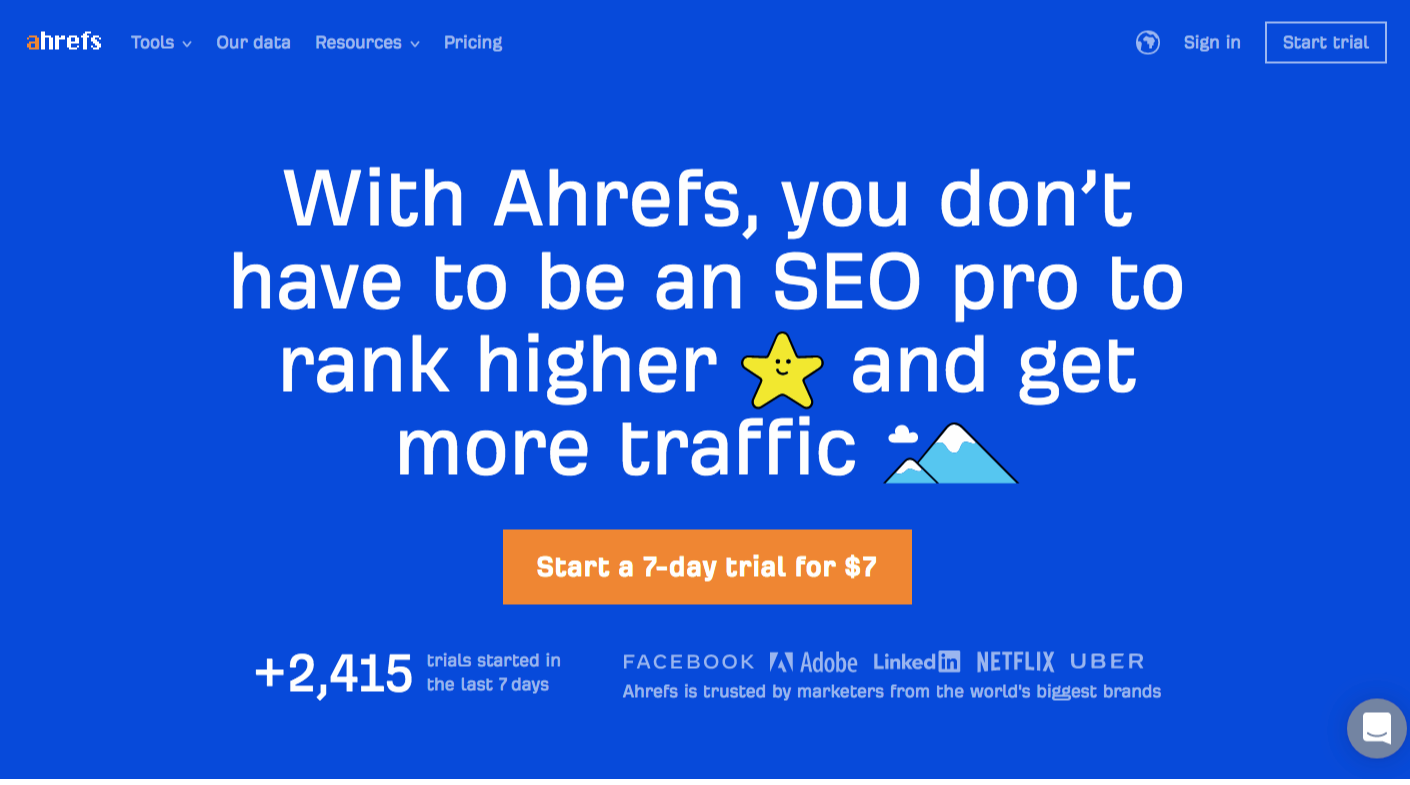
For this guide, we'll focus on activities related to link building.
If you don't what link building is, start first by reading this beginner's link building guide.
How to Find Backlink Prospects Using Ahrefs Link Explorer
Every link building campaign starts with finding websites that can potentially link to your business.
When finding link prospects, you can use Google and advanced search operators to discover blogs and websites to look after for links.
You'll surely discover hundreds of websites following this process.
But if you're looking for a scalable way of link prospecting:
You use Ahrefs.
Ahrefs has a Link Explorer feature to help you find websites linking to the URL or domain you've entered.

The URL you will enter can be a competitor of your business.
Since you'll enter a relevant competitor, you also find backlink prospects that are relevant to your business.

You'll then see a bunch of websites linking to your competitor's website. This could be your possible backlink prospects for your business.
That's how simple it is.
You do this to every website of your competitors. And you'll find thousands, if not hundreds of link opportunities (e.g. guest posts).
Now, if you lack ideas of who your competitors are.
You go to one feature of Ahrefs: competing domains.
Click "Competing domains".

You'll see all websites competing with your business.
Going back.
If you want to get all the backlink opportunities (websites linking to your competitor's website), click Export in the Backlinks feature.
How to Find Guest Blogging Opportunities Using Ahrefs
Guest blogging is the practice of contributing a content piece to another blog, whether that piece is an article, visual assets like an infographic, video, or any other content format. And get backlinks in return for that value.
Here's how to find guest blogging prospects using Ahrefs.
Enter a keyword in Content Explorer.

Add a filter for Domain Rating and toggle to see only "One page per domain".
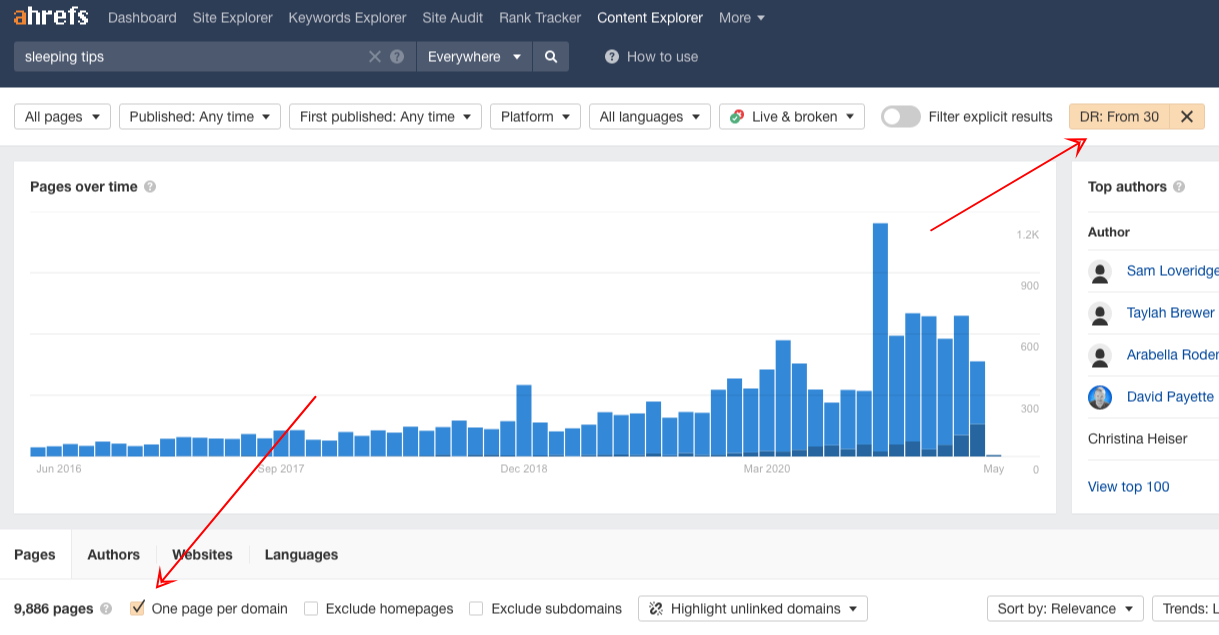
Use the "highlight unlinked domains" function to highlight results from websites that haven't linked to you before.
Now, that gives you a list of blogs you can consider as guest blogging prospects.
How to Find Unlinked Mentions Of Your Brand Using Ahrefs
Not all websites that mentioned your brand would link to you. Some will do, others do not.
But for those who didn't link to you, what you can do is reach out to them and ask to link back.
Given that they've mentioned you, you have leverage for links by simply asking them.
So, how do you find these "unlinked mentions"?
Search your brand name in Content Explorer.

Click the "highlight unlinked domains" button. And enter your domain.

Then, you'll see websites that mentioned your brand on one of their pages.
You can check out this guide on link reclamation to know how to qualify these brand mention pages and reach out to them effectively to acquire links to your site.
How to Find Podcast Opportunities Using Ahrefs
Podcasts are everywhere.
In your industry, there are podcasts you can get interviewed in, to bring your message out there to your target audience.
Using Ahrefs, you can find these podcast backlinks opportunities.
Find a thought leader or someone who've been guested on many podcast in your industry. This will be your starting point.
Look for his website and enter it into Ahrefs' Site Explorer. Go to the Backlinks report and search for their name.

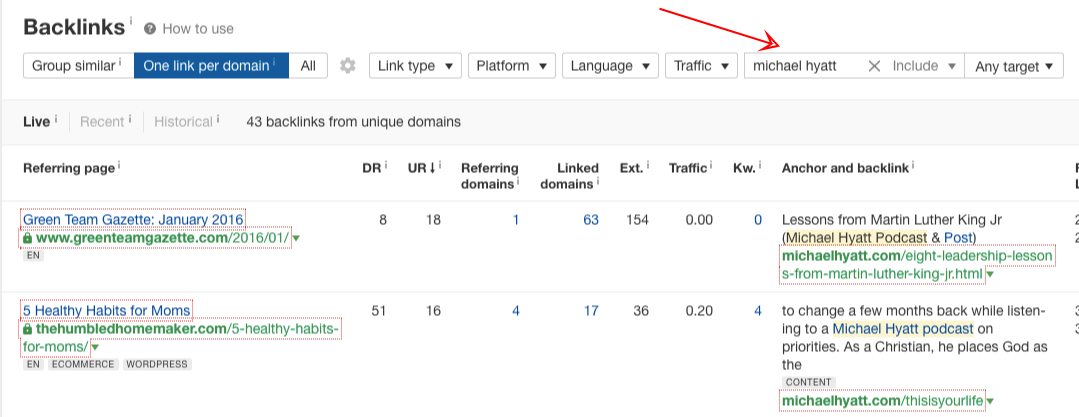
This will give you websites where the person has appeared on.
You can learn more about this from this guide on getting podcast link opportunities.
How to Find Broken LInk Opportunities Using Ahrefs
Deadrot is something link builders can take advantage of.
Broken links on other websites are link building opportunities for your website.
Using Ahrefs, you can discover these broken links.
There are two approaches you can apply here.
First is by entering a competing website into Ahrefs' Site Explorer.
Then go to "Best By Links" and filter for "404 not found".
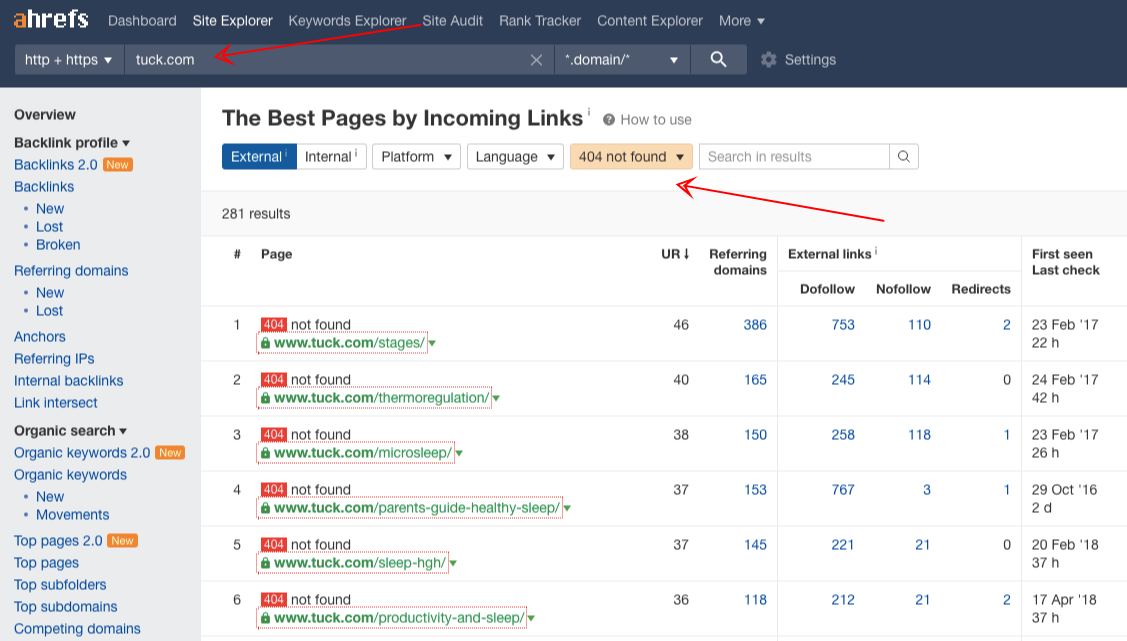
Find any pages that linked to the 404 page by plugging it into Ahrefs' Site Explorer.
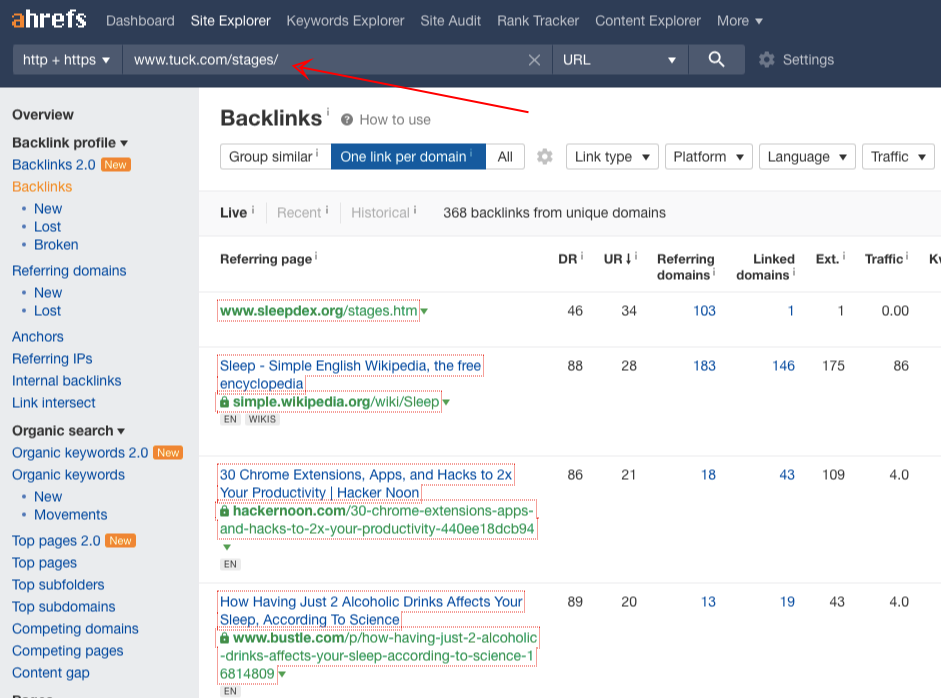
These will surface you link opportunities you can reach out, and offer your resource as a replacement to their broken link.
Another way to find broken link building opportunities is by using Ahrefs' Content Explorer.
Enter a topic or keyword.
Then filter for "Only broken".
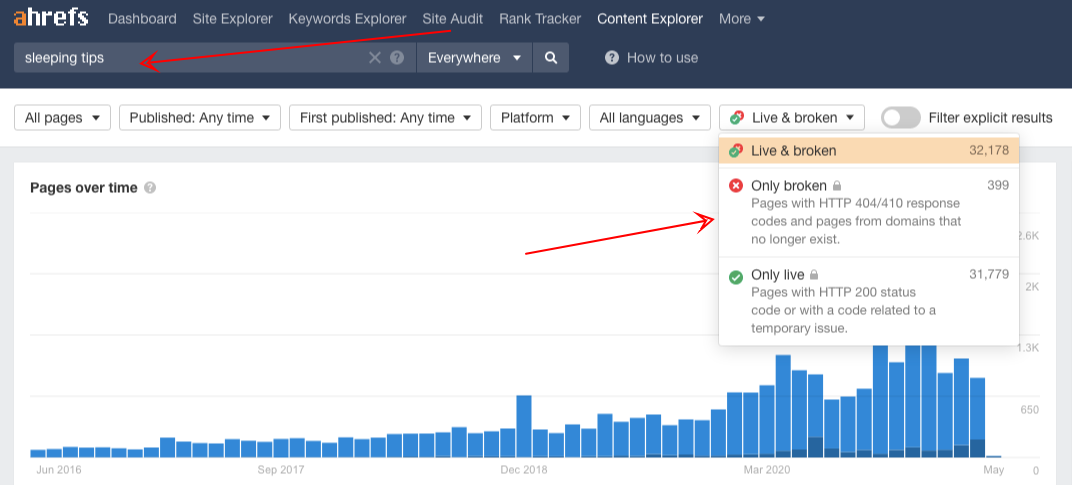
Set the filter for referring domains for a minimum of 50. This will give you linkable pages that you can recreate and publish on your website.

How to Prospect For Resource Page Link Targets Using Ahrefs
There are a lot of resource pages available on the web.
Use Ahrefs to find them.
Enter a relevant keyword into Content Explorer plus a search operator, "inurl:resources" to find only pages with resources on its title or content.

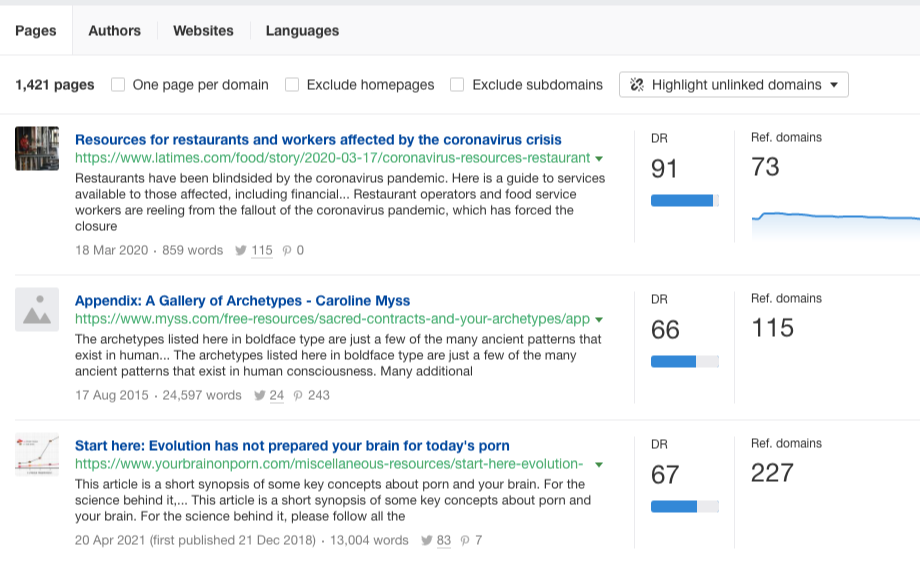
How to Discover Content Syndication Opportunities Using Ahrefs
Content syndication happens when a content is re-published by other third-party websites.
As the content is automatically being republished, it gets more visibility on other more web places.
How do you find these content syndication opportunities?
First thing to do is to find a website that gets syndicated regularly. You can also find an author, content creator, or blogger who gets his article republished elsewhere.
Ahrefs now has an author feature to help you discover authors in your space.
Simply type any keywords in Content Explorer. And go to the Authors tab.

Once you find an author who has a blog that gets syndicated. Paste the domain into Ahrefs' Site Explorer and go to the Backlinks report.
Search for "originally appeared on" in the "Include" box to filter the pages with titles, and content that includes that phrase.
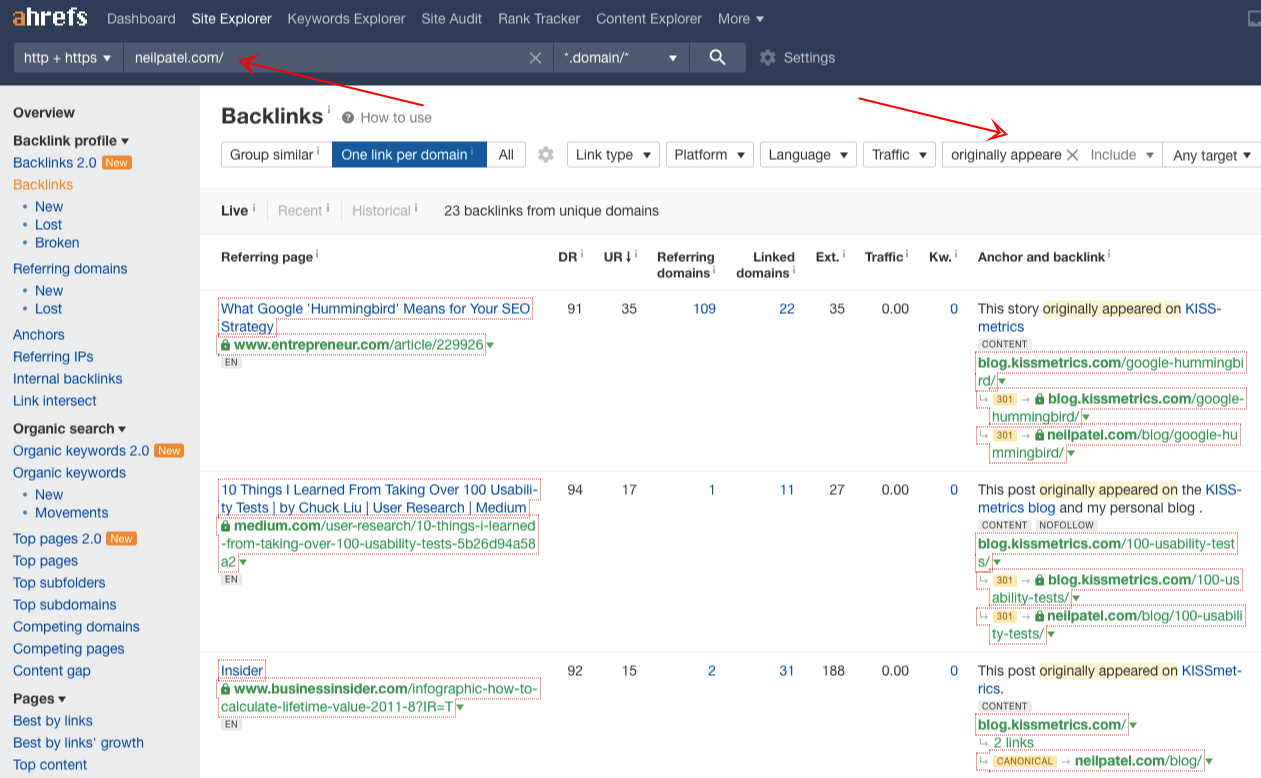
Now, these are content syndication opportunities you can leverage for links.
How to Find Industry Authors Using Ahrefs
When people use guest blogging, they opt to look for websites and blogs.
A more strategic way of doing this is to find industry authors.
There are many things you can do when you find them, either you hire these industry authors to create content for you and distribute third-party content on other niche blogs.
Or get these industry authors to promote content published on your website.
Now, how to find authors in your space using Ahrefs?
Go to Content Explorer.
Click on Authors tab.
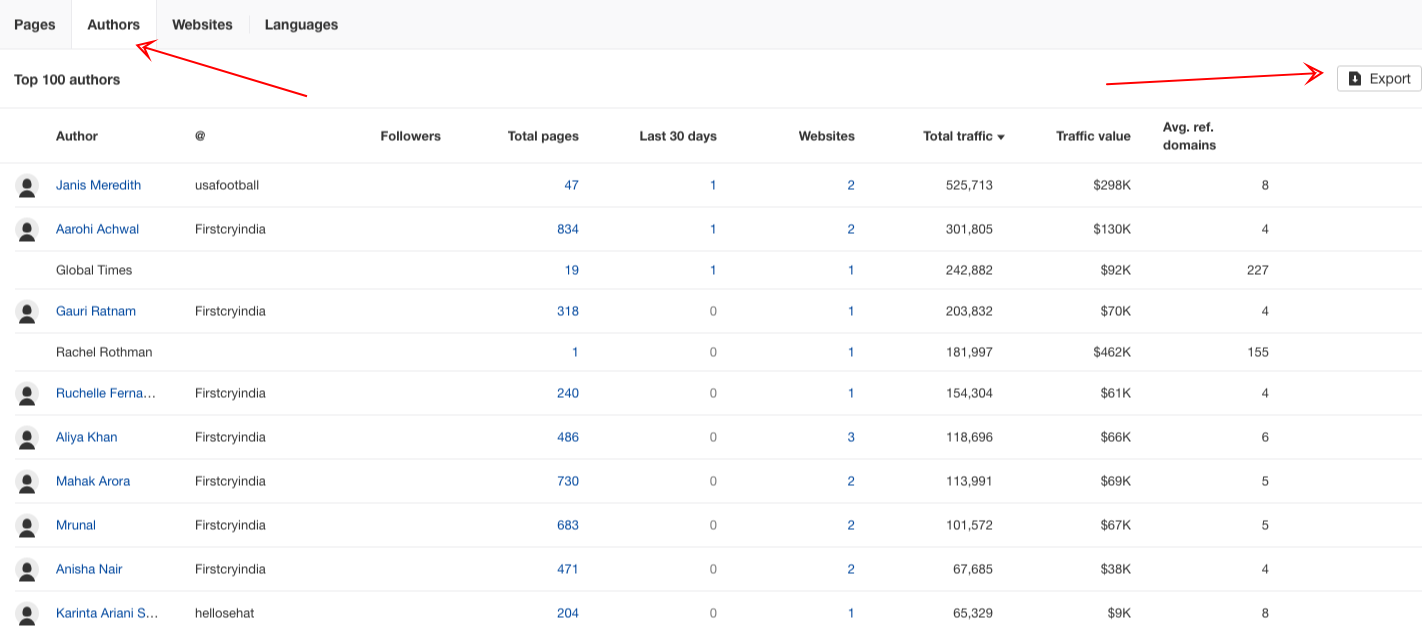
You can export the list to further assess each author.
You can then filter them by their number of followers, traffic value of their website, and average referring domains.
How to Monitor People Linking To Less-Deserved Content Using Ahrefs
Link building is a matter of giving value to a target audience.
If you can more value to linkerati, you get these people to link to you without hesitation.
If your ranking page isn't getting its deserved spot (not yet ranking number one), then either the competition for that keyword is too difficult, or your competititors' pages have more high-quality backlinks than you.
Besides making your content better to serve both search engines and search users, you would want to build more backlinks to your page.
You can reach out to people who linked to the top-ranking page.
A more strategic approach is to find any less-deserved content (people with lesser backlinks than the top-ranking page), but are getting continuously links from publishers.
Use Alerts feature of Ahrefs to send you alerts whenever people link to those pages.
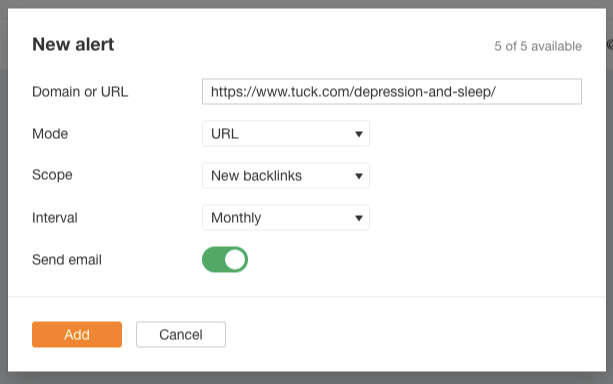
As soon as you receive alerts, check each of them and see if your content deserves more of getting the link than your competitor.
Whenever you find it relevant and more feasible for your content to get links, consider reaching out to the linker and share your content.
How to Find Fresh Outreach Prospects In Your Industry Using Ahrefs
You need to find an outreach angle when reaching out to potential linkers.
Whether that's an interest of the prospect you're tapping into, or as simple as describing your content from a unique angle.
One way to get more responses and link placements from your outreach campaign is to ping them about their most recent content piece.
Oftentimes, people reach out to bloggers about their old articles (most of the time, articles from years back).
Those bloggers obviously may or may not care about their old articles, unless they find it interesting to update them.
So you want to be looking for people who've recently just published their content.
Why is the case?
These are people who are more receptive to suggestions as they're in the positive mode of receiving feedback for their recent content. So that means you have a higher likelihood of receiving responses from them.
How to find fresh outreach prospects in your industry?
Enter a relevant topic (a topic of your content) in Ahrefs' Content Explorer.
Set filter for "Published last 90 days". Then, set a minimum "Website Traffic" from 1K, and "Domain Rating" of 60-90.
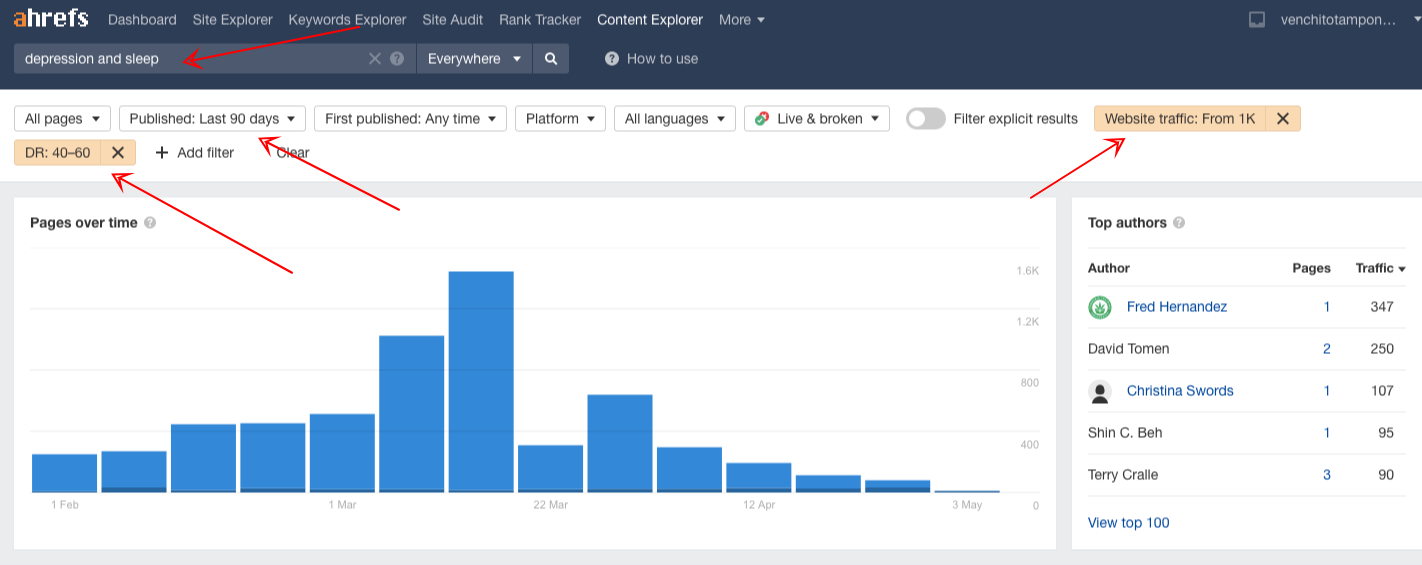
Check "Exclude Homepage" to avoid seeing multiple pages from the same website.
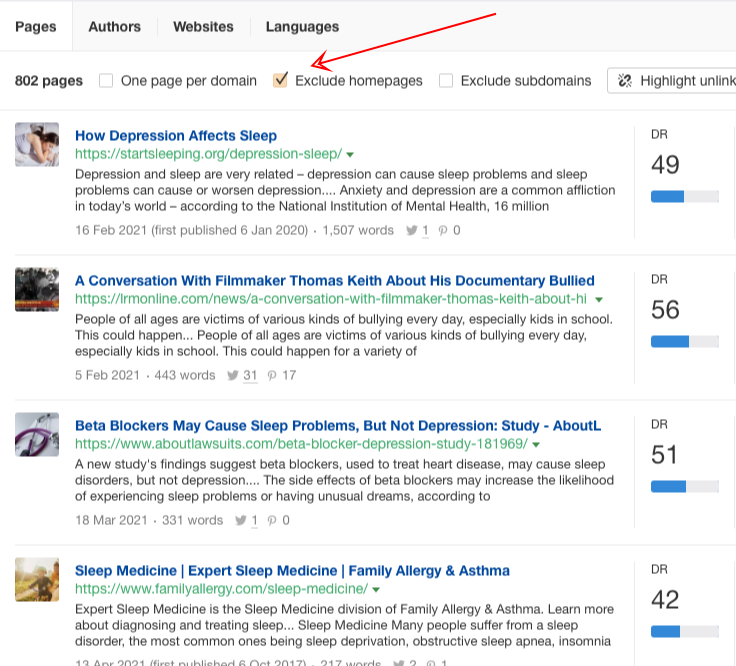
These are fresh outreach prospects in your industry that you can reach out to for content promotion.
How to Discover Link Targets With Potential To Bring Referral Traffic
One of the best types of links is links that can generate referral traffic to your website.
Not only you'll get the benefit of link juice from a relevant website to help you rank in search, but you'll also receive relevant traffic who can be your potential customers.
Now, how would you be able to find these link targets?
Enter a relevant topic on Ahrefs' Content Explorer to see pages that mention your topic.
Then set the minimum search traffic filter to 500.

Export the list and consider them as your link prospects.
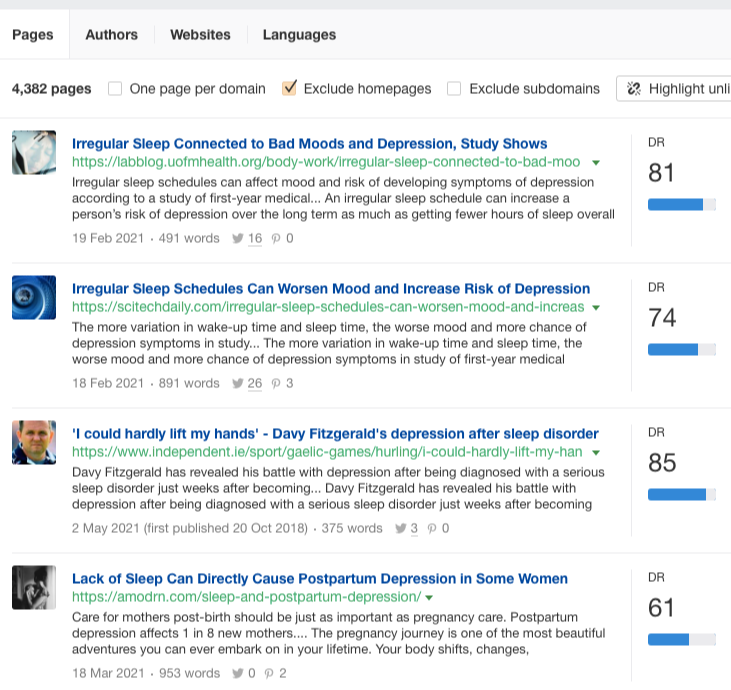
How to Qualify Backlink Opportunities Using Ahrefs
Not all backlink opportunities are relevant to your business.
Not every website is worth pursuing.
That's the reason why you have to qualify sites or specific pages before you reach out to people who own them.
Link qualification helps you to maximize your resources and efforts in link building.
The better you qualify, the less time you spend reaching out to websites with no relevance and business value to your site.
What are some criteria to consider when qualifying backlink opportunities?
First is contextual relevance.
Check the website and see for yourself if the website is topically relevant to your business.
Let's say you're looking for a guest blogging opportunity in the personal injury space.
The most relevant opportunities are personal injury blogs.
If you sell beauty products, your most relevant backlink opportunities are beauty blogs, lifestyle blogs, and mommy blogs (with topics on beauty for mommies).
Second thing you should be looking at is: Authority
This is where Ahrefs comes in.
Ahrefs has an authority metric, called Domain Rating (DR) and URL Rating (UR) that shows you how authoritative a website is (measured on a scale from 0 to 100).

There are two things you can do when qualifying backlink opportunities using Ahrefs:
Manual approach and Ahrefs' Batch Analysis feature.
You can qualify websites manually. Go to the website. Click on Ahrefs tool button (make sure you install it on your Google Chrome Extension).
Or do it using Batch Analysis.
Collect all URLs of your backlink opportunities.
Copy and paste them in the Batch Analysis box. You can enter up to 200 URLs.
Let's say I'm going after guest blogging opportunities, what I'll be pasting in the box are all websites I'm going after for guest blogging.
After pasting all these URLs, click the dropdown and choose "domain with all its subdomains" option.
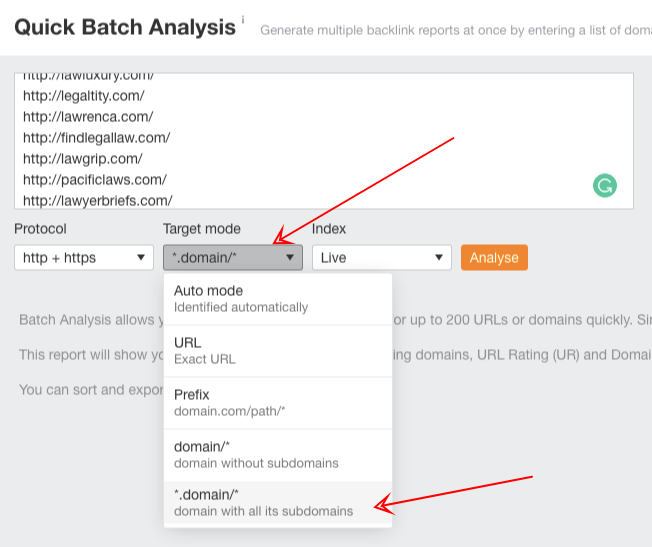
This is important if you want to qualify a backlink opportunity as a whole (not just as a single page).
Now then, you'll see a bunch of data you can use to assess whether a website is good or not.
Basic metrics you can look at from this Ahrefs data:
Organic Search (Traffic)
The monthly organic of the website from search. The higher this metric, the better opportunity because you know that it ranks for its target keywords in Google. This means that if you get backlinks from the website, it could bring visitors to your site through the link.
Ahrefs Ratings (DR)
The higher this metric is, the better. We recommend as a link building agency to have a benchmark of at least 30 (DR of 30 and above). Not too high, but not too low to see if there is enough authority on the website.
Referring Domains (Total)
The total number of unique domains linking to the target. The higher it is, the better. This means that there are other websites that have votes of confidence in your backlink opportunity.
There are a lot of other factors you have to consider when qualifying backlink opportunities, but what I've shared would be enough to help you start with link qualification.
How to Qualify Link Prospects Better Using Ahrefs
Besides using contextual relevance and authority metrics (like Ahrefs' Domain Rating), you can qualify link prospects in a more detailed way.
Using Ahrefs, you can check websites if they have been penalized.
While we don't have data to see if they have been hit by a penalty unless we got a direct access the website's Google Analytics.
However, there are clues when you assess further the website.
You can use Ahrefs to see the website's search organic trends or performance.
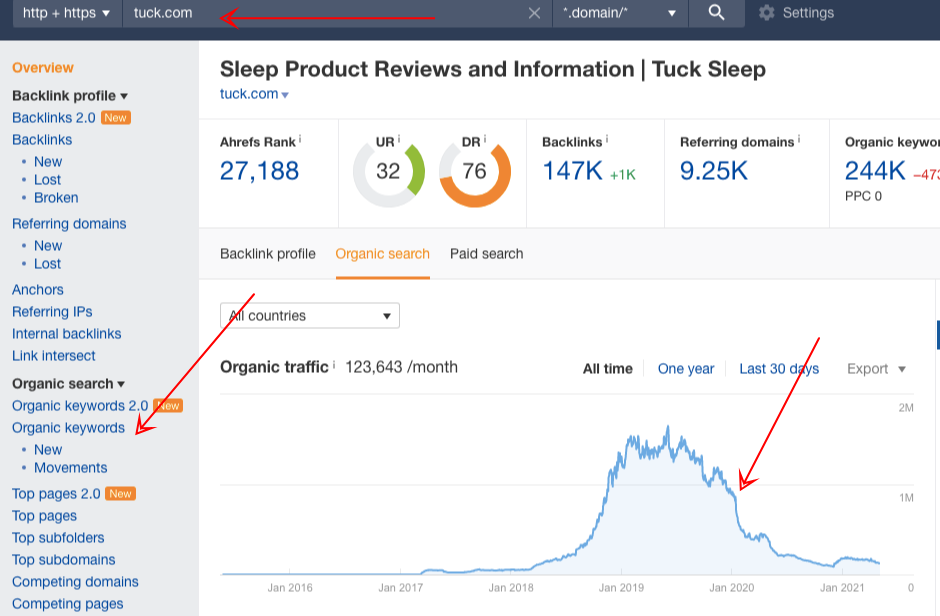
If you see drops in search traffic, you may want to investigate further.
You can't simply conclude the website has been penalized.
Look through the date where the drop began.
Check using Moz calendar of algorithm updates to see if there are any big updates on that date.
Remember that Google is constantly changing its algorithms to serve its search users better.
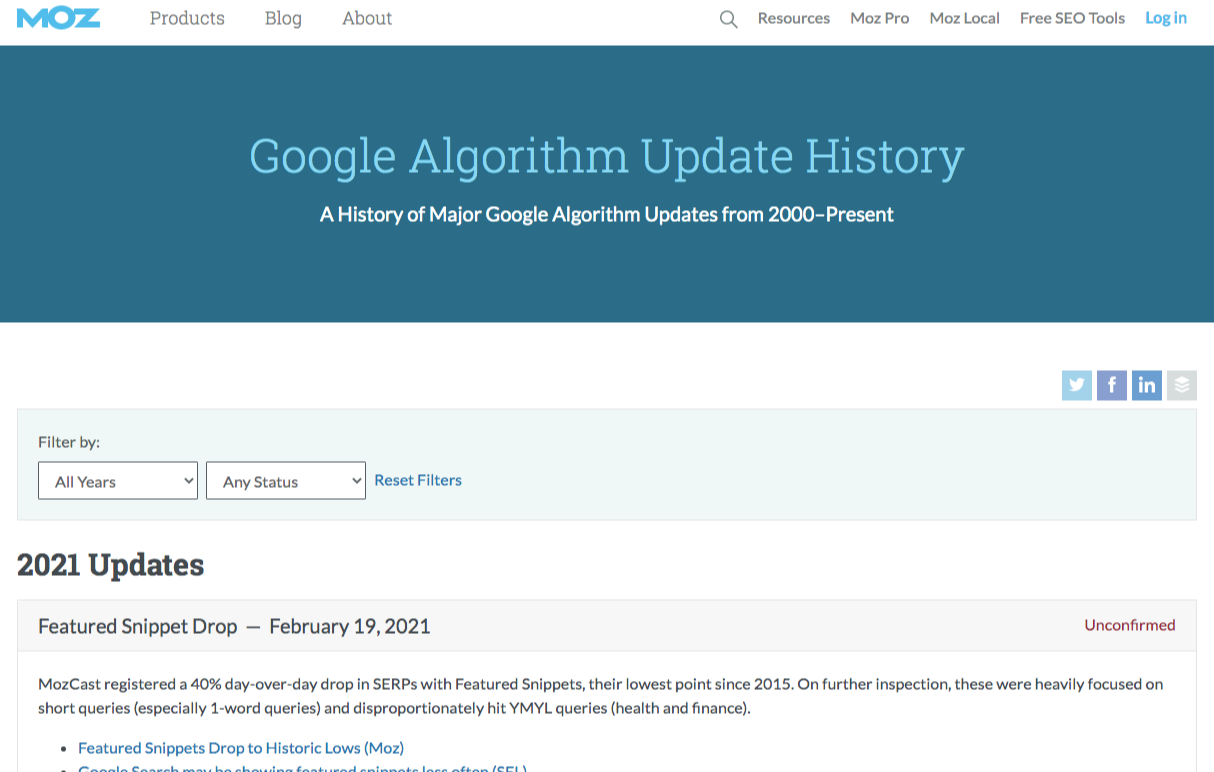
Another thing you need to check is if there are any website revisions during that date.
If there is a website redesign, it may have caused technical errors that led to a traffic drop. Use Wayback Machine and go through the date when you've seen the search drop-in Ahrefs.

One last thing:
Know the seasonality of the website's traffic. There are on and off seasons in certain markets. This means that if a website sells seasonal products, it's understandable the website will experience drops in its search performance.

How to Know If Your Outreach Prospect Has Linked To You Before?
In outreach, it is best if you can identify if your prospects have linked to you in the past.
There are two reasons for this:
First, you may reach out to them later, if you prefer to prioritize websites that haven't given you links yet.
Second, if you see that getting recurring backlinks from them benefits you, consider them as your current outreach prospects.
Now if you need to see if a website has linked to you before.
Enter the website of your outreach prospect in Ahrefs' Site Explorer.
Go to "Referring domains" report. And include your brand or website in the search bar.
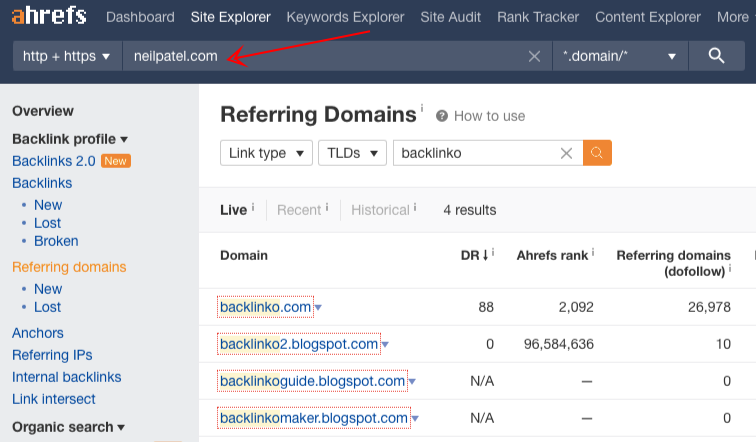
There you'll quickly find all the pages linking to your website or have mentioned you.
How to Discover Linkable Content Topics Using Ahrefs
One reason why people link to a website is they see content worth referencing on their pages.
So creating content that people would love linking to is a great way to increase backlinks to your website.
Content creation is not a requirement all the time. But if you want to scale link building, do it with a strategy.
Use Content Explorer feature of Ahrefs to find linkable topics in your industry.
Start by entering a keyword or phrase (your topic) to search for their database of over one billion web pages.
Your query matches what you choose in the dropdown options:

If you're starting out, it is best to choose "Everywhere" to let the tool explore more pages on the topic.
Go to the bottom section and "Sort by referring domains". This allows pages to sort from highest to lowest referring domains.
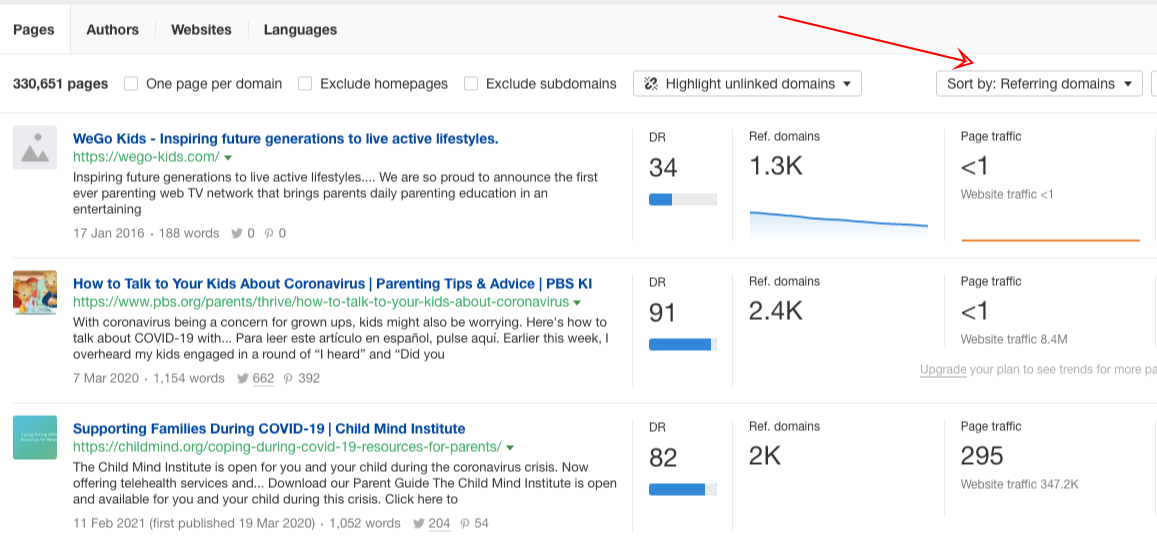
To say that a topic is linkable, a good count is at least 100 referring domains.
For other industries, you may not able to find more than the number, but you get the point.
You should be able to find topics with a good number of referring domains.
How to Find Skyscraper Content Opportunities Using Ahrefs
Skyscraper technique.
Creating a 10x content that's better, longer, and more comprehensive than other competing content on the topic.
It starts with finding what topics you can create yourself.
Use any of the three features of Ahrefs.
A. Ahrefs' Content Explorer
Enter a relevant topic into Ahrefs' Content Explorer.
Set the minimum 'Referring Domains' filter to 50, to give you websites.
You can add a language filter to get only pages in your target language.

Consider checking the Traffic Value of each page in the list, as it gives you an idea of the value of the topic and page related to your business.
B. Ahrefs' Site Explorer
Plug in the URL of an authoritative website (in your industry) into Ahrefs' Site Explorer.
Go to Best By Links section. Set the filter to "200 ok". And sort the list by Referring Domains.
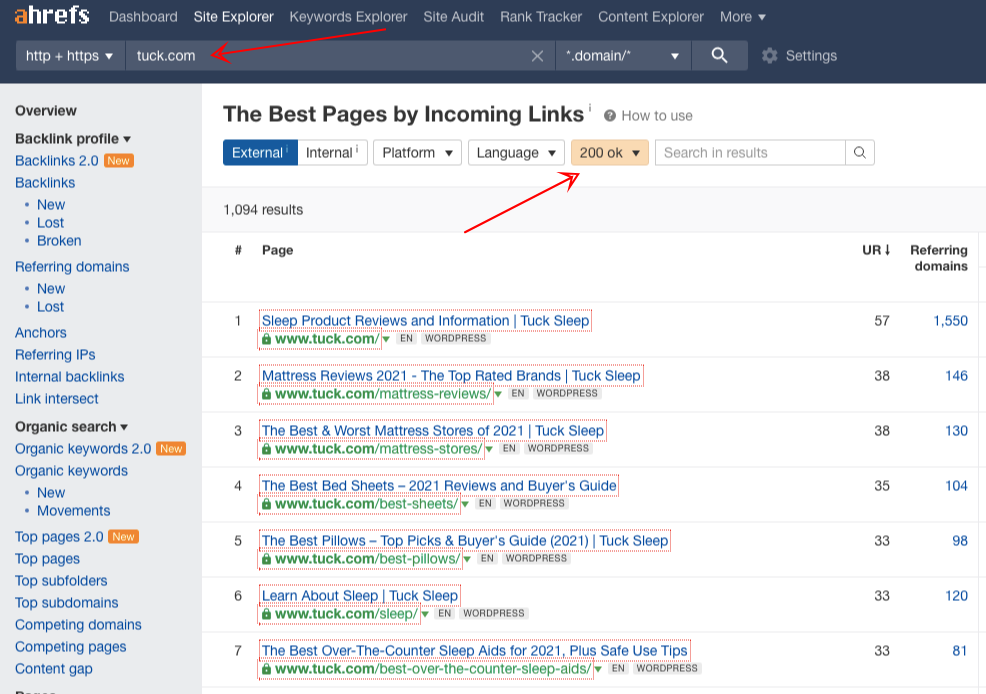
This will give you an idea of what topics are linkable in your industry based on the highest linkable pages of an industry website.
C. Ahrefs' Keyword Explorer
Enter a broad industry keyword into Ahrefs' Keyword Explorer.
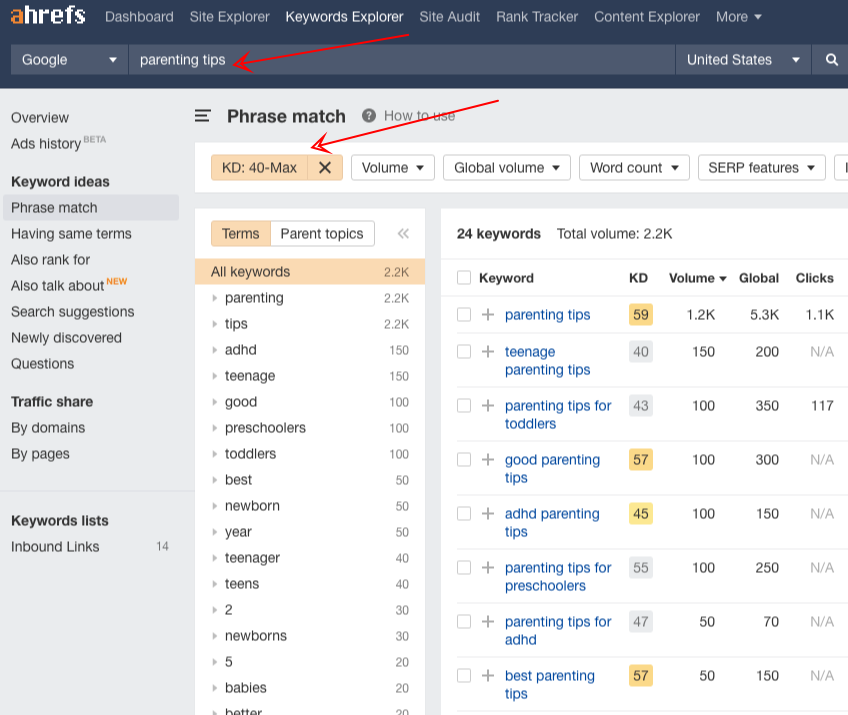
Set a minimum of Keyword Difficulty to ~40. Based on Ahrefs' calculation on KD, the top-ranking pages for high-KD keywords have lots of backlinks.
You can check ranking pages for each of the high-KD keywords. See if they have a good number of referring domains.
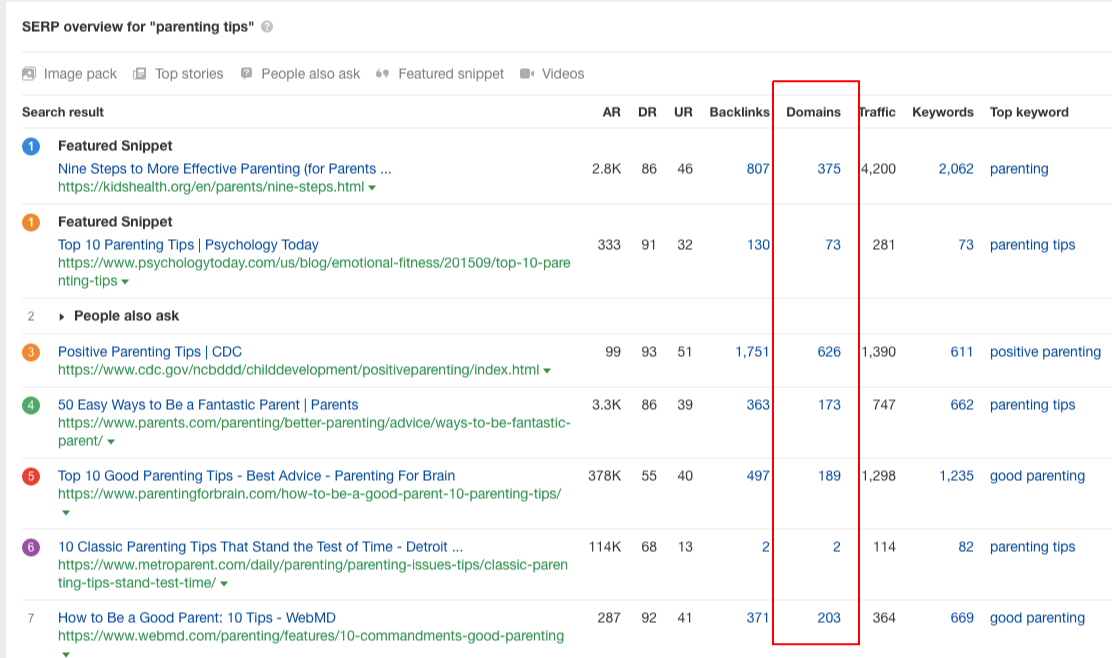
How to Look For "Definition" Keywords Using Ahrefs
Today, most searches for definitions show a featured snippet.

Google pulls this information out from one of the top-ranking pages.
Now, that is an opportunity you can maximize in your content. You could appear in the snippet section if you have a definition of a term on your page.
If you have pages currently ranking for your target keywords, you may want to look if they rank for the definition of terms.
Here's what you can do:
You can enter your domain into Ahrefs' Site Explorer.
Go to the Organic Keywords section, then filter for top 10 rankings with featured snippets.
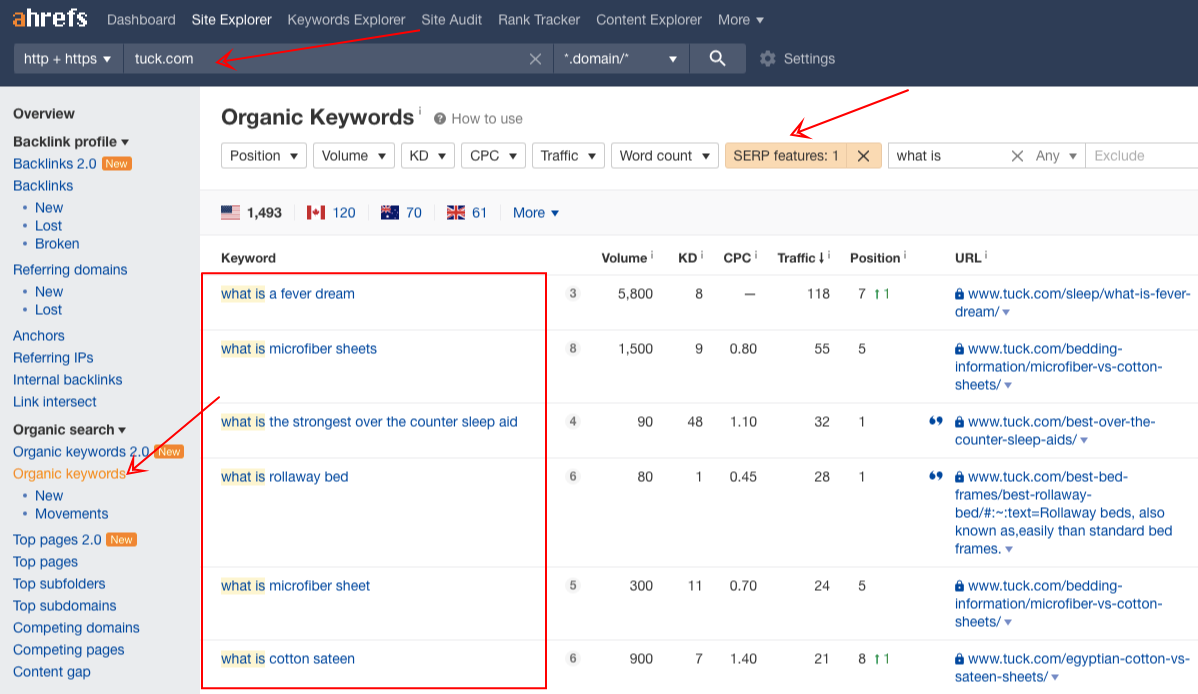
Next thing is you filter for "what is" and "what are" keywords using the Include filter.
Check through your pages that are currently ranking for these definition keywords. Add sections for "what is" or "what are" content. Make sure there's a relevant definition of those terms on your page.
How to Discover Content Types That Get Links In Your Industry
When you look for content topics to write, you also want to know what content types or formats that receive the most backlinks.
That way you can create a content piece that is both consumed best by your target audience and best linked by other people.
How will you know content types that work?
First, find any big publishers in your industry.
Then enter the domain URL into Ahrefs' Link Explorer.
Go to the Best Pages by Link report.
Look for any patterns of the content format that gets links most often.
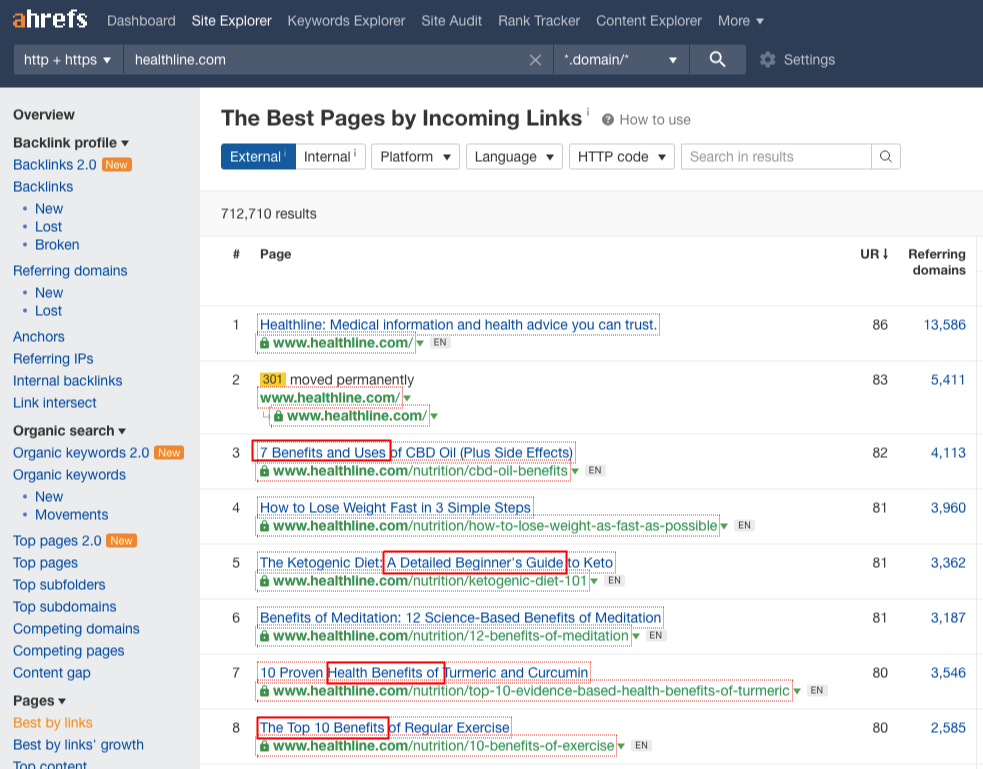
How to Find Videos With Potential To Attract Search Visibility Using Ahrefs
Video marketing gives one of the highest yields in terms of building brand awareness and gaining new followers and visitors for your website.
Here is how you can look for videos that have the potential to attract views from Google.
Go to Ahrefs' Site Explorer and enter Youtube.
Go to the "Organic Keywords" report. Then add a relevant keyword or topics to the "Include" filter.
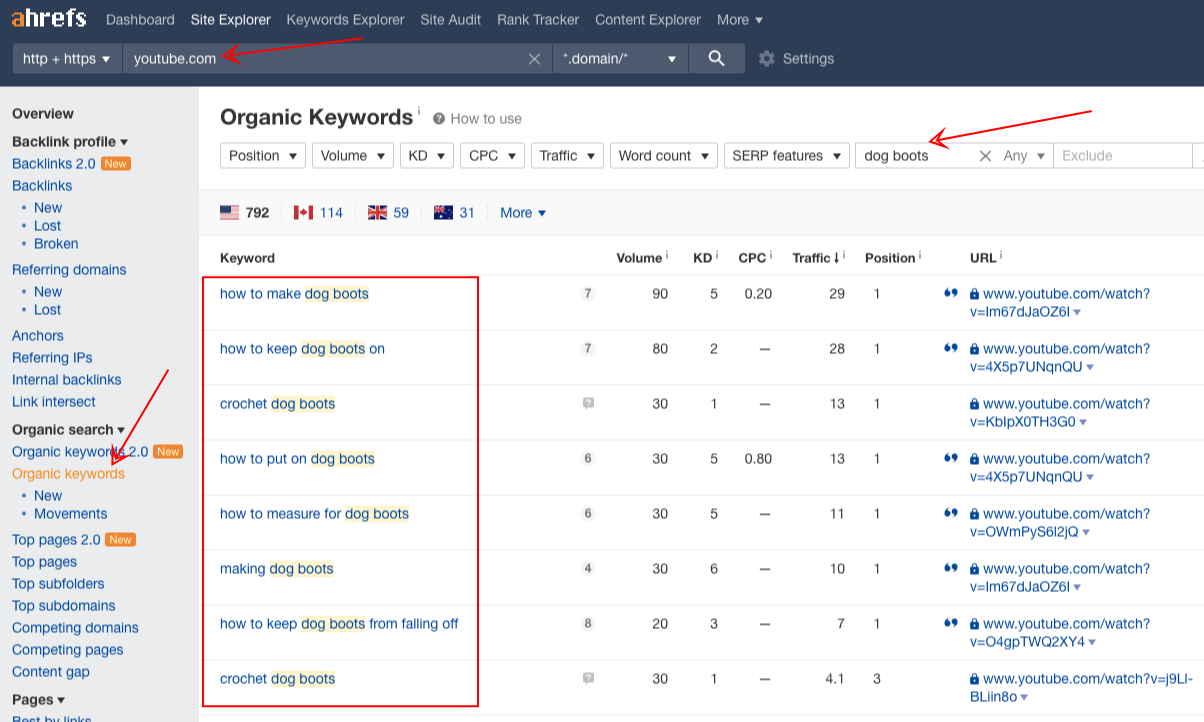
There you'll surface video topics that get on the top of Google when you search for them.
How to Know What Attracts The Linkerati
There are certain pages and topics that receive the most attention from linkers.
A more advanced way of finding what makes them tick is not only looking at the "Best By Links" section of Ahrefs.
If you enter a website into the tool, you'll find what pages they get the most number of links.
However, that's not to account for the velocity of their link building campaign. That means, if they're doing link building effectively, you'll likely see a steady growth of links.
You don't just see the Best By Links section, but also find some time to get more insights from the Best By Links growth.
If you try to reverse engineer a competitive content to know what attracts the linkerati, use Best By LInks growth for that. This feature of Ahrefs doesn't just show you what worked in the past in terms of link attraction, but what also works today.
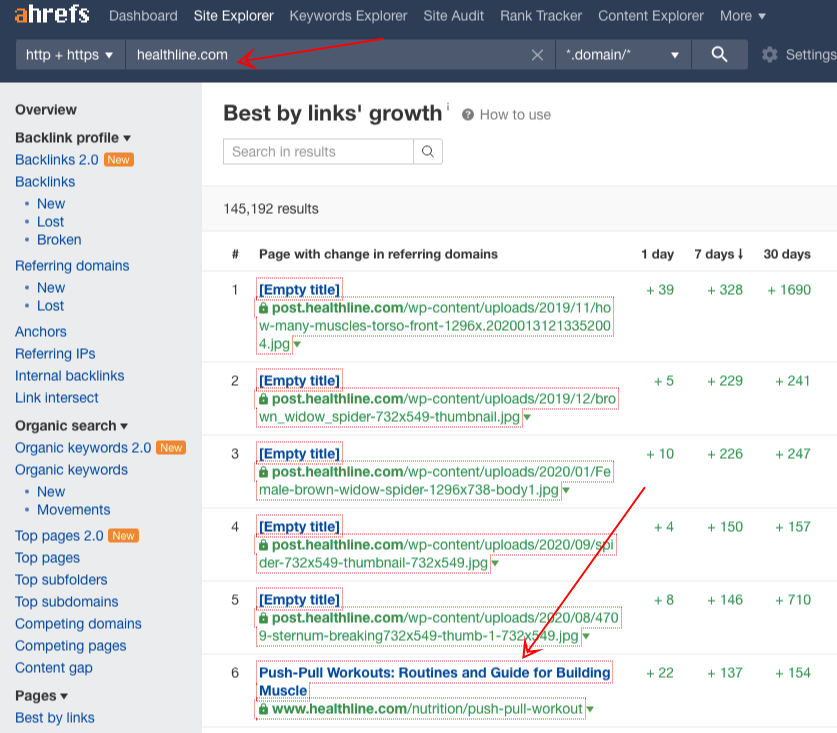
A steady link growth implies you have a content type and topic that captures attention from linkerati continuously.
How to Make Your Content Better By Knowing Why People Link To Ranking Pages
Content creation is not a one-time hit wonder.
You don't stop just because you create one.
But you continuously update it to better serve your target readers.
One way to make your content more powerful is to understand why people are linking to your competitor pages.
When you get insights as to why link to them, you can go back to your content and add insights to your page.
Here's how to do it.
Get one of the ranking pages for the target keywords you're trying to rank for. Enter the domain into Site Explorer.
Go to Anchors report. In here, you'll see what anchor texts people are using when they link to this page.

You'll then see anchor texts not commonly used by other people.
Look deeper and try to understand why by going through each of the pages linking to the content.
For instance, one reason the page gets a different anchor text because the author has a new section for the page he needs more references on a sub-topic.
You see:
Knowing why people link to certain pages can give you insights as to what sections to add to your content to make it better for your target audience.
Conclusion
I hope you got a ton of value from Actionable Tips On Using Ahrefs For Link Building.
Now I’d like to hear from you.
What tip from today’s post are you going to try first?
Do you want to try discovering linkable content topics using Ahrefs?
Or maybe want to try knowing if an outreach prospect has linked to you before?
Either way, let me know by leaving a comment below.
How to Use SEMRush SEO Writing Assistant for Content Optimization
What is SEMRush SEO Writing Assistant?
SEMRush SEO Writing Assistant is a smart extension for everyday use of content specialists. It offers recommendations straight from what it calls, 'SEO Content Template' (SCT). It provides recommendations and analysis based on the top 10 pages ranking for a given keyword.
How Does SEMRush SEO Writing Assistant Work?
Many content writers are confused as to who they should serve: search engines or users.
With many debates, the best answer is both.
And you can actually do so. With SEMRush SEO Writing Assistant, you can have the ability to check the SEO potential of a blog post — meaning how well it'll rank for your target keyword.
While maintaining the quality of the piece - conciseness, flow, context, you also want to make sure it includes keywords and related terms for better search performance. This would allow your page to serve both search engines and its users.
SEMRush SEO Writing Assistant is a reliable and handy tool. It’s very useful as you don't have to sign in to your SEMRush account every time you want to use it.
Features, Details, and Pricing
The main question for every content creator trying a content product is, "what does the tool gives me?".
Here are the features of SEMRush SEO Writing Assistant:
FEATURES AND DETAILS
Overall score
This shows you the general quality of an article. It is calculated based on four metrics: readability, SEO, tone of voice, and originality.
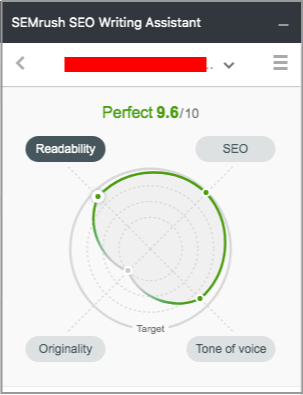
Readability
Readability is the ease with which a reader understands your text (readability score). It covers four things:
- Plain language. This refers to how the text corresponds to the basic reading level of a person (reading ease score).
- Target words. This is based on the average words used by the top-ranking page for the keyword.
- Title issues. Is your title present in the most important places of your content?
- Content Issues. Do you have long paragraphs that need to be cut? Do any hard-to-read sentences need to be rewritten?
SEO
The SEO section, only covers keywords, alt attributes of images, link issues, and title issues.
- Target keywords. The tool will let you know if you're using keywords at least once in the entire content. This is SEO 101, yet most bloggers don't apply this.
- Recommended keywords. Enrich your content by adding semantically-related keywords, primarily based on the top 10 ranking pages.
- Alt attribute issues. Do your images have alt-attributes?
- Link issues. Do you have external links in your content? Are these links functioning or broken?
- Title issues. Have you used your target keywords?
Tone of voice
The tone of voice is how you say your message, including the choice of words, their order, rhythm, and pace. The tone of voice of your content could be very casual, very formal, or anything in between
Consistency in a tone of voice measures how well you did maintain the tone of voice across your content. SEMRush SWA gives you a list of the most casual sentences as well as the most formal sentences.
Originality
This feature gives you the total percentage and number of copied words from identified content sources. The originality check is based on the Copyleaks Plagiarism Checker.
PRICING
SEO Writing Assistant tool is already included in the SEMRush toolkit. However, based on the plan that you purchase, you are only allowed a certain number of users for the features.
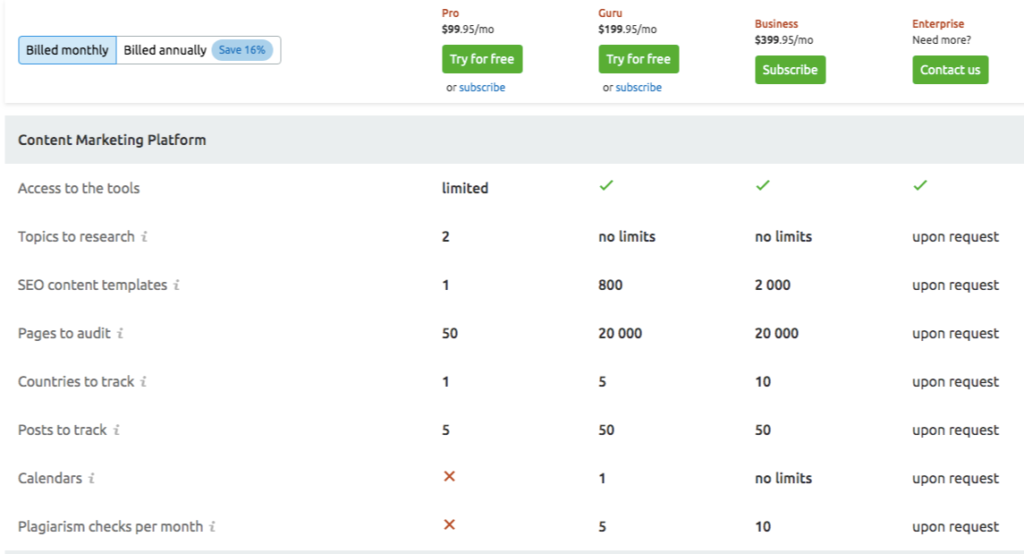
For example, if you are using a Guru account, you can use 800 SEO content templates every month. While if it's a PRO account, you can only have 1 content template.
Meanwhile, plagiarism checks are not allowed for a PRO account, but for Guru subscribers, you can have 5 plagiarism checks every month.
How To Use SEMRush SEO Writing Assistant?
There are two ways you can use SEMRush SEO Writing Assistant: adding a Google Docs Add-on or installing SEMRush SWA WordPress plugin.
Google Docs Add-on
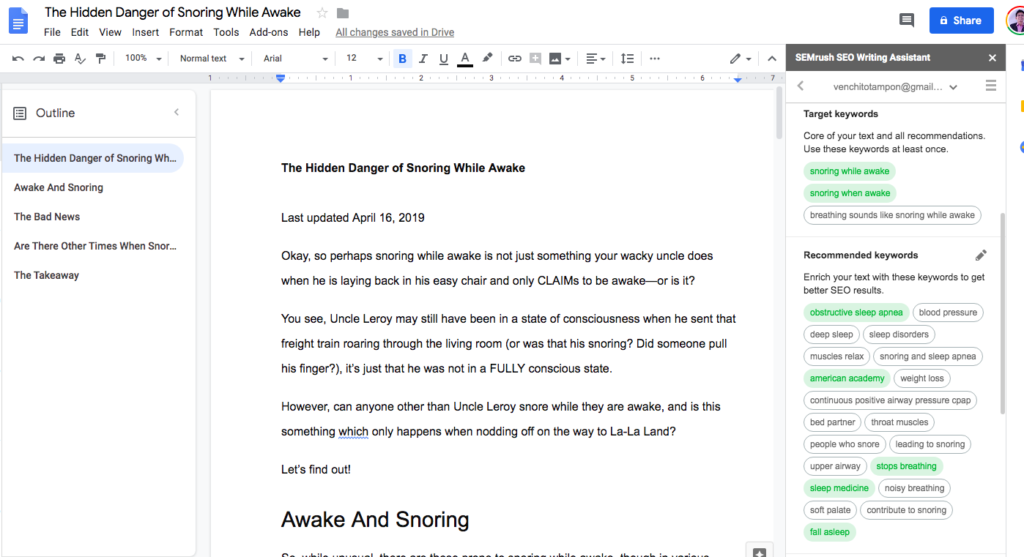
Install the SEMRush SEO Writing Assistant as your Chrome Add-on.
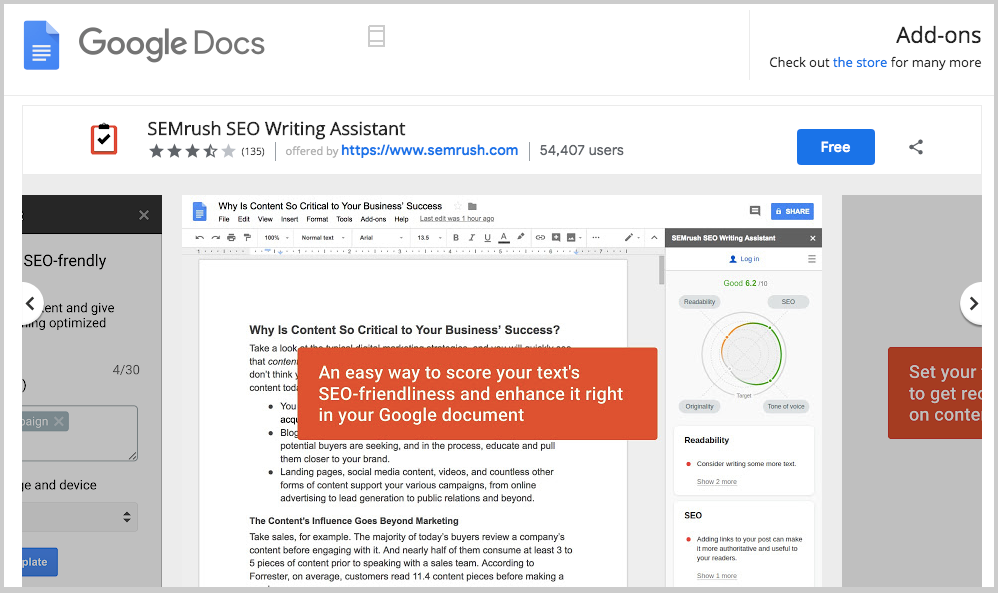
Once you install it, click Add-ons in your Google document, then choose SEMRush SEO Writing Assistant.
You have to sign in to your SEMRush Account to get started with the tool.
WordPress Plugin
You can download this Wordpress plugin and upload it to your plugin files.
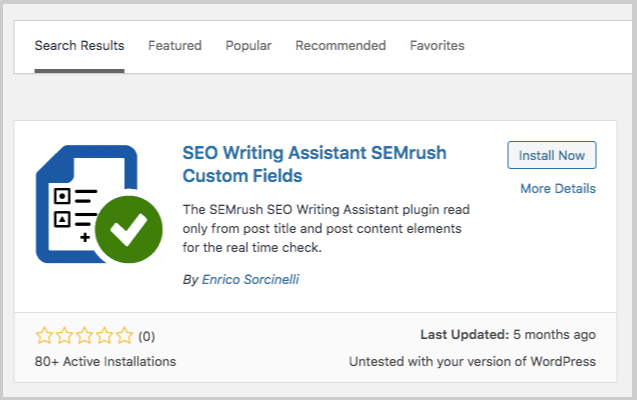
Another method is to simply search the plugin directory for the SEMRush SEO Writing Assistant plugin, and click install.
Below your content draft, you'll see a section for SEMRush SEO Writing Assistant.
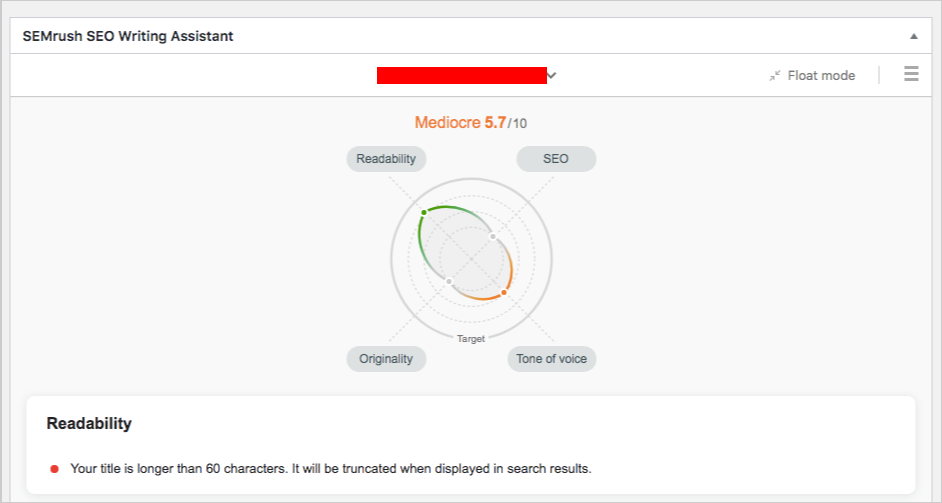
I highly recommend you use the Float mode. This gives you the freedom to see both your content draft and SEMRush SWA on the right side of your WordPress screen.
SEMRush SEO Writing Assistant in Action
The basic content optimization based for most content creators is adding target keywords in the title of the page, header tags, and including those keywords as often as it can be (contextually) in the content.
Content optimization doesn't stop there. With Google being more and more intelligent in understanding the context of the page, you have to optimize your content for LSI keywords.
LSI (Latent Semantic Indexing) Keywords are conceptually related terms that search engines use to deeply understand the content on a webpage. (source: Backlinko)
SEMRush SWA does the legwork of giving you what related industry terms to add to your content. You can go straight edit your WordPress draft, and contextually as it fits, incorporate fitted ones.

You also want to make sure entities that will give more context to your content page are being added. SEMRush SWA doesn't show you all, but in my own testing, it gives you a few entities (names, personalities, brands, institutions, etc..) that could add context to your page. Those recommended keywords show semantic relevance to your page.
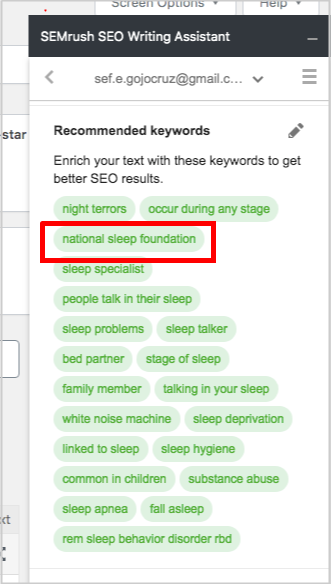
The length of paragraphs matters in search rankings. There is an average word count of rankings pages for your target keyword you can hit with your content — ensuring you have a chance to compete for the top ranking.
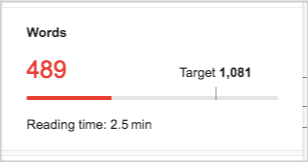
Readability is important for users. You don't have to make your content complex to consume. Depending on your users' reading level, you want to make your content as readable as possible to general, yet targeted audiences.
Splitting long paragraphs, rewriting hard-to-read sentences, and simplifying complex words to make the content readable is highly recommended.
Lastly, what I liked about SEMRush SWA is its SCT or SEO Content Template, giving you an extended list of recommendations to further optimize your content.
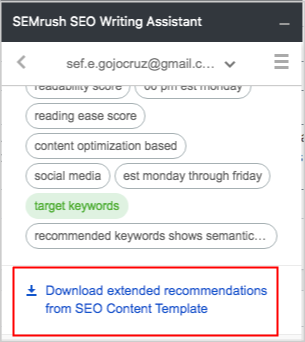
You may also schedule content optimization in your calendar through the SEMRush platform. Rename your activity title and choose the date and time you want to focus on optimizing that certain content piece.
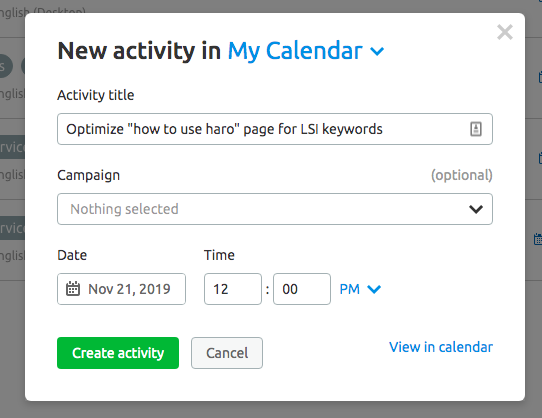
Further Reading:
- SEO Writing Assistant
- How to Create SEO Friendly Content with SEMRush
- How to Use SEMRush For Content Marketing
- Content Marketing Ideas and Strategies For Small Businesses
- Content Gap Analysis
Key Takeaways:
While there are many initiatives to execute in every SEO campaign, one you shouldn't ignore is content optimization.
Optimizing existing content assets is just as important as publishing new pages. SEMRush SWA can be a handy and useful tool to speed up recommendations for content optimization.
How to Use VoilaNorbert For Linker Outreach
Outreach is a critical part of any link building campaigns given that this is where you have to ensure your prospects are pitched carefully with extreme value for them.
With so many tools to aid your outreach process, it's so hard to identify which ones actually help you move the needle in every initiative of the campaign.
There is one web product that's been available in the market to help you with finding someone's email addresses, email verification, and scheduling email pitches.
It's VoilaNorbert.
What Is VoilaNorbert?
VoilaNorbert is a lead intelligence software that allows you to find new email addresses of people you are trying to pitch, verify the validity of those emails, and/or schedule emails at your preferred date and time.
Features, Details, and Pricing
Unlike other outreach tools that have tens of features, VoilaNorbert focuses on three core uses.
The first is finding leads.
Find email addresses
VoilaNorbert helps you discover and collect the corporate emails of decision-makers of businesses you're trying to get in touch with. It also helps you find the email addresses of publishers, bloggers, or any content creator you are looking to pitch for content publishing.
Finding email addresses can be done manually. Go for each target website or page, skim through it, and keen an eye on a section that tells you the right contact person and email address to contact. Copy and paste it to your spreadsheet and you're done.
That is the most basic way of doing it.
However, doing it on a scale of hundreds and thousands of prospects will consume so much time you could otherwise spend on crafting an email copy that gets their interests.
Furthermore, if you're working on a scalable link building strategy, i.e. guest blogging and broken link building, it's vital to find a tool that will get things done very quickly — as in the case of collecting important contact details of outreach prospects.
Verify emails
Did your emails fail to receive responses from your link targets?
It's probably not because your email pitch is crap, but that the email address isn't valid anymore -
VoilaNorbert gives you the ability to validate emails in real-time. By doing so, you can now reach real people and expect replies from them.
There are tools that function just like that — verifying email addresses. But if you're looking for a flexible one that does both two core functions straight from the platform: finding email addresses and verifying them, VoilaNorbert is the best fit for you.
You can have both functionalities without having to leave the platform.
Enrich contacts
Enriching contacts is sending emails to target link prospects with the right message at the right time they'll be more likely to see and read your email message.
It's important to have a good understanding of what makes an email message effective, especially in aiming to get organic links.
One principle you can apply is the A.I.D.A model, which is an acronym for Attention, Interest, Desire, and Action. Make sure you have these elements included in your email pitch — to make it strong enough to entice responses from your link targets.
Here are some resources you may find valuable to improve your email copies:
- Six Small Differences You Can Make to Your Email Outreach
- The Definitive Guide To Link Building Outreach
- Why and How Influencer Outreach Works
How Does VoilaNorbert Work?
Sign up to get your first free 50 leads.
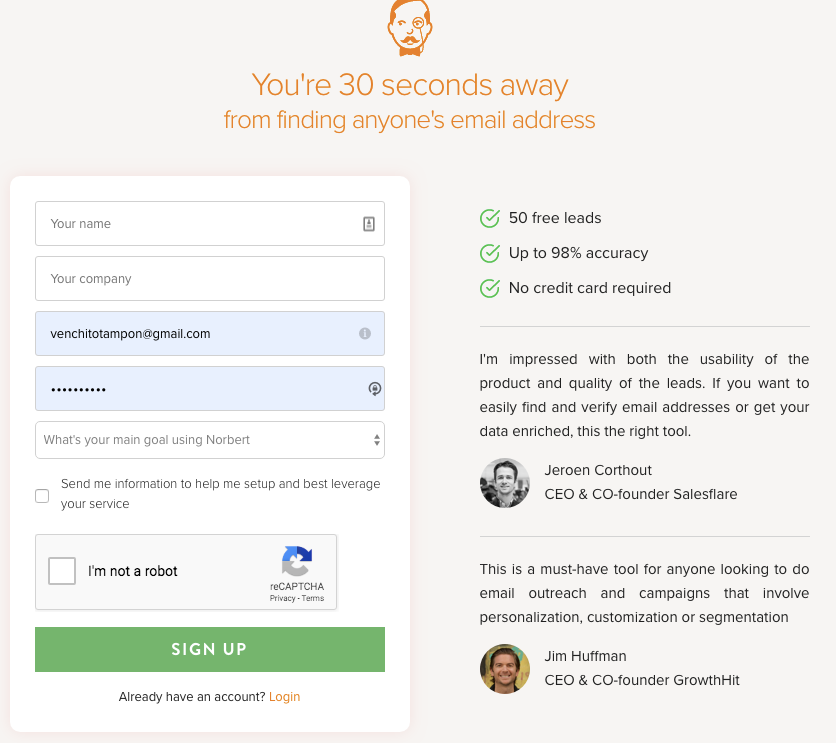
Once you've confirmed your registration, you can now log in to the tool.
You'll then see the features of the tool. Let's talk about each of them.
Prospecting
There are two prospecting methods: manual and bulk.

With manual prospecting, you simply have to enter the name of the contact person and the domain URL of the website. Then click, Go Ahead, Norbert!.

As for bulk prospecting, you have to upload your CSV file with columns for Names and Company Names.
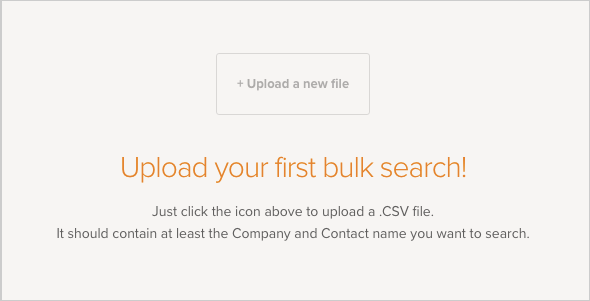
What I liked about VoilaNorbert is that it gives you a sense of the validity of the email by showing you a green color for a high percentage, an orange one for mid, or red for a low percentage of validity.
Furthermore, if you wish to send an email straight from the platform, you can do so by clicking the Mailbox button.

Link builders should look for ways to improve their productivity. In finding email addresses, VoilaNorbert saves you enough time with its Chrome extension tool.
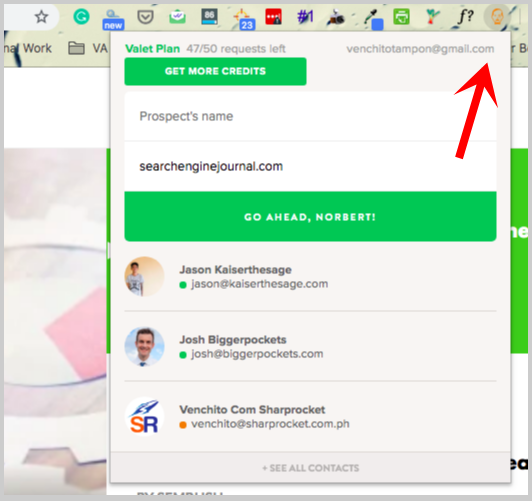
If you're on your target page, simply click the VoilaNorbert tool in your toolbox. You can use it immediately to find the right email address for that page. It's a handy feature that keeps you highly productive in your email-finding process.
You may want to check out this guide on top Gmail extensions you can use for linker outreach, and link building in general.
Validation
To avoid failed messages and ensure you're making the cut through every email pitch you send, it's important to validate email addresses.
Other important reasons to include email validation in your outreach process:
- Reduces time spent pitching invalid email addresses.
- Easily diverts efforts to finding secondary emails, in case the primary email address collected is invalid.
- Clean input in a spreadsheet or on an outreach platform — leading to a more organized outreach workflow
With VoilaNorbert, you can verify emails based on the number of emails you need. This is a good feature that differentiates it from its tool competitors — as it saves so much money if you're into a small outreach campaign.
There are three ways to validate your emails:
- Upload a CSV file
- Copy and paste email addresses from a spreadsheet
- Use connected integrations from other sites/tools (i.e. Mailchimp, Hubspots, or Mailshake).
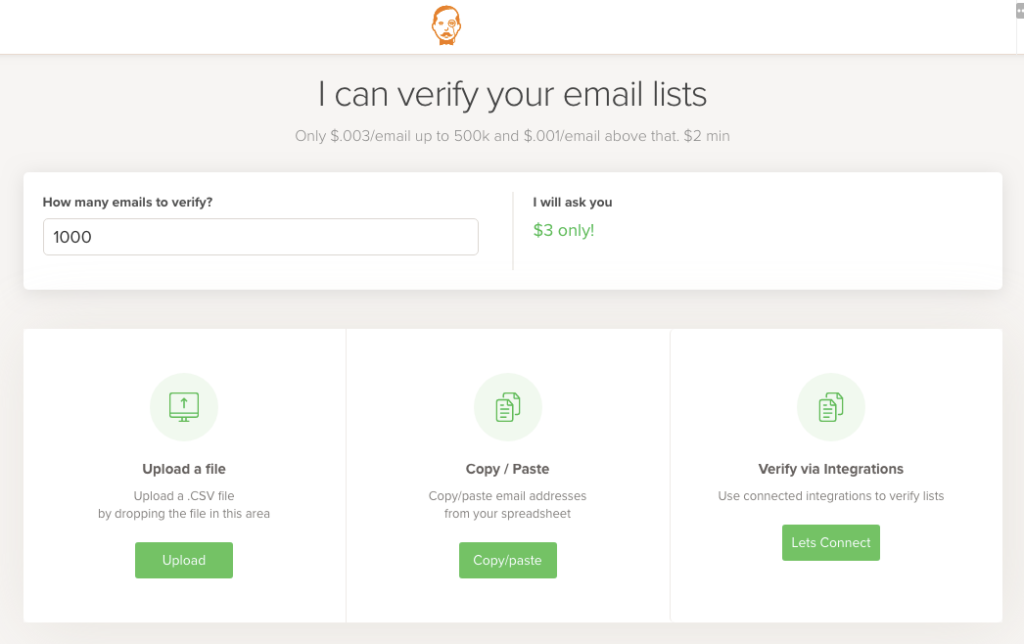
One important note here is that there are emails that will be marked as "Risky" when you start verifying emails. These "risky-marked" emails simply mean that there's a high chance of bounce for that email address.
VoilaNorbert verifies the connection to the mail server owning the email address. If it's not established properly, it is marked with red color and/or risky. The tool has proper functionalities to ensure proper accuracy of email validation — giving you confidence in the results.
Enrichment
In crafting email copies for link building outreach, it's important to include details that matter to your recipient. You can do that by having an overview of their interests.
It's easy to check a Twitter profile, get a sense of what the prospect is up to, his or her location, and what can make you engaged with him/her in your email pitch.
The thing is, if you're doing it on scale finding each and every social account of prospects, it may not be a good investment for your time.
VoilaNorbert helps you with this matter. It can fetch the current job title, employer, location, and even social networks of the person behind the email you're verifying.
This quick feature gives you the ability to know more about your link prospects and not just spam them with another generic pitch.
Best Alternatives to VoilaNorbert
I highly recommend that you use VoilaNorbert in doing outreach tasks efficiently (finding email addresses, email verification, and initial email pitching).
In case, you're not satisfied with its features, here are two alternatives that you can try out:
Hunter
Our link building team is heavily using Hunter as part of one of our email-finding tools. It lets us find email addresses in seconds.
With over 200+ million email addresses indexed, Hunter already has effective search filters and scoring to give you a list of email addresses that you need for the right context.
Clearbit
Clearbit has a deep data engine that's very efficient for lead generation processes. If you're looking for integrations into many platforms, Clearbit's functionality is a good try for you.
Whatever tools you use, whether it's VoilaNorbert, Hunter, or Clearbit, you can leverage them for core outreach initiatives for whatever campaign that is - blogger outreach, influencer outreach, or other types of outreach campaigns.
Finding Email Addresses and Validation At Scale
It doesn’t' hurt to try VoilaNorbert for your linker outreach campaigns. Being able to collect email addresses and validating them in minutes is a huge legwork any link builder aims for.
Validating emails is another micro process that will make a huge difference in how your email outreach results turn out.
Those two processes: finding email addresses and email validation are critical success factors in email outreach.
However, it's important to know which parts of the process need your most precious time and attention. Those are crafting email copies with personalization and value proposition.
How to Use Linkody For Backlink Analysis and Monitoring
In my years of experience, I would say that there isn't a one-stop-shop of tools for SEOs and link builders.
Using a variety of tools for many link building tasks, for example, depends on what makes each tool more suited for a specific function.
Since checking of new and existing links that have become part of our daily tasks as a link building agency, we know of one tool that makes backlink monitoring and backlink analysis made simple.
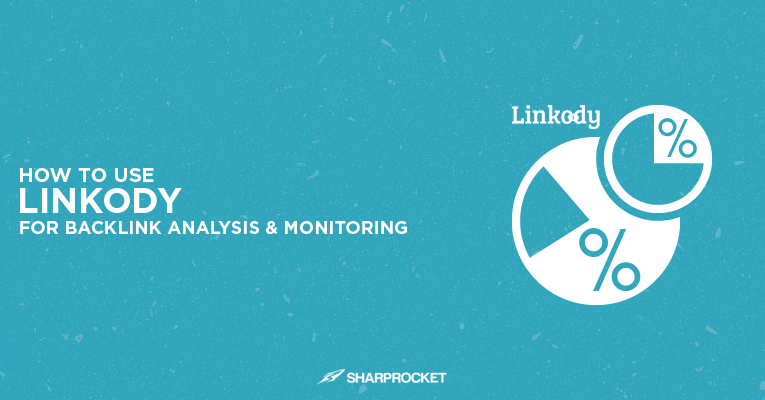
What is Linkody?
Linkody is a SaaS tool for backlink monitoring, analysis, and reporting. Since 2011, many marketers and SEOs have used the tool to monitor their websites' backlinks and even their competitors' backlinks. Simply plug in the domains of your site and your competitors and you can immediately check for all the backlinks with their corresponding metrics. The tool has the ability to run the reports for you — an ease if you've got multiple clients working with.
How Does Linkody Works?
Once you sign to Linkody, you can add your domain and your competitors' domains for analysis.
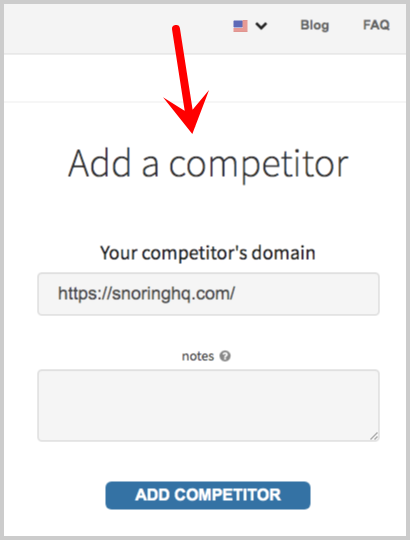 What I liked about Linkody is its ability to integrate with other tools such as Ahrefs. This gives the platform the capacity to get an appropriate metric for each backlink.
What I liked about Linkody is its ability to integrate with other tools such as Ahrefs. This gives the platform the capacity to get an appropriate metric for each backlink.
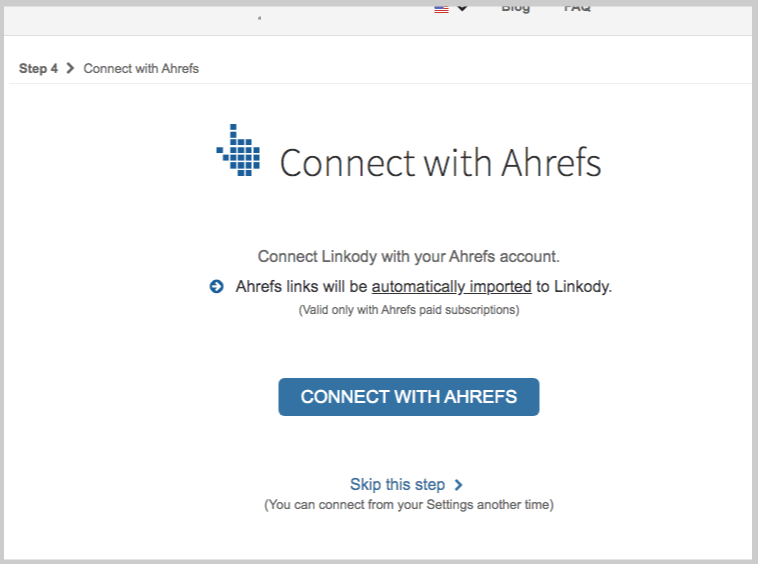
I'll be using a free account to see what the tool gives through its features.
Analyze backlinks with metrics
When you click on 'Links', it supplies with a list of all the backlinks of your site.
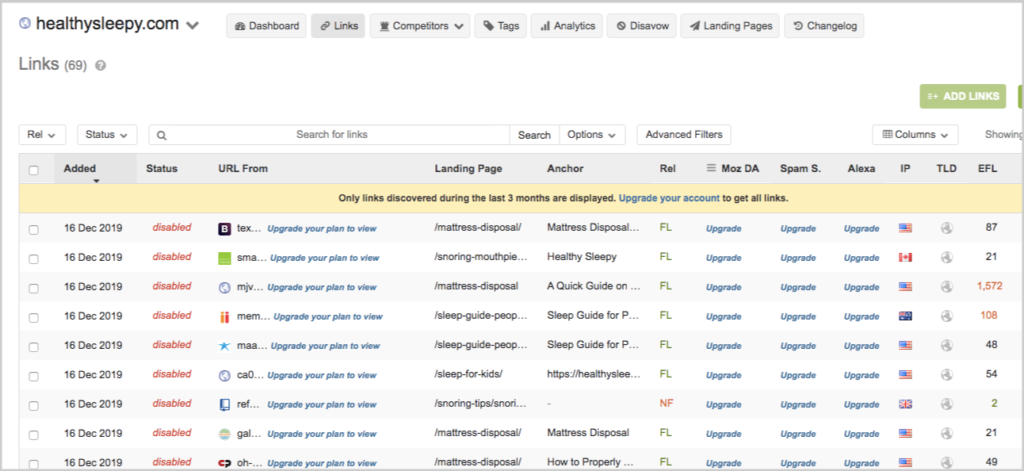
Now, Linkody only gives 3 months of data of all links if you're a free account. If you wish for an extension of let's say 6 months or 1 year, it would you to upgrade your account.
That being said, you can have details you need for links including:
- Exact URL of the link
- Landing page (page linked to by the backlink)
- Anchor text
- The date which links was discovered
- No-follow or dofollow
- Moz DA, Spam Score
- TLD and IP
Like any other tool, there are advanced filters that you can use to only include links that meet certain criteria (last live from 1 month ago).

Landing page error is a quick feature to find out any landing pages of your site (where links are pointed to). You may create another page of the site and redirect that landing page error URL. Build new links to the new landing page.

You may also want to use tags for quick filtering in the future. You can add tags for type of backlink (comment, round-up, guest post, etc…), sites/domains you've reached out matching your existing list of outreach prospects, and other important filtering analysis for both link search and outreach initiatives.
Track and monitor backlinks 24/7
Performing many SEO tasks is crucial to a marketer. That said, one should find ways to automate significant reports and data.
Linkody notifies you of any new backlinks acquired by your site and any lost backlinks. This allows you to give updates on the progress of your link building campaign.
As a link building agency, that progress report of new links matters to SEOs as you can assess the time duration (days or weeks) it takes you to get a single link from the time you've started your blogger outreach campaign.
Giving alerts also helps in making tweaks of your content according to what specific linkers are receptive to. Either you'll add additional content formats to serve the linkable audience better or make more of the same content format that appeals to the link market.
From given reports, you can get insights and make decisions to further develop your content and achieve more success in general for your link building campaign.
Get insights from competitors' backlinks
Competitor backlink research is an essential SEO task, which gives you an overview of your linkable audience market and valuable insights to your current and next set of actions in terms of content creation and outreach.
Linkody allows provision for backlinks reports for your competitors' domains. Details of your site's backlinks (metrics, landing page, anchor text, etc..) are also the same thing Linkody offers for your competitors' backlinks.
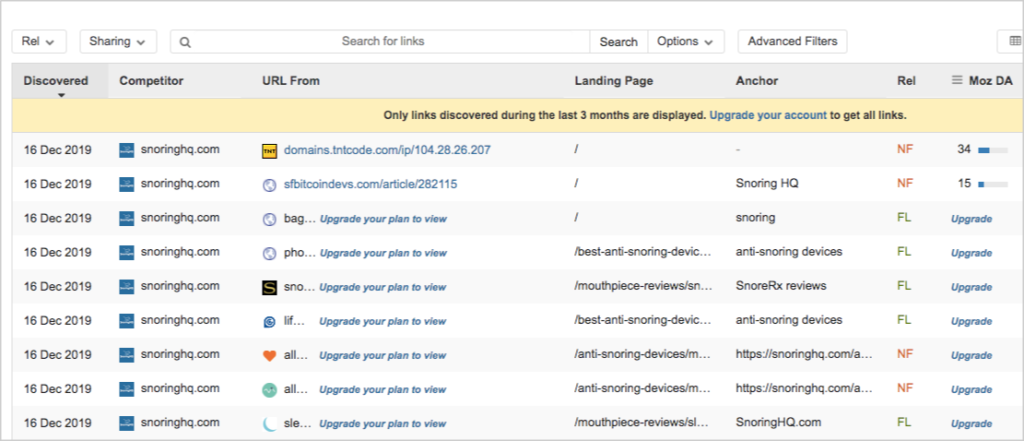
Given the list of links are sorted from the recent date the link was discovered (December 17, 2019 - since the time of this writing), you can learn insights as to the latest link building campaign your competitors are doing.
Those latest links could inform you of the type of relationships your competitor has built with its linkers — which will then provide additional insight as to the link acquisition strategy used.
For instance, if you've seen multiple links from the same website on high-quality guest articles, that itself forms a regular column for guest posting which you can tap as a guest blogging opportunity.
Identify low-value backlinks
In our guide about bad links, we've shared how to determine if a link is good or bad. Here are some of our considering factors:
- Contextual relevance
- Traffic
- Traffic location
- Link placement
- Anchor text distribution
- Metrics
You can have a few of those factors checked through Linkody (anchor text, metrics, etc…). By doing so, you can make a decision about which kinds of backlinks to avoid in your future link endeavors.
Link Analysis Made Simple
While there are a lot more features needed to add to Linkody, its free access offers many considerations and insights where you can take action for the full development of your link building campaign.
Link analysis isn't easy but can be made simple by gathering data, filtering what's needed, and taking insights into action plans. Isn't it what continuous improvement for a campaign is all about?
LinkHunter Review
Every link management campaign requires the use of tools to facilitate activities in link prospecting, qualification and outreach.
These tools can help scale link building tasks by semi-automating repetitive actions, by filtering domains and pages using certain metrics and by exporting necessary data into spreadsheets (for further filtering and qualification).
In the past, I've reviewed some link building tools, which I highly recommend, Citation Labs and Ahrefs. You can check out my individual reviews about them.
Today, I'll cover another link building tool that I've been testing and using for some of my personal projects.
Introducing LinkHunter…
LinkHunter is one of the recently launched link building tools that is founded by my good friend, Jeff Oxford. He has several years of experience handling eCommerce websites and enterprise brands such as Mastercard and Belkin.
This only ensures that he can effectively cater to a huge market of SEOs by addressing the need for lack of tool's features that'll best help improve effectiveness and efficiency of link building campaigns if integrated to LinkHunter.
Let me show you how the tool works.
After you sign up and sign in to the tool, you can quickly see the overview of your campaigns.
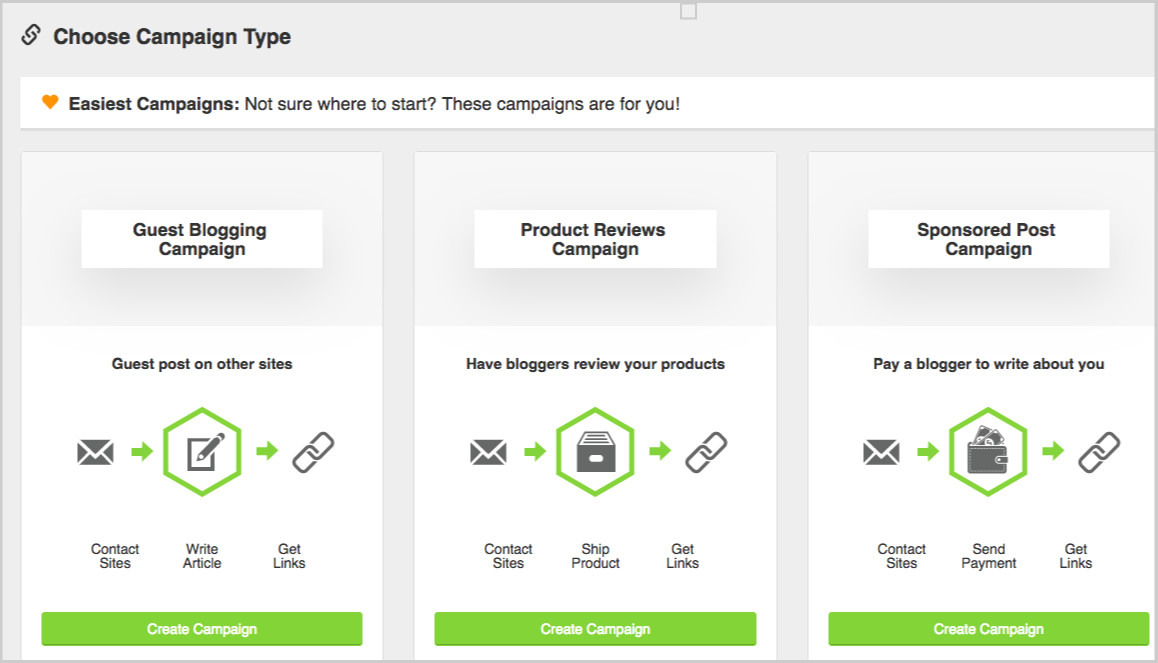
If you intend to create one, there's a button for "Create New Campaign".
You’ll have to choose for three types of campaigns:
- Easiest campaigns (includes guest blogging campaigns, product reviews campaigns and sponsored post campaigns).
- Content promotion (includes blogger outreach campaign, resource page campaign and link roundups campaign).
- Situational campaigns (giveaway campaigns, interviews campaign, podcast campaigns, and custom campaign).
The advantage of this campaign classification is that it allows you to quickly start a campaign based on a specific purpose and types of links you're trying to acquire for your site.
For example, when you want to create a campaign for guest blogging, you simply choose Guest Blogging.
For custom campaigns, you can create one by clicking Create New Campaign.
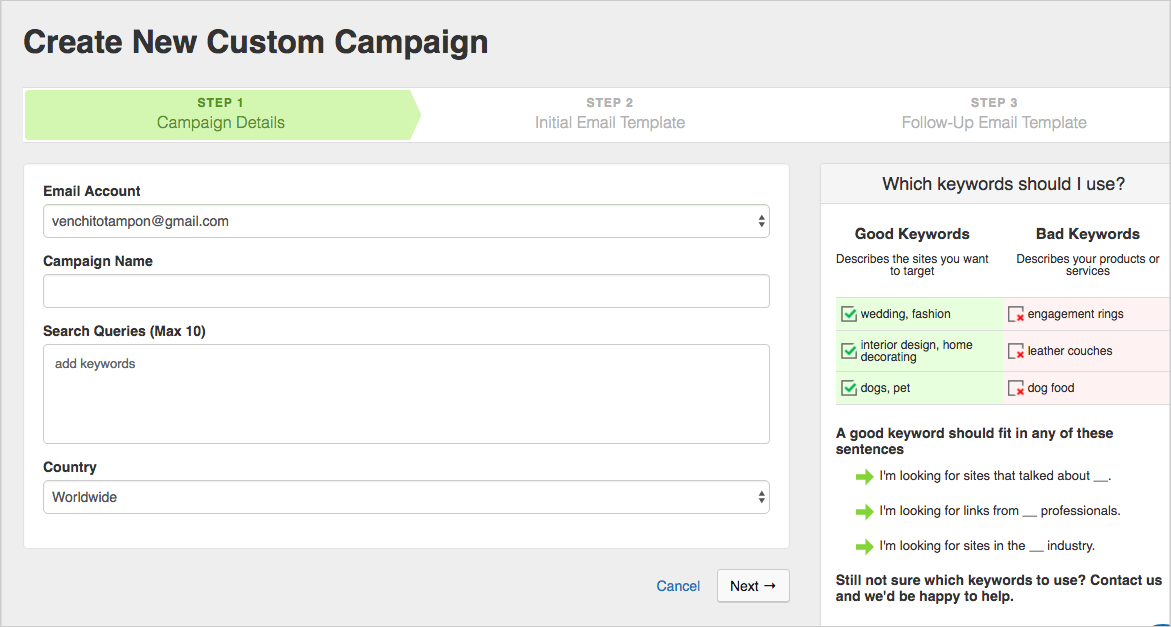
There is also a field for email account usage. It is best to integrate your email accounts (outreach emails) right at the very start so you can easily choose from the drop-down menu of email accounts when you started with the campaign.
If you wish to add your email outreach account, click on "Add Email Account".

Going back from the new custom campaign, you have to input the name of your campaign (better if it's a client name or code you create just for that website).
Next is the link prospecting platform of LinkHunter.
One of the best features of LinkHunter is their "Automated Link Prospector". This is not the exact name of the feature, but for this review’s sake, let me label it that way.
You have to input keywords that are relevant to your website and campaigns. On the right side of the platform, there's a quick guide that shows which keywords are good or bad to use.
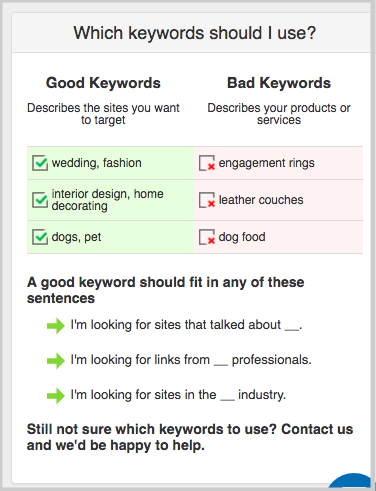
You can then choose the country of search. The tool will basically filter the search pages into the country that you prefer. By default, it's worldwide, but if you're prospecting for country-specific websites, you can choose the right country.
LinkHunter provides free outreach templates for each campaign type which is a big help for those who're new to outreach activities.
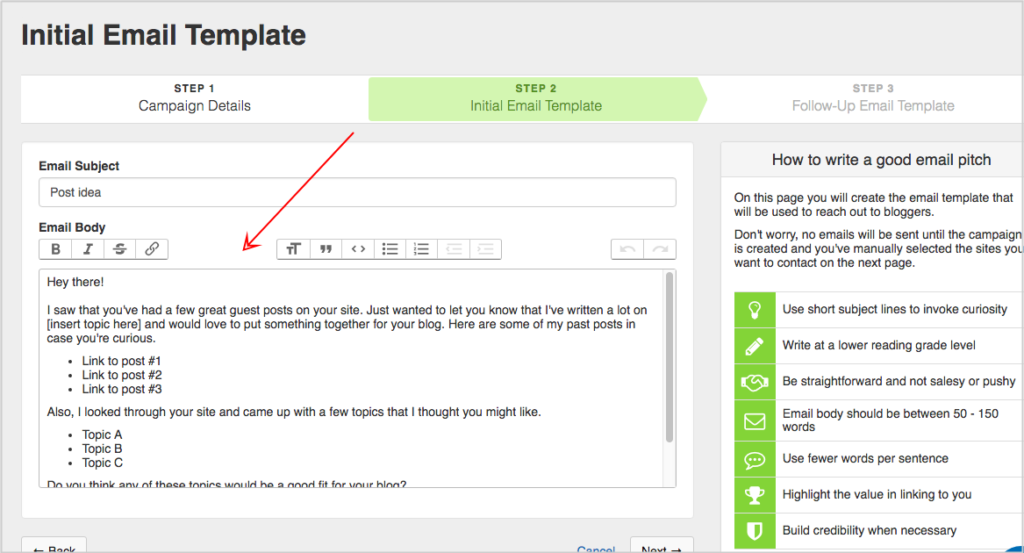
The link building tool also includes an option for follow-up emails (which can be automatically sent days after your initial emails have been sent).
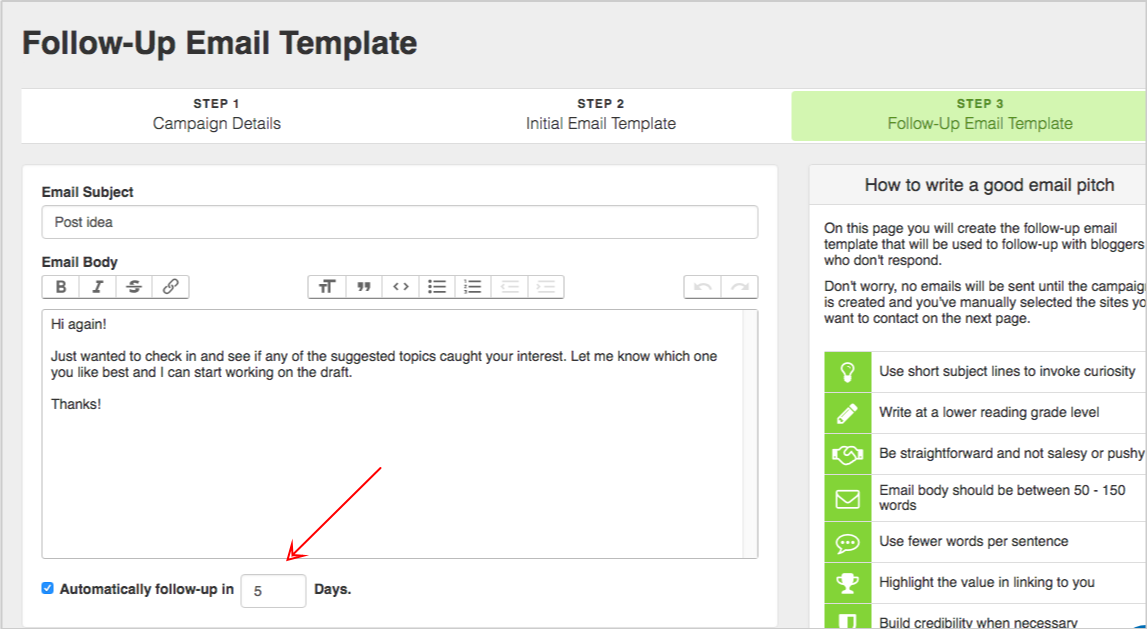
Pages automatically searched by the tool by using your target keywords and its default advanced search options for a specific campaign will now be ready to filter.
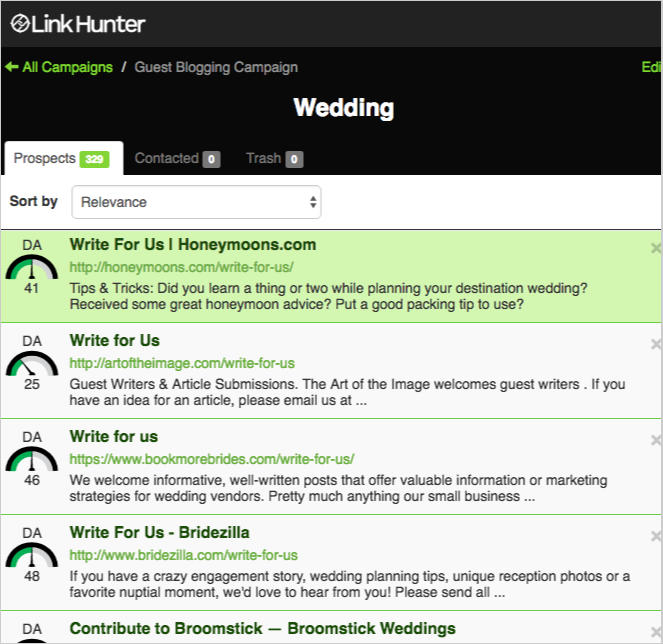
It has a sort option for relevance, domain authority and alphabetical.
Link qualification is critically important in executing a link building campaign, in that knowledge that you only choose the page that fits right for your campaign before you proceed to outreach.
LinkHunter gives you the opportunity to preview each page you want to qualify.
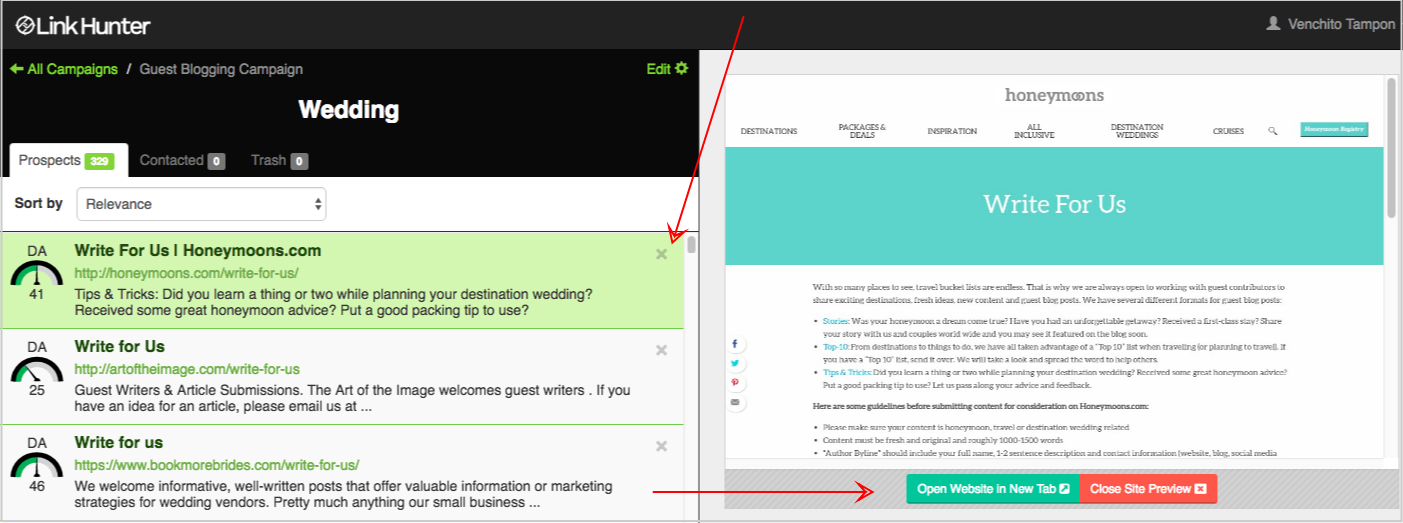
If you want to go directly to the website for further analysis, you can click the button "Open Website a New Tab".
One upside of LinkHunter is that it closes the gap between link qualification and outreach. You don't necessarily have to open a new outreach platform or your email account to send your pitches. You can go straight customizing each email at the right panel and send it right away.
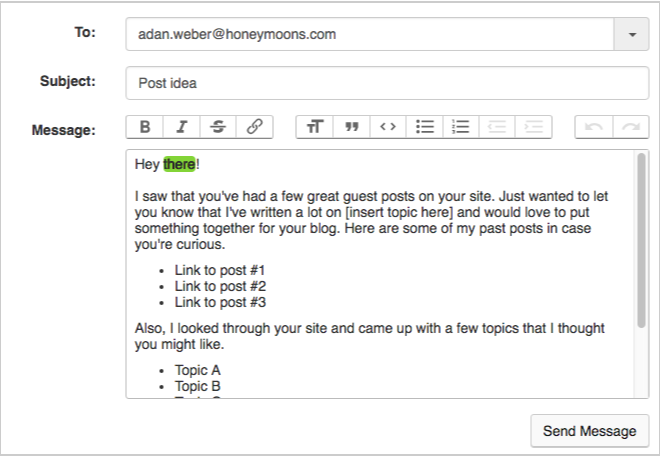
Pro tip: Choose the email that has high chances of responding to your pitch. For blogging campaigns, if there's no direct email contact person, you can choose editor@domain.com. Avoid reaching out to info@domain.com, sales@domain.com, support@domain.com and other departmentalized emails (your pitch might not be directly addressed by these departments).
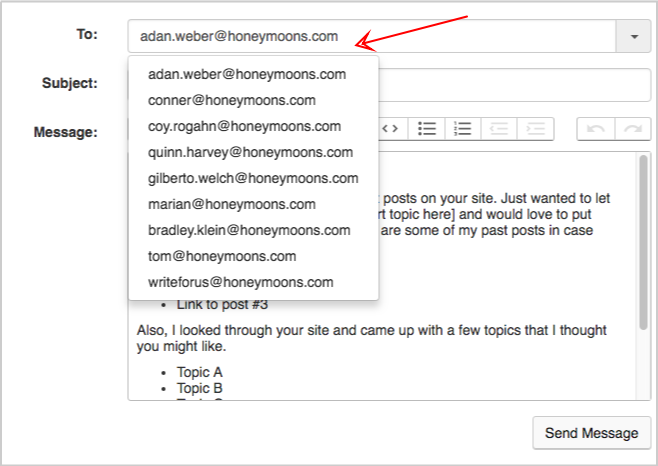
Every link building tool always has room for improvements. No exception with our product today.
What Needs Work
A few things to note, that when added as features of the product can make it more efficient to use:
1. No email scheduling - there is no option to schedules emails at later dates (both for initial emails and follow-ups). It is best to have automated follow-ups that can be sent as replies to the original emails than be sent as new emails.
2. No filtering capacity by relationship stages - there is no filtering option or list for relationship stages. There are visible stages from the campaign overview (prospects, contacted, responded and links), but there's no room to filter emails based on relationship stages.
3. Visible campaigns to certain people - campaigns are all visible to the person who logged into the tool. There are no options to make certain campaigns visible to assigned people only. I'm looking to avoid any errors committed, such as archiving campaigns by mistake.
4. Additional fields in templates - embedding images in email for creative email pitches and email signature.
5. Adding opportunities in bulk - lack of option to import a list of websites derived through other sources (competitor link research using link analysis tools or a list of link prospects through manual prospecting on search engines).
Overall, LinkHunter is best for a one-man link building team (who does every aspect of link acquisition) and small agencies who don't need to switch between link research and outreach campaigns. With further improvements, I think LinkHunter can be a highly efficient tool for link builders.
If you have questions and inquiries about this link building tool, leave a comment below.
Ahrefs Review: 9 Backlink Research Tactics (2017 Edition)
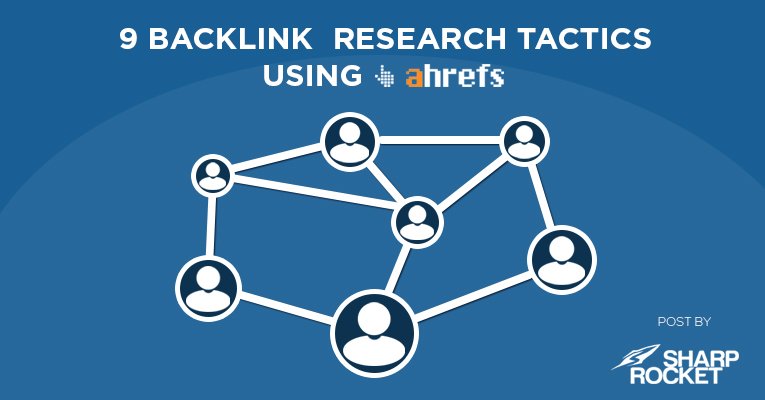
Backlink research is the most difficult part in link building.
Yes, you heard it right.
If you can’t find tons of link opportunities and qualify them based on your campaign’s metrics, you wouldn’t have backlinks.
Trust me.
The most successful link builders are the ones who are very good at finding backlinks.
In this post, I’ll walk you through how to research for backlink sources by using just one link building tool that I’ve been tested and been helpful for my entire SEO career.
Don’t get me wrong, I’m not selling anything (not an affiliate of this web product). In fact, I have some bonus resources for you. Tip: I’m opening my second giveaway today.
[yellowbox][cp_modal id="cp_id_ceb23"]Cool bonus: Download a free PDF version of this guide and get a chance to win a 1 year Standard subscription of Ahrefs[/cp_modal] .[/yellowbox]
Let’s get started.
Ahrefs has been my true friend in finding backlinks opportunities that wouldn’t just come through a normal Google search.
Here are 9 backlink research tactics to build a giant list of thousand link opportunities.
1. BUILD RELATIONSHIPS WITH NEW LINKERS
It’s easy to start a link building campaign and go directly find new ones in your way.
However, you miss out knowing about existing linkers to your website who are actually waiting to be engaged with your brand.
The question that pops up is, why would I waste time building relationships with someone who already linked to us?
The answer:
Recurring backlinks.
Getting backlinks from websites that already linked to you is a good signal for search engines that your site is a trusted source of good web information.
It’s a big advantage on your part simply because every time you publish new content on your blog, you’ll have existing linkeraties waiting to reference your post in their future content pieces.
That’s a less costly way than manually finding new link opportunities and cold reaching out to them.
ACTION ITEM:
Use the Alerts feature of Ahrefs.
Click into Alerts - Add Alert (orange button placed at the right).
![]()
![]()
Enter your domain URL.
Mode should be on a domain level.
Choose “New Backlinks” as your Scope since you only want alerts for new backlinks.
Enter your email to which alerts will be sent to.
Then set frequency either daily or weekly depending on how many times you’d like to receive email alerts. I recommend you choose daily alerts, so you can reach out to that new linker right after you received an alert for a new backlink.
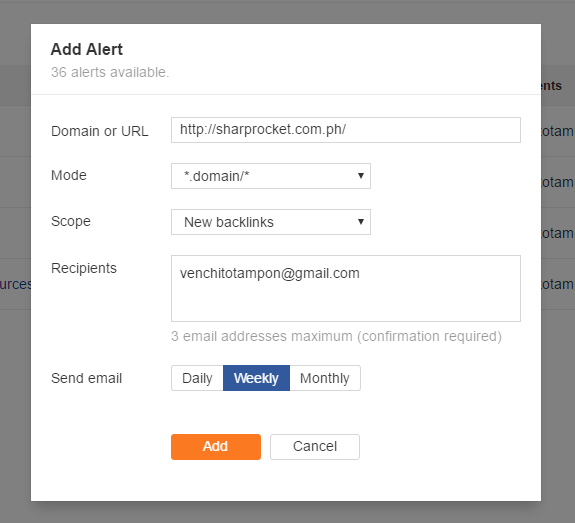
2. GET ALERTS FOR COMPETITORS' NEW LINKERS
Linker outreach is a continuous process.
If content is excellent, it’ll earn organic backlinks over time.
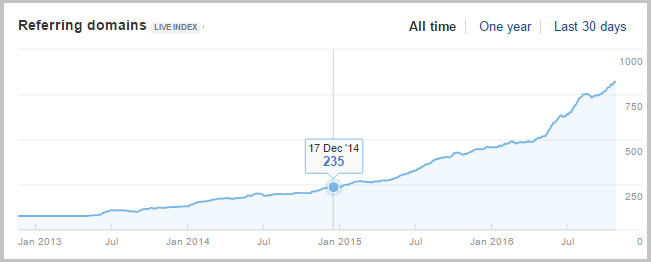
But what if?
You have just created content asset but don’t get any attraction at all.
What you need to do is look at your other publishers’ similar content and reverse engineer their newly earned backlinks.
The advantage here is that linkers of your content competitors are more receptive to initial pitches than those whose content has been published years or months ago.
Publishers who have just posted their articles are still looking for additional resources/references to add to their own content, which makes it more comprehensive.
Here’s good news for you:
You can semi-automate this process using our tool for today.
ACTION ITEM:
You can create alerts to receive an email if a backlink is built/earned by that similar content piece.
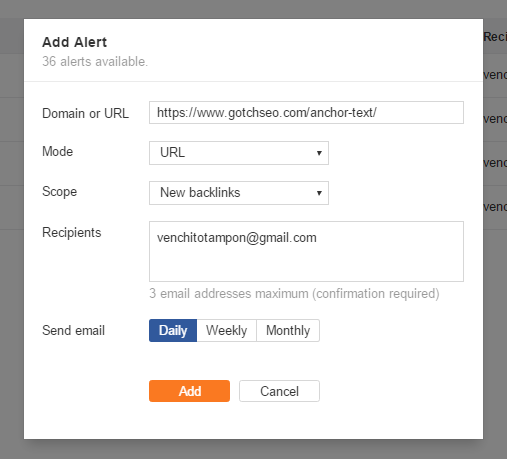
Go to Ahrefs Alerts – Backlinks
Click the “add alert” button at the right.
Enter the URL of your content competitor’s content
Choose URL as your mode.
Enter your email for Recipients.
Click daily or weekly depending on your frequency preference.
Click add.
3. RECLAIM BROKEN LINKS
You lose backlinks.
This happens, whether you like it or not.
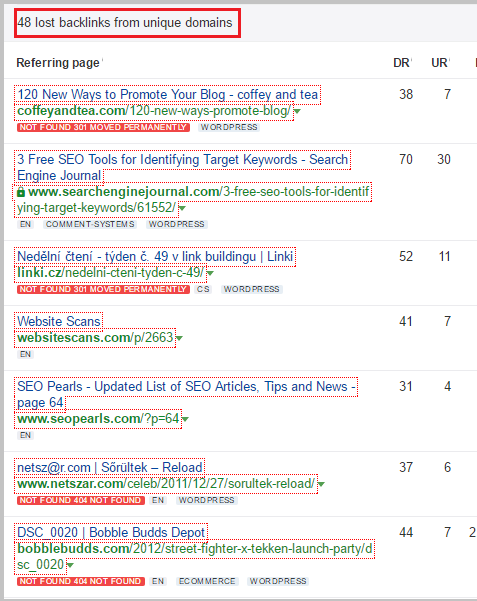
Whether a webmaster deletes a page linking to your site and/or haven’t redirected a non-existing page to a new one, you loss a backlink.
It could also be that you have a 404 page and you’re not aware that it earned/built backlinks in the past.
You can’t redirect because there’s no new similar page or simply just forgot redirection.
You can actually reclaim those broken backlinks, reach out to those past linkers and let them add a link to your other relevant page.
ACTION ITEM:
Enter your domain URL in the Dashboard or Site Explorer then click Explore.

See Backlinks section then click Broken. It will direct you into the list of broken links and your linking pages in the Anchor and backlink column.
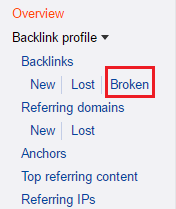
You have two options here:
- Redirect that broken page to a new but highly relevant page.
- Reach out to the webmaster and ask if he can change the link to another similar page of yours or he can simply add another relevant topic page.
4. CHECK LINKABLE CONTENT FOR BROKEN BACKLINKS
Broken link building has become popular for two reasons:
It adds value to the webmaster fixing his resource page for online users.
You get a backlink pointing to your own page.
If you want to scale broken link building, you need a tool to check if there are any broken links found on the page.
That can be your value proposition when reaching out to the webmaster, saying I found a broken resource on your page, would you want to fix it?
ACTION ITEM:
Plug in the URL of the content and choose URL in the drop down menu, then click “Explore”.

Go to Outgoing Links section and click Broken links.
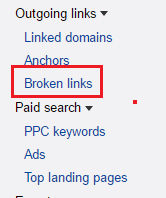
If there are no results, that means there are no broken links on the page. Take note I found it useful in some cases, so I use LinkMiner instead.
5. REVERSE ENGINEER TOP CONTENT
I’ve seen most content marketers have this common process of finding similar content to reach out to for links.

This simple process is mostly time-consuming.
You can actually semi-automate this entire process by using Ahrefs.
ACTION ITEM:
Go to Content Explorer, type in your target keyword or niche topic, then click “Explore”.

Recommended options:
Publish: it should be all time.
Language: I prefer English, if you’re looking for English language sites.
Highlight unlinked domains: click this button and enter your domain to highlight pages that haven’t linked to your webpage.
Relevance: Sort it by traffic, so you can see first high-traffic websites.
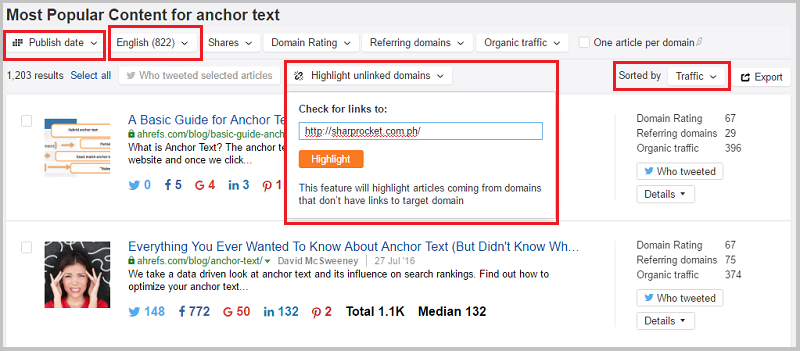
6. FIND BLOG AUTHOR OPPORTUNITIES
Using Google searches to find guest blogging or content distribution opportunities would still require filtering using metrics you prefer (DA, SEMRush traffic, TF, CF, etc..)
If you do searches for “guest post by” “author’s name” or “written by” “author’s name” plus any other similar terms, Google will give you results of different types and not all of them are entirely guest posts, some could be “business profiles”, citations, so on and so forth.
Ahrefs has its advanced option of seeking for industry blogs that you can reach out to for content placement.
ACTION ITEM:
Go to Content Explorer.
![]()
Type in author:name
Replace name with a popular guest blogger or an industry content contributor.

Sort websites by Traffic, if you’re aiming to build exposure to websites that already market themselves (with good traffic in other words).
This is optional. Click Highlight unlinked domains, then add your domain to only see websites that you haven’t acquired backlinks yet.
7. EXPAND YOUR LINK LIST WITH AUTOMATED "AROUND"
Glen Allsopp shared this “around” search operator in his post about advanced link building, which all link builders can use to increase their link prospect rate.
Quite interesting because I’ve been building backlinks for years, but haven’t discovered that yet.
Anyway, the idea with using around search operator is to find link prospects that includes two words that are in close proximity but are not together. For example, submit and "guest post" in this search query are not together but both are in close proximity not more than 4 words apart.
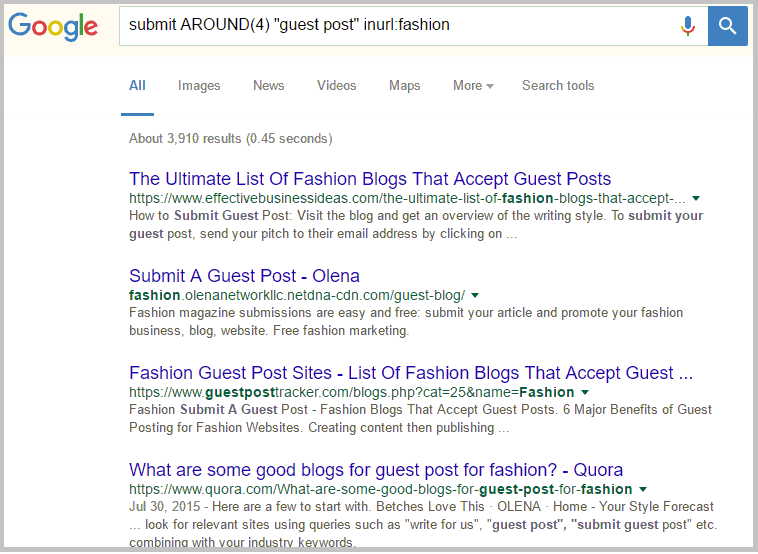
Ahrefs allows you to do this.
ACTION ITEM:
Go to Content Explorer.
Type in your target keywords or keyphrase.
For example, if you are looking for branded mention opportunities in your industry, you can try using "BRAND" "keyword"~5. For example, "ahrefs" "link building"~5. Then choose “Title” in the drop down menu.
This gives you results that have the “keyword “health” and with words “submit article” that are 4 words apart from each other.
8. STRATEGIC COMPETITOR LINK ANALYSIS USING LINK INTERSECT
I’ve seen most competitor link analysis fail for two reasons:
One is that link builders don’t know how to identify the right competitors. They only like to dig into links pointing to top sites like Forbes and Huffingting Post, then analyze how those links were built. Sites like these are authority in all industries and that’s enough for them to rank and be linked to heavily by publishers.
They are not your competitors, if you are still starting to build your own brand, find those who are ranking on similar content but haven’t much gained higher authority rate. Know if both of you are targeting the same audience in the same buyer’s journey. Look at their SEMRush traffic and total domain referring domains.
Know if it’s realistic to compete with them.
Second reason why competitor link analysis fail is because some think that creating a list of backlink opportunities of all competitors is the starting and end points of the process.
There’s a reason why it is called link analysis, because obviously you want to analyze how those links were built and/or earned. What content type is linkable in nature in your industry? How do the audience resonated with the piece and why did it go viral, if it did?
These are just a few questions you should ask yourself before you get your hands dirty with link building.
ACTION ITEM:
Once you’ve identified who your real competitors are.
Go to Ahrefs, click into Tools and choose “Link Intersect” in the drop down menu.

Include all your competitors’ domains in blank sections under “Show me who is linking to all of the below targets”. You can use the plus button if you have more than three competitors.
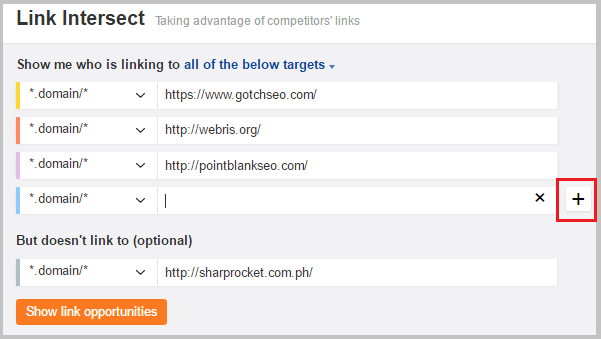
Then click “Show link opportunities” button.
This is what results look like.
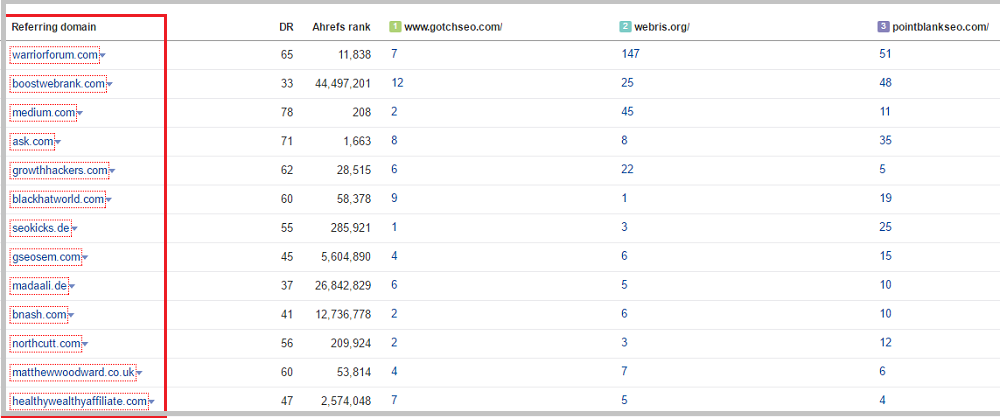
I can go forward to acquire same links and mentions from top websites that all linked to my competitors. For example, I can then create a WarriorForum profile and start answering questions there and posting relevant threads with referential links to my relevant content.
9. USE BATCH ANALYSIS FOR SCALABILITY
What I simply like about Ahrefs is its ability to scale processes. If you’re working in an agency, you know it is vital to get all things done as soon as possible to bring in more results for each client’s link building campaign that you handle.
The batch analysis feature of Ahrefs can help you generate multiple backlink repots at once by simply entering a list of domains or URLs you’d like to reverse engineer pointing backlinks to.

If you are trying to see how your website performs in terms of link acquisition compared to your competitor sites, you can use batch analysis to quickly see the gap between your site’s backlink performance and from your competitors.
You can get some insights on different things, such as:
- Number of referring domains each competitor have acquired
- Types of links they’re getting (do they have some .gov. or .edu backlinks?)
- Do they have a diverse backlink profile?
If you are executing broken link building at scale, batch link analysis is very useful in identifying which broken page can be recreated or upgraded to another version of the content.
By inserting all URLs of broken pages you’ve found in your list and sorting them from highest to lowest referring domains, you’ll then see which broken page has acquired the highest number of backlinks.
See if that page is feasible to be recreated, use all resources to get it published on your site and reach out to those who have linked to the piece.
Bring this Ahrefs Review guide anywhere...
[cp_modal id="cp_id_ceb23"]
 [/cp_modal]
[/cp_modal]
Now It’s Your Turn…
How do you use Ahrefs for your daily or weekly link building use?
Or maybe you have a question on how to implement any of the backlink research tactics in our above list?
Either way, leave a comment quick below.
I'll be more than happy to reply to comments and answer questions.
So if you have a question, insight or new tactic, leave a comment right now.
Link Acquisition and Backlink Audit with Link Assistant and SEO Spyglass
Link building hasn’t changed a lot in the past few years. Still, the following concepts are still valuable with how we should view link building as part of our online marketing strategy:
- You need to diversify links - either an asset you create or your product
- You need to put this asset in front of a relevant audience who have the ability to share it
- You need consistency - one new asset every year is unlikely to cut it
- Anything that scales is at risk
With that being said, here are a few common yet still very important activities needed to execute in a link building campaign – with the help of SEO Spyglass, an SEO Analysis tool and Link Assistant, a link building tool from the SEO Powersuite package.
Backlink audit
Backlink audit has been an integral part of the regular activities of search marketers, primarily because they want to make sure that backlinks earned/acquired have low penalty risks and shouldn’t impact negatively to the website’s health.
One of the cool features of SEO Spyglass (a premium product of SEO Powersuite package) is the link risk audit, which makes the said process easier for marketers.
Elements that you have to check when executing a backlink audit process:
- Branded keywords VS commercial keywords
- Sitewide VS non-sitewide links
- Homepage VS deep links
- Type of content on page (where links are placed in)
- Site relevance
Here are a few things you need to consider in order to have a healthy backlink profile:
- Stop scaling link building tactics in order to acquire hundreds of links every month (remember link building is heading towards quality and usage signals specifically on content consumption rather than on the amount of backlinks built each month).
- Stay away from link partners that allow paid (link buying) and/or link exchanges (most of the time, they’ll have high penalty risks).
- Head towards link earning rather than link building alone. Start by publishing content pieces targeted to different segments of linkable audiences, then slowly build a community out of it (build not just link partners but social/brand followers who will be willing to share/link to every new content you published on your blog).
- Don’t push potential linkers to link to your page/site with specific commercial keywords. Let them choose what keywords they’ll use in external linking.
- Monitor incoming backlinks using tools like Monitor Backlinks or LinkAssistant, in order to protect your website from negative SEO attack.
Disclaimer: I am not an affiliate of SEO Powersuite (I will not get any commission from your purchase.
Targeted link prospecting
Listing down multiple relevant link opportunities these days don’t matter anymore. Becoming more targeted even with a short list of link partners would give better results when done right.
Targeted link prospecting isn’t a rocket science, as you can simply use link building tools like Link Assistant in order to grab domains that linked to your competitors but haven’t link to your website/page.
With LinkAssistant’s tool, you can easily sort the list of link partners gathered through link research, according to set metrics of your campaign (Domain PR/ Page PR/ Alexa Rank – a few links data available in the tool).
When data for all link prospects are scraped, you can proceed straight to outreach, since Link Assistant would easily give you possible emails that you can contact to for link request purposes (I consider this process as one of the good features of Link Assistant).
Another link search method that you can use is harvesting all URLs located on a specific webpage.
So if you have a list of resource pages, then pages/URLs located in those links pages are potential link partners that you can add to your spreadsheet.
Link Assistant allows you to do that by simply choosing the “harvest all URLs located on the webpages you specify” option.
So if you’re doing broken link building, then this is a great way to prospect for more link opportunities.
Here are a few more methods to keep your link prospecting activity targeted as possible:
- Be more specific with your link phrases, instead of searching for “gardening” inurl:blog in Google, try to use how to build a garden shed inurl:blog inanchor:shed – this will leave you more targeted potential linkers since they may have published a post on gardening shed and might include your resource guide in their content pieces.
- Find industry blogs instead of company/corporate domains, given that they are more receptive in email outreach than staff members who are working on a day job.
- Use MillionShort to remove the top popular websites in search results (generic top domains that rank in multiple keywords – e.g. Examiner.com).
- Get interested industry linkers/publishers from page 4,5 or 6 of search results. Given that they don’t usually receive several emails from bloggers/content creators, they’re more likely to respond to your outreach email, as compared to websites ranking in the first or second page.
- Use related search phrases (at the bottom of the search results) as your link phrases to find more targeted link partners.
- Follow external links in target posts and resource lists, and add them to your own link prospecting sheet.
Other Useful Resources:
- 30 Free SEO Tools and How to Use Them for Link Prospecting
- 12 Link Search Tactics to Prospect Thousands of Link Opportunities
SEO Powersuite has other two products, Website Auditor and Rank Tracker. While SEO SpyGlass and Link Assistant are heavily used for link building, the other two tools are no less important for well-rounded SEO strategy.
If you are looking for a link building agency to partner with you, then don't hesitate to contact us today.
6 Content Analysis Methods Using Buzzsumo
Buzzsumo is relatively new to the market when I first saw its features that are useful in content ideation and content promotion activities. The easy to use dashboard and navigation makes the tool highly regarded by many marketing professionals as one of the best content marketing tools in 2014 both for advanced and new content marketers.
Disclaimer: I am not an affiliate marketer of Buzzsumo but just want to share my knowledge with you on how this product can help you get tremendous results for your content marketing campaign.
Content analysis is searching for specific content assets (either hosted on your site or on other brands) and identifying and analyzing their potential business values in order to set goal-oriented actions for your campaign.
In order to deeply this topic, let me share and discuss to you 17 content analysis methods that you can apply using Buzzsumo.
1. Insight-driven analysis based on other brands' content assets
Competitive analysis is the most common and underrated techniques to improve current set of actions based on insights formulated from analyzing other brands’ existing strategy or tactics.
This can easily be performed using Buzzsumo’s top content feature.
Few things to consider in order to get the most value out of the search results (domain’s internal pages):
- Filter the results by content type if your website is only hosting one or two types of content (e.g. news sites covering text-based content or video blogs publishing video posts).
- Sort the results by specific social shares (i.e. Twitter shares). Base it on your current social media stats. If you are getting several shares on Twitter, then you can push your other social profiles (Google+, Facebook, Pinterest, etc..) to leverage your overall social campaign. If you’re not really concerned with just one social site, then simply sort the results by total shares.
- If the site covers general topics in your space, you can be very specific with the results by adding keywords to the search bar (e.g. kaiserthesage.com “content marketing”)
- See if the post/page is consistently earning links and shares (this is a good signal that the site has an outstanding position in SERPs).
One other tool that I’m very much acquainted with Buzzsumo is its domain alert feature.
The feature allows you to send alerts to your email every time the brand/site was mentioned on other blogs.
You can set the alert by realtime or daily digest (daily digest can save you time, good for productivity, since you can just read all emails once every minute/hour of the day).
You can also use link feature if you want to receive alerts about links generated on other blogs pointing to the domain/site you want to monitor regularly.
I suggest you use the search scope, “links to any page on the domain” so you don’t have to create another alert to monitor the other pages of the domain (in case you use the search scope, “links to the exact url”.
Insights from other brands’ content assets that you can consider for your own campaign:
- See if your competitors or domains that you regularly monitor are focusing on producing high quality content and earning links or are just building links from other blogs (guest posts) (links generated by your competitors can be tracked using Buzzsumo’s link feature). Replicate their strategies or invest on two activities: high quality content production and active content promotion.
- To which level of readers are they tailoring their content to? Check out social shares of their content, look at the # of social followers of their sharers and from that, you can determine the level of audience that they target (either common readers or influencers). This is not an absolute metric but a good factor to consider.
- Identify their most engaged content type. There are times that a blog will have most successful social performance on its video content rather than on other content types (text-based), because it is what the community is interested to consume among all content types.
2. Focusing on author relationships rather than on hosted domains
Marketing is generally focused on relationships. Any type of relationships when built with strong foundation can largely impact one campaign’s results.
So it is important to not just focus on creating a huge list of domains but on investing on relationships with authors/people whom you want to engage with for deals or content partnerships.
If you still don’t have a spreadsheet of authors’ names, you can apply any of the methods to create your own database of authors:
- Do a Google search for industry personalities (e.g. “authors” OR “journalists” OR “bloggers” “industry”). You will commonly see blog posts curating lists of the best blogs/bloggers in 2014 or previous years. Check if listed blogs still exist and jot them down in your note/sheet.
- Use Alltop or DMOZ to find popular/authority blogs in your space and identify the owners of those blogs by looking at the site’s branded pages (about us, team us, blog section, etc.).
- Identify multiple authors of a popular blog (where several contributors are allowed) by using the domain-specific filter of Buzzsumo (domain.com).
Actionable points to analyze author relationships:
- Utilize contributed content by authors to spark interests in conversations. Adding the site’s URL (where the author contributed his/her content) to your pitch will signify commonality between you and the other author.
- See what topics are being discussed by the author on his contributed blogs and niches he’s penetrating (e.g. entreprepreneurship, marketing, startups) so you can use this as your own advantage of widening your content outreach and connecting to other niches’ community as well.
- Set author alert (Buzzsumo’s feature) to track future posts of the author. Engage with the author by sharing his new posts on social and/or linking to his future content. Letting him know your pre-outreach activities can secure positive response from him.
3. Identifying commonality in social sharing by popular authors or brands
Brands that are connected to each other always have at least one similar attitude or characteristic in terms of sharing popular content and linking to useful and trending posts in the community.
Using social’s commonality can help you identify which posts had been shared by popular authors/brands, which only proves the quality of the content.
Buzzsumo can help you identify the most-shared content in your space, basing it on the common shared post by popular brands. Shared all functionality of Buzzsumo allows you to do that.
Few things to keep in mind in this content analysis approach:
- Note websites that are not hosted by social profiles you included in the query (shared:@hubspot, @moz, @buzzsumo). Getting exposure on those websites have high amplification rate given that there is a solid community composing of popular brands/authors/influencers in the industry that are ready to share new posts published on those websites.
- Find other social influencers who’d shared the content (use the view sharers feature). These influencers when engaged can become your potential brand partners/evangelists, so keep an eye on them.
- Look for potential linkers (use the view backlinks feature). Because content listed in the search results are highly recommended by popular brands or social influencers, the link acquisition rate (in terms of link earning) in the blog where content is published is higher.
4. Tapping engagement signals for press coverage
There are thousands of content managers and outreach specialists that aim to get their brand stories covered on top news sites (whether local or niche-specific). However, there are only a few companies that are able to penetrate the press market because of not being able to create a strategy that will benefit not only their websites but journalists they’re trying to connect with.
Content prospecting and analysis for press coverage is now easy with Buzzsumo. Filtering the results by journalists will help you find top press professionals in your industry. Pro tip: If you are working in the local scene, filter the results by location as well (type in the country or city in the left side of the dashboard).
To find more journalists, type in the domain’s URL in the search bar plus a niche phrase/keyword. In the given example, you can use www.wsjd.com “link building” to search for more journalists working on WSJ and writing about the same topic.
Engagement activities that you can try out for effective press coverage:
- Analyze what type of links and which blogs journalists are most commonly sharing on social platforms.
- Use the commonality function of Buzzsumo (shared:@hubspot. @moz, @buzzsumo) to find posts commonly shared by journalists you’ve found in the dashboard’s search results. You can focus your pitch on what interests your target content amplifiers (journalists) to increase response rate in your outreach campaign.
- Tweet journalists (with personalization) straight from Buzzsumo’s dashboard.
5. Leveraging topical analysis in a regular basis
Consistently monitoring the changes happening in your industry’s content environment is an effective tactic to improve your brand’s current content strategy.
Using Buzzsumo, you can analyze content in your space and use the gathered data to make decisions that can refine your content marketing campaign.
Notable features of Buzzsumo’s content analysis feature:
- Average shares by network – helps you to focus on one or two social networks that have high chances of amplifying your future content pieces.
- Average shares by content type – gives you a more specific overview of what social platforms (by content type) you should really invest your time and effort in content promotion.
- Total shares by date published – provides you insights on what day(s) you should schedule your social updates and earn the maximum engagement signals for your content.
- Average shares by content length – you can consider this data when creating your content to ensure higher engagement performance on social sites.
- Most shared domains by networks – domains in the graph are good to monitor for future link opportunities. Submitting content to those sites can give a boost to your brand’s exposure and social following.
- Popular topics for content related to “keyword” - you can gear your content creation activity towards these popular topics so you can quickly attract exposure and social shares for your content/brand.
- Top pieces of content for “keyword” – do a competitive analysis (identifying social sharers and potential linkers) to understand the behavior of your linkers and what type of content is already working effective in your niche.
6. Setting content and link alerts to improve current content strategy
In online marketing, setting email alerts for your campaigns is one of the best strategies to stay up-to-date with industry changes and learning from what works with other brands and related niches.
Getting inspirations from other niches/companies can help you make unique actions that can guarantee results for your brand. You may want to check out this post on SiegeMedia about 10 content creators that you can inspire your content marketing.
One way to constantly seek for inspirations is to set an alert system in your email (monitoring new posts, brand mentions and link opportunities in your space).
Buzzsumo has a keyword/brand alert feature that can help you keep track of content and link opportunities.
Things that you can do with Buzzsumo’s keyword/brand alert:
- Track targeted keywords and related industry phrases to open up opportunities for link outreach (new posts are more inclined for changes than old/outdated posts – so make sure you perform link request outreach after you’ve tracked new posts).
- Be broader with keyword monitoring. You can also track entity names and associations to widen your reach. This is effective if you have a content that discussed tools or products in your industry.
- Don’t forget to find new sites that publish regular roundup posts. Bloggers who’re still building their brands from scratch are willing to commit their time for brand partnerships.
Content analysis can provide great insights for your content marketing campaign which are vital to improve your content assets in terms of link acquisition, social performance and branding.
Other Resources:
If you liked this post, you can subscribe to this blog or follow me on Twitter and Google+.
